Abstract
Background
Intrahepatic cholestasis of pregnancy (ICP) is a liver disorder that can develop in pregnancy. It occurs when there is a build‐up of bile acids in the maternal blood. It has been linked to adverse maternal and fetal/neonatal outcomes. As the pathophysiology is poorly understood, therapies have been largely empiric. As ICP is an uncommon condition (incidence less than 2% a year), many trials have been small. Synthesis, including recent larger trials, will provide more evidence to guide clinical practice. This review is an update of a review first published in 2001 and last updated in 2013.
Objectives
To assess the effects of pharmacological interventions to treat women with intrahepatic cholestasis of pregnancy, on maternal, fetal and neonatal outcomes.
Search methods
For this update, we searched Cochrane Pregnancy and Childbirth’s Trials Register, ClinicalTrials.gov, the WHO International Clinical Trials Registry Platform (ICTRP) (13 December 2019), and reference lists of retrieved studies.
Selection criteria
Randomised or quasi‐randomised controlled trials, including cluster‐randomised trials and trials published in abstract form only, that compared any drug with placebo or no treatment, or two drug intervention strategies, for women with a clinical diagnosis of intrahepatic cholestasis of pregnancy.
Data collection and analysis
The review authors independently assessed trials for eligibility and risks of bias. We independently extracted data and checked these for accuracy. We assessed the certainty of the evidence using the GRADE approach.
Main results
We included 26 trials involving 2007 women. They were mostly at unclear to high risk of bias. They assessed nine different pharmacological interventions, resulting in 14 different comparisons. We judged two placebo‐controlled trials of ursodeoxycholic acid (UDCA) in 715 women to be at low risk of bias.
The ten different pharmacological interventions were: agents believed to detoxify bile acids (UCDA) and S‐adenosylmethionine (SAMe); agents used to bind bile acids in the intestine (activated charcoal, guar gum, cholestyramine); Chinese herbal medicines (yinchenghao decoction (YCHD), salvia, Yiganling and Danxioling pill (DXLP)), and agents aimed to reduce bile acid production (dexamethasone)
Compared with placebo, UDCA probably results in a small improvement in pruritus score measured on a 100 mm visual analogue scale (VAS) (mean difference (MD) −7.64 points, 95% confidence interval (CI) −9.69 to −5.60 points; 2 trials, 715 women; GRADE moderate certainty), where a score of zero indicates no itch and a score of 100 indicates severe itching. The evidence for fetal distress and stillbirth were uncertain, due to serious limitations in study design and imprecision (risk ratio (RR) 0.70, 95% CI 0.35 to 1.40; 6 trials, 944 women; RR 0.33, 95% CI 0.08 to 1.37; 6 trials, 955 women; GRADE very low certainty).
We found very few differences for the other comparisons included in this review.
There is insufficient evidence to indicate if SAMe, guar gum, activated charcoal, dexamethasone, cholestyramine, Salvia, Yinchenghao decoction, Danxioling and Yiganling, or Yiganling alone or in combination are effective in treating women with intrahepatic cholestasis of pregnancy.
Authors' conclusions
When compared with placebo, UDCA administered to women with ICP probably shows a reduction in pruritus. However the size of the effect is small and for most pregnant women and clinicians, the reduction may fall below the minimum clinically worthwhile effect. The evidence was unclear for other adverse fetal outcomes, due to very low‐certainty evidence. There is insufficient evidence to indicate that SAMe, guar gum, activated charcoal, dexamethasone, cholestyramine, YCHD, DXLP, Salvia, Yiganling alone or in combination are effective in treating women with cholestasis of pregnancy. There are no trials of the efficacy of topical emollients.
Further high‐quality trials of other interventions are needed in order to identify effective treatments for maternal itching and preventing adverse perinatal outcomes. It would also be helpful to identify those women who are mostly likely to respond to UDCA (for example, whether bile acid concentrations affect how women with ICP respond to treatment with UDCA).
Plain language summary
Interventions for treating intrahepatic cholestasis of pregnancy (ICP)
What is the issue?
A liver disorder arising during pregnancy, most often in the last three months, commonly causes itching (pruritus), which can be extremely distressing to the pregnant woman. Bile acids accumulate within the liver and the blood concentration of bile acids is raised, although not always apparent with the symptoms. The signs and symptoms often resolve spontaneously within the first few days after birth, and usually within four to six weeks. Although the condition is poorly understood, there is an association with preterm birth and stillbirth among women with the severest forms of the disease. Many treatments have been suggested. This review is an update of a review first published in 2001 and last updated in 2013.
Why is this important?
The itching can be disabling. Stillbirth and preterm birth are serious adverse outcomes which are important to prevent.
What evidence did we find?
We searched for evidence in December 2019, and identified 26 trials involving 2007 women. The trials assessed nine different interventions, but for most of them the trials were small and had a high risk of bias; we were therefore unable to draw firm conclusions. However, the most widely‐used treatment, ursodeoxycholic acid (UDCA), for which we identified seven trials (1008 women), included two trials at low risk of bias (755 women). There is now evidence that UDCA probably reduces itching (moderate‐certainty evidence). However, the size of the effect is small and for many pregnant women may not be worthwhile. The evidence for an effect of UCDA on stillbirth or fetal distress is unclear, mainly due to limitations in study design and imprecise results (very low‐certainty evidence).
What does this mean?
Although UDCA has not been shown to prevent the adverse outcomes of intrahepatic cholestasis of pregnancy, there is no other effective treatment for this condition, and there is a small reduction in maternal itch.
More high‐quality trials of other treatments are needed in order to identify what is effective for maternal itching and to prevent adverse outcomes. It would also be helpful to identify those women who are mostly likely to respond to UDCA (for example, whether bile acid concentrations affect how women with ICP respond to treatment with UDCA).
Summary of findings
Summary of findings 1. Ursodeoxycholic acid (UDCA) versus placebo.
| Ursodeoxycholic acid (UDCA)compared with placebo | ||||||
|
Population: pregnant women with intrahepatic cholestasis Settings: UK (2 RCTs), Chile, China, Finland, Italy, Sweden (one RCT each) Intervention: UDCA Comparison: placebo | ||||||
| Outcomes | Illustrative comparative risks* (95% CI) | Relative effect (95% CI) | No of participants (studies) | Quality of the evidence (GRADE) | Comments | |
| Assumed risk | Corresponding risk | |||||
| Placebo | UDCA | |||||
| Pruritus score* (points out of 100 mm visual analogue scale) |
The mean of the worst pruritus score in the placebo group ranged from 56.9 to 61.9 | The mean of the worst pruritus score in the intervention groups was 7.64 lower (9.69 lower to 5.60 lower) | 715 (2) | moderatea | *worst score in previous 24 hours | |
| Stillbirth | 9/1000 | 3.51/1000 (0.72 to 17) | RR 0.33 (0.08 to 1.37) | 955 (6) | very lowb,c | There was a small number of events and a wide CI |
| Fetal distress/asphyxial events | 117/1000 | 82/1000 (41 to 164) | RR 0.70 (0.35 to 1.40) | 944 (6) | very lowb,d | |
| *The basis for the assumed risk (e.g. the median control group risk across studies) is provided in footnotes. The corresponding risk (and its 95% confidence interval) is based on the assumed risk in the comparison group and the relative effect of the intervention (and its 95% CI). CI: Confidence interval; MD: Mean difference; RR: Risk ratio; UDCA: ursodeoxycholic acid. | ||||||
| GRADE Working Group grades of evidence High quality: Further research is very unlikely to change our confidence in the estimate of effect. Moderate quality: Further research is likely to have an important impact on our confidence in the estimate of effect and may change the estimate. Low quality: Further research is very likely to have an important impact on our confidence in the estimate of effect and is likely to change the estimate. Very low quality: We are very uncertain about the estimate. | ||||||
aWe downgraded one level for serious imprecision, due to there being only two trials, one relatively small. b We downgraded two levels for very serious limitations in study design, due to two RCTs not having adequate randomisation and a third RCT with high losses to follow‐up. cWe downgraded one level for serious imprecision, due to a small number of events and wide confidence intervals. dWe downgraded one level for serious imprecision, due to wide confidence intervals.
Background
Description of the condition
Introduction and definition
Intrahepatic cholestasis of pregnancy (ICP: also known as obstetric cholestasis) is a pregnancy‐specific liver condition appearing most often in the third trimester. It is a relatively benign but often very distressing condition for the woman, but it may adversely affect fetal outcome, as seen by associations with preterm labour, fetal distress and stillbirth, particularly in severe cases. The diagnosis of ICP is based on a combination of pruritus (itching), which classically affects palms and soles but may become generalised, but without a rash apart from excoriations, together with increased concentrations of serum bile acids (values usually at least 10 μmol/L, or above the upper limit of the normal range for the local laboratory). Increased concentrations of serum transaminases (e.g. alanine aminotransferase (ALT)) greater than 50 U/L are often seen. There is now movement towards an international consensus that the diagnosis should only be made if serum bile acids are increased, irrespective of whether serum transaminases are increased, either alone or in combination.
Clinical pruritus may precede the development of abnormal biochemistry (Kenyon 2001). Following birth, there is usually spontaneous relief of signs and symptoms within the first few days, although occasionally resolution may take several weeks (EASL guidelines 2009). Ongoing clinical symptoms and abnormal liver biochemical values for longer than six weeks after birth may not be consistent with a primary diagnosis of intrahepatic cholestasis of pregnancy, and other causes should be considered. Histopathology of the liver shows non‐specific mild intrahepatic cholestasis with accumulation of bile pigments in hepatocytes and bile duct swelling (Heikkinen 1981). Accumulation of bile acids within the liver increases serum bile acid concentrations, which may cause pruritus, perhaps due to increased availability of brain opiate receptors (Jones 1990), although the fact that pruritus may precede abnormal chemistry, including changes in serum bile acids, suggests that other mechanisms may be at work, potentially mediated through serum autotaxin activity (Kremer 2015) and progesterone sulphated metabolite concentrations (Abu‐Hayyeh 2016).
Epidemiology
The incidence may vary across ethnic groups. It has been reported in fewer than 1% of pregnancies in Central and Western Europe, North America and Australia, in 1% to 2% in Scandinavia and the Baltic states, but can be as high as 5% to 15% in Araucanian Indians in Chile and Bolivia (Lammert 2000).
Pathophysiology
The exact pathophysiology is unknown but genetic, endocrine and environmental factors have been implicated. The role of genetics remains unsubstantiated but in high‐prevalence areas a strong family history is often present (Berg 1986; Eloranta 2001; Qui 1983; Reyes 1976; Shaw 1982). It is thought that mutations of bile acid transporter genes may impair maternal excretion and affect transplacental passage of maternal serum bile acids (Dixon 2017; Milkiewicz 2002). Familial disorders such as progressive familial intrahepatic cholestasis and benign recurrent intrahepatic cholestasis may be linked to intrahepatic cholestasis of pregnancy by alterations in the binding domains of liver receptors for DNA and oestrogens (Leevy 1997). A higher than anticipated incidence of intrahepatic cholestasis of pregnancy has been found in the mothers of people with these two familial liver disorders (de Swiet 2002).
The precise role of oestrogens is unknown, but their causal role is suggested by the appearance of intrahepatic cholestasis of pregnancy in the third trimester (when oestrogen concentrations are highest), the increased frequency in pregnancies with high oestrogen concentrations (e.g. multiple pregnancies) (Gonzalez 1989), and the resolution of symptoms following the cessation of pregnancy (Germain 2002). Women who develop intrahepatic cholestasis of pregnancy are at a higher risk of developing cholestasis with any oral contraceptive pill use. This also suggests that oestrogen may be an aetiological factor (de Swiet 2002).
Similarly, the role of progesterone in intrahepatic cholestasis of pregnancy is unclear. While the total serum progesterone concentrations and the amount of progesterone excreted in urine are similar to normal pregnancies, large amounts of sulphated progesterone have been detected in the plasma and urine of women with intrahepatic cholestasis of pregnancy (Meng 1997). In vitro animal studies suggest that high concentrations of progesterone metabolites induce trans‐inhibition of the bile salt export pump (BSEP), and consequently interfere with bile acid secretion into bile. This leads to intracellular accumulation of bile acids, which disrupt mitochondrial function, and which may explain the role of progesterone metabolites in the aetiopathogenesis of intrahepatic cholestasis of pregnancy (Vallejo 2006).
Seasonal variation in the prevalence of intrahepatic cholestasis of pregnancy suggests that environmental factors may have a role (Reyes 1997). Pollutants in pesticides, erucic acid (a constituent of rape‐seed oil) and dietary deficiency of selenium have been suggested as possible environmental factors (Ribalta 1995).
Clinical features
Women present with pruritus without rash, characteristically after 30 weeks' gestation (Kenyon 2002; Reyes 1992). Pruritus often worsens as the pregnancy progresses. Steatorrhoea and dark urine may occur. Jaundice is a rare symptom (de Swiet 2002). Increased rates of postpartum haemorrhage have been postulated to be due to vitamin K deficiency (Johnston 1979; Reid 1976; Reyes 1992). One non‐randomised study reported a higher rate of postpartum haemorrhage in women who had not taken vitamin K compared with those who had (Kenyon 2002). Gallstones may be present more often in affected women (Kirkinen 1984; Ropponen 2006). Women with hepatitis C infection have a higher incidence of intrahepatic cholestasis of pregnancy (Locatelli 1999; Paternoster 2002). Pre‐eclampsia and gestational diabetes are seen more commonly in women with intrahepatic cholestasis of pregnancy (Marathe 2017; Martineau 2014; Wikstrom 2013).
Investigations
The most specific laboratory test for intrahepatic cholestasis of pregnancy is measurement of plasma or serum concentration of total bile acids, which will usually include cholic or chenodeoxycholic acid: values may be 10 to 100 times those found in healthy pregnant women (Bacq 1997; Heikkinen 1981). Increases in serum transaminases are also common (Reyes 1997). Unlike in other cholestatic diseases, increases in serum gamma glutamyl transferase (GGT) are less common (Walker 2002). If there is clinical uncertainty about the diagnosis of ICP, particularly with asymptomatic clinical presentation, then other investigations should be considered. Upper abdominal ultrasound can be performed to exclude gallbladder disease, duct dilatation and other liver pathology. Serology for hepatitis A, B, C, Epstein Barr virus (EBV) and cytomegalovirus (CMV) can help to exclude viral pathology, while an autoimmune screen including anti‐smooth muscle, liver‐kidney microsomal (LKM) and antimitochondrial antibodies can help to identify women with chronic active hepatitis or primary biliary cholangitis (Bacq 1997; Heinonen 1999; Kenyon 2005). There is no evidence that routine testing of all women who present with ICP is needed (Chappell 2019).
Fetal effects
The implication of excess circulating maternal serum bile acids for the fetus is not completely understood. Increased rates of fetal complications, perinatal mortality rates, stillbirths, low birthweight, preterm labour and birth, and fetal distress in labour have been linked with the condition (Alsulyman 1996; Davies 1995; Fisk 1988; Gaudet 2000; Jiang 1986; Johnston 1979; Laatikainen 1975; Ovadia 2019; Reid 1976; Rioseco 1994; Roszkowski 1968; Williamson 2004; Wilson 1979; Ylostalo 1975). There is evidence to suggest an increased incidence of meconium‐stained amniotic fluid in women with intrahepatic cholestasis of pregnancy (RCOG 2011), and it is more common in those with serum bile acid concentrations greater than 40 µmol/L (Lee 2008). No specific fetal monitoring, such as cardiotocography (CTG), ultrasound or amniocentesis for meconium presence, has been found to be beneficial or accurate in predicting an adverse outcome in intrahepatic cholestasis of pregnancy (RCOG 2011). Possible mechanisms for fetal compromise that have been suggested include a toxic effect of bile acids on the fetal myocardium, leading to cardiac dysrhythmia and acute anoxia, as demonstrated in neonatal rat cardiomyocytes (Williamson 2001). It has been hypothesised that high bile acid concentrations in the mother may cause bile acid pneumonia in the newborn (Zecca 2006; Zecca 2008).
Description of the intervention
All interventions considered in this review are classified as 'pharmacological interventions', i.e. treatments that use medicines or drugs, and include topical preparations and Chinese herbal medicines.
Topical emollients may provide temporary relief of pruritus for some women, and are widely used (RCOG 2011). Oral antihistamine medications are sometimes prescribed to provide symptom relief, although their role in reducing itching in intrahepatic cholestasis of pregnancy has not been substantiated, and some of the impact may be related to the sedative side‐effects. In the UK, USA and Australia, chlorpheniramine, hydroxyzine, diphenhydramine, cetirizine and promethazine are commonly used as first‐line agents to treat pruritus in women with ICP. Other treatments, aimed at decreasing bile acid production (dexamethasone and phenobarbitone), are now rarely used in UK and Australian practice.
Some agents have been used that bind bile acids in the intestine, facilitating their elimination and preventing enterohepatic recirculation (activated charcoal, guar gum, cholestyramine). Agents binding bile acids in this way have the potential for adverse effects for mothers due to the depletion of vitamin K (Briggs 2001).
Other therapies such as ursodeoxycholic acid (UDCA) and S‐adenosylmethionine (SAMe) may detoxify bile acids, or change their solubility, thereby allowing increased choleresis and potentially reducing their adverse cellular effects.
Rifampicin has been used outside of pregnancy in the treatment of several cholestatic liver diseases. The mechanisms of its actions may be complementary to those of UDCA and include enhanced bile acid detoxification and elimination (Marschall 2005).
Yinchenghao decoction (YCHD), Salvia, Danxioling and Yiganling are used in Chinese medicine for their hepato‐protective properties. There is little information available on these products.
Side effects (as well as benefits) for the fetus potentially exist for dexamethasone, phenobarbitone, rifampicin, SAMe and UDCA, since they all cross the placenta.
How the intervention might work
The efficacy of topical emollients has not been tested in clinical trials but they seem to provide temporary relief from pruritus in some women and are safe in pregnancy (RCOG 2011). Calamine lotion contains zinc oxide (ZnO) and 0.5% iron oxide (Fe2O3) and has antipruritic and antiseptic properties. One to two per cent menthol in aqueous cream affects A delta sensory nerve fibres and suppresses histamine‐induced itching (Bernhard 1994; Bromma 1995). Diprobase contains liquid paraffin, white soft paraffin, cetomacrogol and cetostearyl alcohol. The principle behind its use is to provide symptomatic relief from itching due to its moisturising properties. Balneum Plus cream contains urea and lauromacrogols; the hydrophilic properties of urea hydrate the skin and the local anaesthetic properties of lauromacrogols cause a soothing effect.
Chlorpheniramine is a first‐generation alkylamine antihistamine. Its use, and that of other H1‐antagonist antihistamines, in intrahepatic cholestasis of pregnancy has not been tested in a clinical trial but it seems to provide symptomatic relief from itching in some women. It can cause sedation but is otherwise safe in pregnancy.
Dexamethasone is a glucocorticoid which decreases the synthesis of fetal and maternal adrenocorticotrophin hormone (ACTH). It also reduces production and secretion of the oestrogen precursors, dehydroepiandrosterone (DHEA) and DHEA sulphate, from both maternal and fetal adrenal glands (Kauppila 1979; Simmer 1975). More than 50% of oestrogen in the maternal circulation is derived from the feto‐placental unit. Reduction of maternal oestrogen concentrations may be a mechanism by which it may improve cholestasis (Diac 2006).
The role of phenobarbitone in cholestasis was first demonstrated in 1968 (Cunningham 1968). Animal models suggest that phenobarbitone increases the excretion of bile salts into the biliary tree and enhances bile flow (Klaasen 1970; Robinson 1971).
Activated charcoal is a highly porous carbon compound. It is widely used to treat acute poisoning following oral ingestion, where it binds to the toxin and prevents its absorption from the stomach and intestine. It can effectively adsorb bile salts in vitro (Krasopoulos 1980).
Guar gum is a viscous polysaccharide obtained from guar beans, which helps to hold plant cells together. Its main use is in the food industry where it is used to thicken or add texture to foods and drinks (Insel 2010). It is also used to add thickness in lotions and creams, and to bind ingredients together in tablets, and was widely used as an appetite suppressor in weight loss formulations in the past. Guar gums bind the bile acids to the intestinal contents, which are then expelled from the body (Morgan 1993).
Cholestyramine is a resin that binds to bile acids in the intestine and prevents their reabsorption. Consequently, it may interfere with the absorption of fat‐soluble vitamins, including vitamin K, which is essential for blood coagulation. This may increase the risk of postpartum haemorrhage in the mother and intracranial haemorrhage in the fetus (Sadler 1995).
Rifampicin (RIF) is a semisynthetic antibiotic with a wide range of antimicrobial activity, including for treatment of tuberculosis, where it is a first‐line agent including for treatment of pregnant women (Loto 2012). It has also been shown to have the capacity to reduce serum bile acids in the management of cholestasis outside of pregnancy (Marschall 2005). A systematic review of pharmacological interventions for pruritus in palliative care showed that, in people with cholestatic pruritus, data favoured the use of RIF, with a low incidence of adverse events when compared with placebo (Siemens 2016). There have been no trials comparing UDCA and rifampicin in the treatment of cholestatic pruritus, nor have there been any completed trials in intrahepatic cholestasis of pregnancy, although there have been a small number of case reports and one small series (Geenes 2015).
S‐adenosylmethionine (SAMe) is produced from methionine and adenosine triphosphate (ATP) in all mammalian cells. The liver is the principal site where it is produced and metabolised (Cantoni 1952). It is an important methyl group donor and plays a crucial role in the biosynthesis of phospholipids, which are important for maintaining the fluidity of hepatic cell membranes and excretion of oestrogen metabolites (Boelsterli 1983). Interference with hepatic SAMe biosynthesis may cause and predispose hepatocytes to injury. Experiments on rat models indicate that SAMe can reverse cholestasis (Stramentinoli 1981). The exact mechanism of action remains unclear.
Ursodeoxycholic acid (UDCA) is a naturally‐occurring hydrophilic bile acid. Studies suggest that UDCA displaces endogenous hydrophobic detergent‐like toxic bile acids in cholestatic disorders without disrupting the bile acid pool (Stiehl 1999). UDCA has been credited with cytoprotective and anti‐apoptotic properties (Mitsuyoshi 1999; Rodrigues 1998). Animal studies have shown that UDCA improves hepatocellular and cholangiocellular biliary secretion in cholestatic disorders by post‐transcriptional regulation of the apical transporters BSEP and multidrug resistance protein 2 (MRP2) (Beuers 2001). Women with intrahepatic cholestasis of pregnancy treated with UDCA have reduced cord‐blood bile acid concentrations (Brites 2002). This may be due to up‐regulation of the expression of placental MRP2 (Azzaroli 2007).
Yinchenghao decoction (YCHD) is extracted from three different herbs: Artemisia capillaries, Gardenia jasminoides Ellis and Rheum officinale Baill. It was invented two millennia ago and has been used in Chinese medicine to treat a wide range of liver disorders. Down‐regulation of the production of pro‐inflammatory cytokine tumour necrosis factor (TNF) by inhibition of NF‐kappaB activation (Cai 2006), an antifibrotic action, in part due to the inhibitory action on extracellular matrix (ECM) gene expression (Lee 2009), and decreased tumour growth factor 1 (TGF‐1) mRNA expression and inhibition of lipid peroxidation with reduced hepatic collagen accumulation (Lee 2007) have all been postulated as possible mechanisms for its hepato‐protective properties.
Salvia miltiorrhiza, also known as red sage or Danshen, a perennial plant in the genus Salvia of the mint family, is a traditional Chinese medicine. It has been used for more than 2000 years to improve blood circulation and for the treatment of chronic hepatitis and liver fibrosis (Oh 2002). Its hepato‐protective effects are believed to be a result of inhibition of hepatocellular apoptosis induced by bile salts (Oh 2002).
Why it is important to do this review
This is an update of a Cochrane Review first published in 2001 (Burrows 2001) and updated in 2013 (Gurung 2013), which concluded that there was insufficient evidence for any of the treatments for intrahepatic cholestasis of pregnancy so far evaluated in randomised controlled trials. None was found to be consistently effective in resolving maternal pruritus. Since 2013 new trials have been published, including one comparing UDCA with placebo which is larger than all previous trials combined.
Objectives
To assess the effects of pharmacological interventions to treat women with intrahepatic cholestasis of pregnancy, on maternal, fetal and neonatal outcomes.
Methods
Criteria for considering studies for this review
Types of studies
Randomised or quasi‐randomised controlled trials, including cluster‐randomised trials and trials published in abstract form only.
Types of participants
Women stated to have a diagnosis of intrahepatic cholestasis of pregnancy (ICP).
Types of interventions
Pharmacological interventions used to treat intrahepatic cholestasis of pregnancy and its symptoms, compared with placebo or no treatment or another intervention. We include pharmacological interventions or treatments that use medicines or drugs in this review, and include topical preparations and Chinese herbal medicines.
Physical treatments, such as induction of labour, were in the last version of this review (Gurung 2013). We have removed them from this version, and may cover them in a separate review (Timed delivery for treating intrahepatic cholestasis of pregnancy).
Types of outcome measures
Primary outcomes
Maternal
Pruritus (scores, change in score, improvement)
Fetal/neonatal
Stillbirths or neonatal deaths
Fetal distress/asphyxial events
Secondary outcomes
Maternal
Liver function, as measured by serum bile acid and serum ALT
Caesarean section
Postpartum haemorrhage
Adverse effects of medication
Fetal/neonatal
Meconium‐stained liquor
Mean gestational age at birth
Spontaneous birth at less than 37 weeks
Total preterm birth at less than 37 weeks (spontaneous and iatrogenic)
Admission to neonatal intensive care unit
Search methods for identification of studies
The following Methods section of this review is based on a standard template used by Cochrane Pregnancy and Childbirth.
Electronic searches
For this update, we searched Cochrane Pregnancy and Childbirth’s Trials Register by contacting their Information Specialist (13 December 2019)..
The Register is a database containing over 25,000 reports of controlled trials in the field of pregnancy and childbirth. It represents over 30 years of searching. For full current search methods used to populate Pregnancy and Childbirth’s Trials Register including the detailed search strategies for CENTRAL, MEDLINE, Embase and CINAHL; the list of handsearched journals and conference proceedings, and the list of journals reviewed via the current awareness service, please follow this link.
Briefly, Cochrane Pregnancy and Childbirth’s Trials Register is maintained by their Information Specialist and contains trials identified from:
monthly searches of the Cochrane Central Register of Controlled Trials (CENTRAL);
weekly searches of MEDLINE (Ovid);
weekly searches of Embase (Ovid);
monthly searches of CINAHL (EBSCO);
handsearches of 30 journals and the proceedings of major conferences;
weekly current awareness alerts for a further 44 journals plus monthly BioMed Central email alerts.
Search results are screened by two people and the full text of all relevant trial reports identified through the searching activities described above is reviewed. Based on the intervention described, each trial report is assigned a number that corresponds to a specific Pregnancy and Childbirth review topic (or topics), and is then added to the Register. The Information Specialist searches the Register for each review using this topic number rather than keywords. This results in a more specific search set that has been fully accounted for in the relevant review sections (Included studies; Excluded studies; Studies awaiting classification; Ongoing studies).
In addition, we searched ClinicalTrials.gov and the WHO International Clinical Trials Registry Platform (ICTRP) for unpublished, planned and ongoing trial reports (13 December 2019), using the search methods detailed in Appendix 1.
Searching other resources
We searched the reference lists of retrieved studies.
We did not apply any language or date restrictions.
Data collection and analysis
For the methods used when assessing the trials identified in the previous version of this review, seeGurung 2013. For this update we used the following methods when assessing the trials identified by the updated search.
Selection of studies
Two review authors (Kate Walker (KW) and Jim Thornton (JT)) independently assessed all the studies identified as a result of the search strategy for potential inclusion. There were no disagreements. We considered studies presented only as abstracts for inclusion on the same basis as studies published in full.
Data extraction and management
JT designed a form to extract data. For eligible studies, KW and JT extracted the data using the agreed form. We resolved discrepancies through discussion or by consulting the other review authors (Philippa Middleton (PM), William Hague (WH), Lucy Chappell (LC)). KW entered data into Review Manager 5 software (RevMan 2014) and JT checked for accuracy.
When information on any of the above was unclear, we attempted to contact authors of the original reports to provide further details.
Assessment of risk of bias in included studies
KW and JT independently assessed risks of bias for each study using the criteria outlined in the Cochrane Handbook for Systematic Reviews of Interventions (Higgins 2011). The two trials for which JT and LC had a conflict of interest (Chappell 2012; Chappell 2019) were assessed by KW and PM. We resolved any disagreement by discussion or by consulting the other assessors.
(1) Random sequence generation (checking for possible selection bias)
We describe for each included study whether the method used to generate the allocation sequence was described in sufficient detail to allow an assessment of whether it produced comparable groups.
We assessed the method as:
low risk of bias (any truly random process, e.g. random‐number table; computer random‐number generator);
high risk of bias (any non‐random process, e.g. odd or even date of birth; hospital or clinic record number);
unclear risk of bias.
(2) Allocation concealment (checking for possible selection bias)
We describe for each included study whether the method used to conceal the allocation sequence and determine whether intervention allocation could have been foreseen in advance of assignment, or during recruitment, or changed after assignment.
We assessed the methods as:
low risk of bias (e.g. telephone or central randomisation; consecutively‐numbered sealed opaque envelopes);
high risk of bias (open random allocation; unsealed or non‐opaque envelopes, alternation; date of birth);
unclear risk of bias.
(3.1) Blinding of participants and personnel (checking for possible performance bias)
We describe for each included study the methods used, if any, to blind study participants and research personnel from knowledge of which intervention a participant received. We considered studies to be at low risk of bias if they were blinded, or if we judged that the lack of blinding could not have affected the results. We assessed blinding separately for different outcomes or classes of outcomes.
We assessed the methods as:
low, high or unclear risk of bias for participants;
low, high or unclear risk of bias for research personnel.
(3.2) Blinding of outcome assessment (checking for possible detection bias)
We describe for each included study the methods used, if any, to blind outcome assessors from knowledge of which intervention a participant received. We assessed blinding separately for different outcomes or classes of outcomes.
We assessed methods used to blind outcome assessment as:
low, high or unclear risk of bias.
(4) Incomplete outcome data (checking for possible attrition bias due to the amount, nature and handling of incomplete outcome data)
We describe for each included study, and for each outcome or class of outcomes, the completeness of data including attrition and exclusions from the analysis. We state whether attrition and exclusions were reported. We also mention the numbers included in the analysis at each stage (compared with the total randomised participants), reasons for attrition or exclusion where reported, and whether missing data were balanced across groups or were related to outcomes. Where sufficient information was reported, or could be supplied by the trial authors, we re‐included missing data in the analyses.
We assessed methods as having:
low risk of bias (e.g. no missing outcome data; missing outcome data balanced across groups);
high risk of bias (e.g. numbers or reasons for missing data unbalanced across groups; ‘as treated' analysis done with substantial departure of intervention received from that assigned at randomisation);
unclear risk of bias.
(5) Selective reporting bias
We describe for each included study how we investigated the possibility of selective outcome reporting bias and what we found.
We assessed the methods as having:
low risk of bias (where it is clear that all of the study’s prespecified outcomes and all expected outcomes of interest to the review have been reported);
high risk of bias (where not all the study’s prespecified outcomes have been reported; one or more reported primary outcomes were not prespecified; outcomes of interest are reported incompletely and so cannot be used; the study fails to include results of a key outcome that would have been expected to have been reported);
unclear risk of bias.
(6) Other sources of bias
We describe for each included study any important concerns we had about other possible sources of bias.
We assessed whether each study was free of other problems that could put it at risk of bias, as having:
low risk of other bias;
high risk of other bias;
unclear risk of other bias.
(7) Overall risk of bias
We made explicit judgements about whether studies were at high risk of bias, according to the criteria given in the Cochrane Handbook (Higgins 2011). With reference to (1) to (6) above, we assessed the likely magnitude and direction of the bias and whether they were likely to impact on the findings. We explored the impact of the level of bias through undertaking sensitivity analyses ‐ seeSensitivity analysis.
Measures of treatment effect
Dichotomous data
For dichotomous data, we present results as a summary risk ratio (RR) with a 95% confidence interval (CI).
Continuous data
For continuous data, we have used the mean difference (MD) if outcomes were measured in the same way between trials. In future updates, as appropriate, we plan to use the standardised mean difference (SMD) to combine trials that measure the same outcome, but use different methods.
Unit of analysis issues
Cluster‐randomised trials
We found no cluster‐randomised trials for this review, although if cluster‐randomised trials had been available, we would have included them. In future updates, if identified and eligible, we will include cluster‐randomised trials in the analyses along with individually‐randomised trials. We will adjust either their sample sizes or standard errors using the methods described in the Handbook[Section 16.3.4 or 16.3.6] using an estimate of the intra cluster correlation co‐efficient (ICC) derived from the trial (if possible), from a similar trial or from a study of a similar population. If we use ICCs from other sources, we will report this and conduct sensitivity analyses to investigate the effect of variation in the ICC. If we identify both cluster‐randomised trials and individually‐randomised trials, we plan to synthesise the relevant information. We will consider it reasonable to combine the results from both if there is little heterogeneity between the study designs and the interaction between the effect of intervention and the choice of randomisation unit is considered to be unlikely.
We will also acknowledge heterogeneity in the randomisation unit and perform a sensitivity analysis to investigate the effects of the randomisation unit.
Dealing with missing data
For included studies we noted levels of attrition. We explored the impact of included studies with high levels of missing data in the overall assessment of treatment effect by sensitivity analysis.
For all outcomes, we analysed the data as far as possible on an intention‐to‐treat (ITT) basis, i.e. we made an attempt to include all participants randomised to each group in the analyses, and all participants were analysed in the group to which they were allocated, regardless of whether or not they received the allocated intervention. The denominator for each outcome in each trial was the number randomised minus any participants whose outcomes were known to be missing.
Assessment of heterogeneity
We assessed statistical heterogeneity in each meta‐analysis using the Tau2, I2 and Chi2 statistics. We regarded heterogeneity as substantial if the Tau2 is greater than zero and either I2 is greater than 30% or there is a low P value (less than 0.10) in the Chi2 test for heterogeneity.
Assessment of reporting biases
There were insufficient studies (i.e. less than 10) to investigate reporting biases with funnel plots.
Data synthesis
We carried out statistical analysis using Review Manager 5 software (RevMan; RevMan 2014). We used fixed‐effect meta‐analysis for combining data where it was reasonable to assume that studies were estimating the same underlying treatment effect, i.e. where trials were examining the same intervention, and we judged the trials’ populations and methods to be sufficiently similar. If there was clinical heterogeneity sufficient to expect that the underlying treatment effects differed between trials, or if we detected substantial statistical heterogeneity, we used random‐effects meta‐analysis to produce an overall summary, if we considered an average treatment effect across trials was clinically meaningful. We treated the random‐effects summary as the average of the range of possible treatment effects and we discussed the clinical implications of treatment effects differing between trials. If the average treatment effect was not clinically meaningful, we did not combine trials.
Where we have used random‐effects analyses, we present the results as the average treatment effect with its 95% confidence interval, and the estimates of Tau2 and I2.
Subgroup analysis and investigation of heterogeneity
We carried out the following subgroup analyses.
Total serum bile acid concentrations equal to or greater than 40 µmol/L versus total serum bile acid concentrations less than 40 µmol/L.
We used primary outcomes only for the subgroup analysis. In this update we also report a subgroup analysis of one of the secondary outcomes (spontaneous preterm birth) as this was reported by one of the trials (Chappell 2019).
We assessed subgroup differences by interaction tests available within RevMan (RevMan 2014). We report the results of subgroup analyses quoting the Chi2 statistic and P value, and the interaction test I2 value.
Sensitivity analysis
When appropriate, in future updates we will carry out sensitivity analyses to explore the effect of trial quality based on concealment of allocation, by excluding studies with unclear or high risk of bias for allocation concealment.
Summary of findings and assessment of the certainty of the evidence
For this update we have assessed the certainty of the evidence using the GRADE approach, as outlined in the GRADE handbook, in order to assess the certainty of the body of evidence relating to the following outcomes for the main comparison (UDCA versus placebo):
Maternal
Pruritus (scores, change in score, improvement)
Fetal/neonatal
Stillbirths or neonatal deaths
Fetal distress/asphyxial events
GRADEpro Guideline Development Tool has been used to import data from Review Manager 5 (RevMan 2014) in order to create ’Summary of findings’ tables. We have produced a summary of the intervention effect and a measure of certainty for each of the above outcomes using the GRADE approach. This addresses five considerations (study limitations, consistency of effect, imprecision, indirectness and publication bias) to assess the certainty of the body of evidence for each outcome. The evidence can be downgraded from 'high certainty' by one level for serious (or by two levels for very serious) limitations, depending on assessments as per the criteria above.
Results
Description of studies
SeeCharacteristics of included studies; Characteristics of excluded studies; Characteristics of ongoing studies.
Results of the search
See: Figure 1.
1.
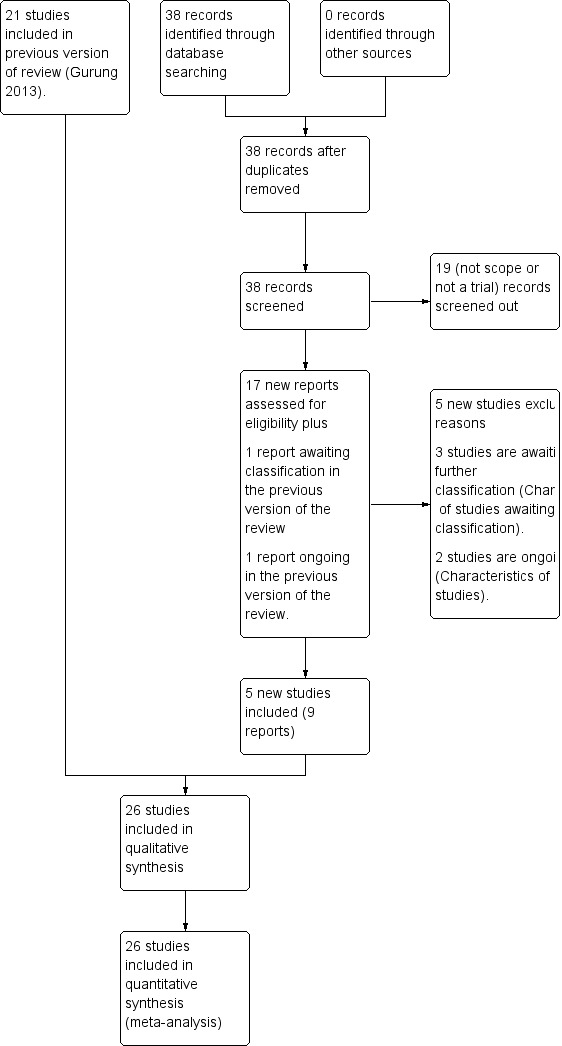
Study flow diagram
For this update, we retrieved 17 new trial reports to assess. We also reassessed Wang 2003 and Mazzella 2010 that were awaiting classification and ongoing in the previous version of the review. We included five new trials (nine reports) and excluded five. Three trials are awaiting further classification and two are ongoing.
Included studies
The original review (2001) included nine randomised controlled trials (Diaferia 1996; Floreani 1996; Frezza 1984; Frezza 1990; Kaaja 1994; Nicastri 1998; Palma 1997; Ribalta 1991; Riikonen 2000). The 2013 update included 11 new studies (Binder 2006; Fang 2009; Glantz 2005; Huang 2004; Kondrackiene 2005; Liu 2006; Luo 2008; Chappell 2012; Roncaglia 2004; Shi 2002; Zhang 2012). In addition, one study (Leino 1998) was a conference abstract and excluded from the original review (Burrows 2001). This was included in the update.
The updated search identified six new studies, five of which we judged to be eligible for inclusion (Chappell 2019; Joutsiniemi 2014; Sun 2014; Zhang 2015; Wang 2003).
Thus we now include 26 trials involving 2007 women in this review. See table of Characteristics of included studies for a full description.
Participants
All women had a diagnosis of intrahepatic cholestasis of pregnancy, based on the presence of pruritus in pregnancy and abnormalities of liver function. The onset of pruritus varied among the studies, occurring before week 19 (Frezza 1984), after week 20 (Chappell 2012; Chappell 2019), after week 28 (Nicastri 1998), after week 29 (Diaferia 1996), after week 32 (Ribalta 1991), after week 33 (Palma 1997), after week 35 (Zhang 2012; Wang 2003), in the second half of pregnancy (Huang 2004), the last trimester (Floreani 1996) or the second or third trimester (Binder 2006; Kondrackiene 2005; Roncaglia 2004; Zhang 2015). In one study (Chappell 2012), women were randomised after week 24, irrespective of the time of onset of gestational pruritus. Eleven studies did not specify a time for onset of pruritus (Frezza 1990; Fang 2009; Glantz 2005; Joutsiniemi 2014; Kaaja 1994; Leino 1998; Liu 2006; Luo 2008; Riikonen 2000; Shi 2002; Sun 2014). Generally, the inclusion criteria stipulated the severity and duration of pruritus, increased serum concentrations of bile acids/salts and/or other liver function assays, and consent to remain in hospital until the birth or to undergo extensive fetal monitoring, while the exclusion criteria stipulated absence of skin disease, chronic liver disease or other abnormalities unrelated to pregnancy. Riikonen 2000 reported that one woman was in the study twice, during successive pregnancies.
Interventions
Nine different pharmacological interventions were compared with placebo, with no treatment or with another intervention. However combination treatments were also evaluated, so we ended up with 14 comparisons (with some trials appearing in more than one comparison):
UDCA versus placebo or no treatment ‐ 10 studies (Chappell 2012; Chappell 2019; Diaferia 1996; Glantz 2005; Joutsiniemi 2014; Leino 1998; Liu 2006; Nicastri 1998; Palma 1997; Wang 2003);
SAMe versus placebo ‐ four studies (Frezza 1984; Frezza 1990; Nicastri 1998; Ribalta 1991);
Guar gum versus placebo ‐ one study (Riikonen 2000);
Activated charcoal versus no treatment ‐ one study (Kaaja 1994);
Dexamethasone versus placebo ‐ one study (Glantz 2005);
UDCA versus SAMe ‐ six studies (Binder 2006; Floreani 1996; Nicastri 1998; Roncaglia 2004; Zhang 2012; Zhang 2015);
UDCA versus dexamethasone ‐ one study (Glantz 2005);
UDCA versus cholestyramine ‐ one study (Kondrackiene 2005);
UDCA+SAMe versus placebo ‐ one study (Nicastri 1998);
UDCA+SAMe versus SAMe ‐ four studies (Binder 2006; Nicastri 1998; Zhang 2012; Zhang 2015);
UDCA+SAMe versus UDCA ‐ six studies (Binder 2006; Luo 2008; Nicastri 1998; Sun 2014; Zhang 2012; Zhang 2015);
UDCA+Salvia versus UDCA ‐ one study (Fang 2009);
Yinchenghao decoction (YCHD) versus SAMe ‐ one study (Huang 2004);
Danxioling Pill (DXLP) versus Yiganling ‐ one study (Shi 2002).
There were no studies identified which examined the use of topical emollients.
Ursodeoxycholic acid (UDCA) versus placebo
(Chappell 2012; Chappell 2019; Diaferia 1996; Glantz 2005; Joutsiniemi 2014; Leino 1998; Liu 2006; Nicastri 1998; Palma 1997; Wang 2003)
Participants in Leino 1998 received UDCA 450 mg/day in two doses for 14 days. The treatment and control interventions were identical in two studies (Diaferia 1996 and relevant arms of Nicastri 1998): 600 mg/day UDCA, or placebo (vitamin) given in two oral doses for 20 days (given after 30 weeks' gestation in Diaferia 1996). Participants in Glantz 2005 and Palma 1997 received a higher dose of UDCA or placebo over a longer period of time. UDCA 1000 mg/day or placebo was given as a single daily dose for three weeks in Glantz 2005 and as three divided doses or placebo (starch) in Palma 1997. In Liu 2006, women received UDCA (18 mg/kg body weight) three times a day for two weeks. The control group received a combination of 10% glucose, vitamin C and Inosine for two weeks. It is unclear whether the interventions were administered orally or by a parenteral route. Participants in Chappell 2012 received UDCA 1000 mg daily increased in increments of 500 mg daily every three to 14 days up to a maximum UDCA dose 2000 mg/day if no biochemical or clinical improvement was observed. Participants in Chappell 2019 received UDCA 1000 mg daily or a placebo increased in increments of 500 mg daily every three to 14 days up to a maximum of 2000 mg daily if no biochemical or clinical improvement was observed. Participants in Joutsiniemi 2014 received UDCA 450 mg daily or a placebo for 14 days. Participants in Wang 2003 received UDCA 1.5 g daily for seven days or nothing (i.e. an open‐label trial).
S‐adenosylmethionine (SAMe) versus placebo
(Frezza 1984; Frezza 1990; Nicastri 1998; Ribalta 1991)
In these studies, SAMe 800 mg dissolved in a 500 mL solution of saline (Frezza 1984), 5% dextrose (Frezza 1990; Nicastri 1998) or 5% glucose (Ribalta 1991) was administered as a daily dose intravenously (IV) over the course of three (Ribalta 1991) or four hours (Frezza 1984). The duration of administration was not reported in two studies (Frezza 1990; Nicastri 1998). A lower dose of SAMe 200 mg/day was also compared with placebo (Frezza 1984). The intervention was administered up to the day of delivery (Frezza 1984; Frezza 1990) or for a maximum of 20 days (Nicastri 1998; Ribalta 1991). Placebo treatment was either 5% dextrose solution (Frezza 1990), mannitol (800 mg) in a 5% glucose solution (Ribalta 1991), saline solution (Frezza 1984) or a vitamin solution (Nicastri 1998).
Guar gum versus placebo
Guar gum or placebo (wheat flour) at doses from 5 to 15 g/day (increases in dosage occurring at three‐day intervals) were given in three intermittent doses up until delivery. For the participants to be included in the intervention analysis, they had to take guar gum or placebo for at least 10 days.
Activated charcoal versus no treatment
Activated charcoal as a water suspension was given in a dose of 50 g three times a day for eight days.
Dexamethasone versus placebo
Dexamethasone 12 mg/day was administered as a single daily oral dose for a week, followed by placebo for two weeks. Women in the control group took a single dose of placebo every day for three weeks.
Ursodeoxycholic acid (UDCA) versus S‐adenosylmethionine (SAMe)
(Binder 2006; Floreani 1996; Nicastri 1998; Roncaglia 2004; Zhang 2012; Zhang 2015)
These studies differed by dose, administration and duration of intervention. Binder 2006 used the highest dose of UDCA (750 mg/day) and this was administered orally three times a day until birth. In Nicastri 1998 and Roncaglia 2004, 600 mg/day of UDCA was administered as two oral daily doses for 20 days or until delivery respectively. In Floreani 1996, UDCA was given as a single oral dose of 450 mg/day until delivery.
Binder 2006, Floreani 1996, and Roncaglia 2004 administered 1000 mg/day of SAMe but the routes of administration and duration of intervention were different. In Binder 2006, SAMe 500 mg was administered IV twice daily for 12 days and subsequently as 500 mg twice daily oral dose until delivery. In Floreani 1996, SAMe was administered as a single intramuscular (IM) injection daily until birth. In Roncaglia 2004, it was given in two doses by oral route until delivery. In Nicastri 1998, 800 mg/day of SAMe was administered daily in two doses as IV infusions. These were given for a maximum of 20 days.
In Zhang 2012 UDCA (250 mg given orally four times a day) was compared with SAMe (1000 mg IV four times daily) alone. In Zhang 2015 UDCA (250 mg given orally four times a day) was compared with SAMe (1 g IV daily).
Ursodeoxycholic acid (UDCA) versus dexamethasone
UDCA 1000 mg was administered as a daily single daily oral dose for three weeks. This was compared with dexamethasone 12 mg/day given as a single oral dose for one week and placebo during weeks two and three.
Ursodeoxycholic acid (UDCA) versus cholestyramine
UDCA (8 to 10 mg/kg body weight a day) was compared with cholestyramine (8 g/day). Both treatments were administered orally for two weeks.
Yinchenghao decoction (YCHD) versus S‐adenosylmethionine (SAMe)
YCHD given twice daily orally for three weeks was compared with SAMe IV infusion of 2 x 500 mg daily for three weeks.
Ursodeoxycholic acid and S‐adenosylmethionine (UDCA+SAMe) versus placebo
UDCA (600 mg/day, in two oral doses) plus SAMe (in the stable form of sulphate‐P‐toluenesulphonate diluted in 500 mL 5% dextrose and divided into two IV infusions (800 mg/day)) were compared with placebo (vitamin) administered for a maximum of 20 days.
Ursodeoxycholic acid and S‐adenosylmethionine (UDCA+SAMe) versus S‐adenosylmethionine (SAMe)
(Binder 2006; Nicastri 1998; Zhang 2012; Zhang 2015)
In Nicastri 1998, UDCA (600 mg/day, in two oral doses) plus SAMe ( in the stable form of sulphate‐P‐toluenesulphonate diluted in 500 mL 5% dextrose and divided into two IV infusions (800 mg/day)) were compared with SAMe (as sulphate‐P‐toluenesulphonate diluted in 500 mL 5% dextrose and divided into two IV infusions (800 mg/day) administered for a maximum of 20 days. In Binder 2006, UDCA (3 x 250 mg/day oral doses until delivery) plus SAMe (2 x 500 mg/day given by slow infusion for 14 days) was compared with SAMe (2 x 500 mg/day given by slow infusion for 14 days) alone. In Zhang 2012, UDCA plus SAMe (dose not stated) was compared with SAMe (1000 mg IV four times daily) alone. In Zhang 2015 UDCA (250 mg given orally four times a day) plus SAMe (1 g IV daily) was compared with SAMe (1 g IV daily).
Ursodeoxycholic acid and S‐adenosylmethionine (UDCA+SAMe) versus ursodeoxycholic acid (UDCA)
(Binder 2006; Luo 2008; Nicastri 1998; Sun 2014; Zhang 2012; Zhang 2015)
In Binder 2006, UDCA (3 x 250 mg/day oral doses until delivery) plus SAMe (2 x 500 mg/day given by slow infusion for 14 days) was compared with UDCA (3 x 250 mg/day oral doses until delivery) alone. In Zhang 2012, UDCA plus SAMe (dose not stated) was compared with UDCA (250 mg given orally four times daily) alone. In Nicastri 1998, UDCA (600 mg/day, in two oral doses) plus SAMe (800 mg sulphate‐P‐toluenesulphatonate diluted in 500 mL 5% dextrose, in two IV infusions) was compared with UDCA (600 mg/day, in two oral doses) alone administered for a maximum of 20 days. In Luo 2008, SAMe (Transmetil 1 g added to 250 mL 5% glucose administered as an IV infusion once daily) plus UDCA (250 mg oral pill twice daily) were compared with UDCA pill alone (250 mg oral pill twice daily) for 10 days. Participants in both groups received dexamethasone (10 mg once a day orally) for three days before starting the study drugs. In Sun 2014 UDCA (250 mg twice a day orally) combined with SAMe (1 g daily IV) was compared with UDCA (250 mg twice a day orally). In Zhang 2015 UDCA (250 mg given orally four times a day) plus SAMe (1 g IV daily) was compared with UDCA (250 mg given orally four times a day).
Ursodeoxycholic acid (UDCA)+Salvia versus ursodeoxycholic acid (UDCA)
Salvia (10 mL in 10% 500 mL dextrose IV injection) and ursodeoxycholic acid (15 mg/kg/day divided into three oral doses a day) was compared with UDCA (same dose as above) only. Both were used for 14 days.
Danxioling pill (DXLP) versus Yiganling
(Shi 2002)
DXLP 9 g/day given three times a day orally for seven days was compared with Yiganling tablets given as four tablets three times a day for seven days.
Outcomes
The main outcomes in all studies included maternal, perinatal, and neonatal morbidity and mortality outcomes.
Study dates, funding and conflicts of interest
For Diaferia 1996; Fang 2009; Frezza 1990; Kaaja 1994; Leino 1998; Luo 2008; Shi 2002; Wang 2003 the dates the study was conducted, the funding source and conflicts of interest were not reported.
Binder 2006 was conducted between January 1999 and March 2004. The study was funded by IGA MZ CR (No. NH/7376‐3). No conflicts of interest were reported.
Chappell 2012 was conducted between October 2008 and April 2010. The study was funded by the National Institute for Health Research (NIHR). LCC is funded by a Department of Health‐NHS clinical senior lecturer award, VG was funded by Nottingham University Hospitals NHS Trust and NIHR research for patient benefit programme, PTS is funded by Tommy’s Charity, and CW is funded by the Biomedical Research Centre at Imperial College Healthcare NHS Trust; JC is the founder of Obstetric Cholestasis Support UK, a support group for women and families affected by obstetric cholestasis; no financial relationships with any organisations that might have an interest in the submitted work in the previous 3 years; and no other relationships or activities that could appear to have influenced the submitted work.
Chappell 2019 was conducted between 23 December 2015, and 07 August 2018. The study was funded by the National Institute for Health Research Efficacy and Mechanism Evaluation Programme. The authors declared the following conflicts of interest: LCC, JLB, EJ, RH, and JD report grants from the National Institute for Health Research (NIHR), during the conduct of the study. JD also reports grants from NIHR and Nutrinia, outside the submitted work. JGT is a co‐author of the Cochrane Review of treatment for obstetric cholestasis and a co‐author of a previous trial of UDCA to treat ICP.
For Floreani 1996 the dates the study was conducted and conflicts of interest were not reported. The study was partially supported by a Ministerial grant (MURST 60%).
Frezza 1984 was conducted between 1979 and 1982. The funding source and conflicts of interest were not reported.
Glantz 2005 was conducted between February 1999 and January 2002. The study was funded by FoU, Västra Götaland. The following conflicts of interest were reported: Dr Falk Pharma, manufacturers of UDCA supplied UDCA and placebos.
Huang 2004 was conducted in a three‐week period, although the dates are not reported, and the funding source and conflicts of interest were not reported.
Joutsiniemi 2014 was conducted in a two‐year period, although the dates are not reported, and the funding source and conflicts of interest were not reported.
Kondrackiene 2005 was conducted between October 1999 and September 2002. The funding source and conflicts of interest were not reported.
Liu 2006 was conducted between June 2001 and July 2003. The funding source and conflicts of interest were not reported.
Nicastri 1998 was conducted between March 1995 and July 1996. The funding source and conflicts of interest were not reported.
Palma 1997 was conducted between July 1993 and June 1995. The study was funded by FONDECYT, Chile, Grants no. 191‐1107 and 194‐0420. Conflicts of interest were not reported.
Ribalta 1991 was conducted in a two‐year period, although the dates are not reported. The funding source was a Universidad de Chile (grant M‐15001) and FONDECYT (grant 0467/88). Conflicts of interest were not reported.
For Riikonen 2000 the dates the study was conducted were not reported. The study was funded by the Finnish Heart Foundation, Finnish Academy of Medical Sciences, the Paulo Foundation, the Juho Vainio Foundation and the Helsinki University Hospital. Conflicts of interest were that guar gum was received from Orion Company, Helsinki, Finland.
Roncaglia 2004 was conducted between June 1996 and December 2001. The funding source and conflicts of interest were not reported.
Sun 2014 was conducted between January 2012 and February 2014. The funding source and conflicts of interest were not reported.
Zhang 2012 was conducted between July 2009 and March 2011. The funding source and conflicts of interest were not reported.
Zhang 2015 was conducted between January 2012 and February 2014. The funding source and conflicts of interest were not reported.
Excluded studies
Seven studies were excluded. We excluded one study because we were unable to locate it (Elias 2001). Two studies were excluded because the intervention was not a pharmacological intervention (Gautam 2013; Jain 2013). Two studies were excluded because no data were available (Kohari 2013; Liu 1990). One study previously an ongoing study was excluded because it was withdrawn from the trial registry in 2016 (Mazzella 2010). One study was excluded due to a particularly complex pharmacological intervention (Shi 2006). For further details, seeCharacteristics of excluded studies.
Risk of bias in included studies
A summary of the risks of bias for the included studies is provided in the following figures: Figure 2; Figure 3; Figure 1.
2.
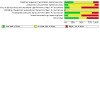
3.
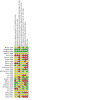
'Risk of bias' summary: review authors' judgements about each risk of bias item for each included study.
Allocation
Apart from four studies (Fang 2009; Glantz 2005; Palma 1997; Shi 2002) which were quasi‐randomised, all other studies were randomised controlled trials. Seven trials reported adequate methods for sequence generation (Chappell 2012; Chappell 2019; Huang 2004; Nicastri 1998; Ribalta 1991; Riikonen 2000; Roncaglia 2004). Three studies (Glantz 2005; Palma 1997; Shi 2002) used alternation by hospital admission in order to generate a random sequence. In Fang 2009, participants were divided into two groups based on the date of hospital admission. Floreani 1996 and Luo 2008 mentioned that the study participants were 'randomly assigned' to the two interventions, but it is unclear how this random sequence was generated. In Frezza 1990, participants were randomised according to a pre‐established code, but it is unclear how this code was derived. It is unclear whether the remaining studies had used a random sequence for intervention allocation.
Allocation concealment was adequate for three trials (Chappell 2012; Chappell 2019; Ribalta 1991). Chappell 2019 and Chappell 2012 used central allocation using a web‐based database. Ribalta 1991 used sequentially‐numbered drug containers of identical appearance.
There was a high risk of possible selection bias in three trials (Fang 2009; Glantz 2005; Shi 2002) and this was unclear in the 19 remaining trials.
Blinding
Blinding of participants or investigators or both was reported in eight studies. In Chappell 2019 participants, clinical care providers, outcome assessors and data analysts were all masked to allocation and it clearly describes how this was achieved. Identical UDCA tablets and placebo tablets were produced and shipped to site pharmacies. Packs were labelled with unique identifiers according to a randomly‐generated sequence known only to the manufacturing unit and the trial programmers. A research team member entered baseline data on a web‐based database at study enrolment and then allocated a pack number using the web‐based randomisation programme, which corresponded to a pack for dispensing by that site’s pharmacy.
In three studies participants and investigators were blinded to group allocation, but no details on blinding of outcome assessment are given (Chappell 2012; Glantz 2005; Palma 1997). For Chappell 2012 investigator, pharmacist and participant were all blinded to group allocation and it was conducted in the same way as described for Chappell 2019. Palma 1997 used identical UDCA and placebo capsules. Glantz 2005 used identical‐looking UDCA, placebo and empty capsules. The empty capsules were filled with dexamethasone at the hospital pharmacy.
Ribalta 1991 was unclear about how they blinded participants and investigators.
In three of these studies, although blinding of both participants or investigators or both was reported (Diaferia 1996; Leino 1998; Riikonen 2000) it is unclear how this was performed.
Two studies were single‐blinded, so that only the investigators were informed of which treatment participants were receiving (Frezza 1984; Frezza 1990) and we therefore judged them to be at high risk. Wang 2003 made no mention of a placebo, and we interpreted this to mean it was an open‐label trial and have therefore judged it to be at high risk.
In nine studies no blinding occurred, as the interventions were administered by different routes and it was therefore not possible to blind, so we have judged them to be high risk (Binder 2006; Fang 2009; Floreani 1996; Huang 2004; Kaaja 1994; Kondrackiene 2005; Luo 2008; Nicastri 1998; Roncaglia 2004). In the four remaining studies it is unclear whether the participants or investigators or both were blinded to trial allocation (Liu 2006; Shi 2002; Sun 2014; Zhang 2012).
Blinding of outcome assessors was reported in one study (Chappell 2019).
Blinding of outcome assessors was not reported in 24 studies and we therefore judged them to be at unclear risk of bias (Binder 2006; Chappell 2012; Diaferia 1996; Fang 2009; Floreani 1996; Frezza 1984; Frezza 1990; Glantz 2005; Huang 2004; Joutsiniemi 2014; Kaaja 1994; Kondrackiene 2005; Liu 2006; Luo 2008; Nicastri 1998; Palma 1997; Ribalta 1991; Riikonen 2000; Roncaglia 2004; Shi 2002; Sun 2014; Wang 2003; Zhang 2012; Zhang 2015).
Incomplete outcome data
Twelve of the 26 studies had a low risk of attrition bias as there were no losses to follow‐up (Binder 2006; Chappell 2012; Chappell 2019; Frezza 1984; Huang 2004; Kaaja 1994; Kondrackiene 2005; Luo 2008; Nicastri 1998; Roncaglia 2004; Shi 2002; Wang 2003).
In Shi 2002, outcomes were reported for 25 participants (86%) for serum alanine transaminase (ALT) and aspartate transaminase (AST), for 27 participants (93%) for alkaline phosphatase (ALP), for 21 participants (72%) for serum bilirubin concentrations out of 29 participants receiving Danxioling, and for 16 of 29 participants (55%) for serum bilirubin concentrations in the Yiganling group.
Five of the 26 studies had a high risk of attrition bias as the losses to follow‐up were unreported (Fang 2009; Floreani 1996; Liu 2006; Palma 1997; Zhang 2015). Outcomes were reported in 15 of 25 participants randomised (63%) in Palma 1997. Palma 1997 excluded from the analysis nine women who delivered before completion of two weeks of treatment.
Nine of the 26 studies had an unclear risk of attrition bias due to a lack of information about losses to follow‐up (Diaferia 1996; Frezza 1990; Glantz 2005; Joutsiniemi 2014; Leino 1998; Ribalta 1991; Riikonen 2000; Sun 2014; Zhang 2012). Outcomes were reported for 39 of 48 participants randomised (81%) in Riikonen 2000, and for 18 of 20 (90%) in Ribalta 1991. The number of participants analysed in the results was unclear in Leino 1998. Zhang 2012 reported 20 cases to have been eliminated and not included in the analysis. However, It was unclear how many of these from each randomised group were lost to follow‐up (Zhang 2012), as only the total number of cases eliminated from the analysis was reported.
Selective reporting
Three of the 26 studies had a low risk of selective reporting (Chappell 2012; Chappell 2019; Huang 2004), as all the prespecified outcomes were reported. Ten of the 26 studies had an unclear risk of selective reporting (Binder 2006; Diaferia 1996; Glantz 2005; Kondrackiene 2005; Leino 1998; Luo 2008; Roncaglia 2004; Shi 2002; Sun 2014; Zhang 2012) as the trials were unregistered. Thirteen of the 26 studies had a high risk of selective reporting (Fang 2009; Floreani 1996; Frezza 1984; Frezza 1990; Joutsiniemi 2014; Kaaja 1994; Liu 2006; Nicastri 1998; Palma 1997; Ribalta 1991; Riikonen 2000; Wang 2003; Zhang 2015), as either one or more outcomes of interest were reported incompletely or there was a failure to report key outcomes such as perinatal mortality.
While most trials reported maternal pruritus after treatment, variable and incomplete reporting (together with variance in measurement parameter reported) precluded pooling of data for this outcome.
The other primary outcomes of perinatal mortality and fetal distress were not reported in any of the trials. In addition, several trials reported some outcomes only in graphical form.
Other potential sources of bias
Eleven of the 26 studies had a low risk of additional sources of bias (Binder 2006; Chappell 2012; Chappell 2019; Kaaja 1994; Kondrackiene 2005; Luo 2008; Nicastri 1998; Ribalta 1991; Riikonen 2000; Roncaglia 2004; Shi 2002) where no other additional sources of bias were identified by the authors.
Six of the 26 studies had an unclear risk of additional sources of bias (Diaferia 1996; Frezza 1990; Leino 1998; Liu 2006; Sun 2014; Zhang 2012), due to a lack of information.
Nine of the 26 studies had a high risk of other potential sources of bias (Fang 2009; Floreani 1996; Frezza 1984; Glantz 2005; Huang 2004; Joutsiniemi 2014; Palma 1997; Wang 2003; Zhang 2015). In Fang 2009 it is unclear why there are 72 women in the experimental group and 58 women in the control group, with insufficient detail given on randomisation to be sure that this imbalance is a result of randomisation. In Floreani 1996 there was some concern about the analyses chosen and reported. In Glantz 2005 the planned sample size reported in the paper was 240 (80 per group). No explanation was given for stopping after 130 participants had been recruited. In Huang 2004 there was an imbalance in the numbers of women randomised to each group. In Palma 1997 the sample size was data‐driven, and in Zhang 2015 we have concerns about the absence of any missing data. In Frezza 1984 there was some concern about the analyses chosen and reported. In Joutsiniemi 2014 no justification was given for the sample size of 20 women and there was inconsistent reporting of the recruitment duration.
Effects of interventions
See: Table 1
1. Ursodeoxycholic acid (UDCA) versus placebo
Nine trials (Chappell 2012; Chappell 2019; Diaferia 1996; Glantz 2005; Joutsiniemi 2014; Leino 1998; Liu 2006; Nicastri 1998; Palma 1997) involving 1037 women looked at this comparison. Wang 2003 reported on UDCA versus no treatment.
Primary outcomes (maternal)
Pruritus
All nine trials (1037 women) comparing UDCA and placebo reported this outcome. Four studies (830 women) used a 100 mm visual analogue scale (VAS), four studies (105 women) evaluated itching on a 0 ‐ 4 categorical scale, and one study (18 women) did not elaborate on the methods used to assess pruritus. Studies that used the 0 ‐ 4 scale (0 = absence of pruritus, 1 = occasional pruritus, 2 = discontinuous pruritus every day, with prevailing asymptomatic lapses, 3 = discontinuous pruritus with prevailing symptomatic lapses, and 4 = constant pruritus) analysed the data as a continuous outcome, which is not ideal as the assumption of normality on a short scale will not be met. We therefore planned to dichotomise the data by classifying a pruritus score of 0 ‐ 2 as mild pruritus, and 3 ‐ 4 as severe pruritus. We also planned to dichotomise pruritus outcomes after the end of the intervention as 'improvers' and 'non‐improvers'. Only Palma 1997 allowed dichotomisation of data. We could not pool dichotomous results from any of these trials, due to the differing methods of measuring and reporting pruritus.
We were only able to pool results from two studies (Chappell 2012; Chappell 2019) out of three reporting a pruritus score using a 100 mm VAS. Pooled results from the two studies (715 women) reported a small reduction in pruritus score (out of 100) for UDCA compared with placebo: mean difference (MD) −7.64, 95% confidence interval (CI) −9.69 to −5.60; moderate‐certainty evidence; Analysis 1.1. It is worth noting that the 95% CI around the effect was only 9 mm, i.e. smaller than the minimum worthwhile treatment effect for most participants and doctors surveyed.
1.1. Analysis.

Comparison 1: UDCA versus placebo, Outcome 1: Mean of worst itching scores over preceding 24 hours between randomisation and delivery
Results that we were able to pool or present in forest plot or combine in meta‐analysis:
In Palma 1997, a weekly assessment of pruritus was performed in all the study participants by the same clinician using the 0 ‐ 4 scoring system. They reported a significant improvement in pruritus score after two weeks (P < 0.01; 15 women) and three weeks (P = 0.02; 15 women) of treatment with UDCA compared with placebo. Data for improvement in pruritus score were presented in a forest plot as a graph, although they represent findings from a single study. Similar numbers of women (seven of the eight women in the UDCA group and five of the seven women in the placebo group) showed a reduction in pruritus score after three weeks (risk ratio (RR) 1.23, 95% CI 0.72 to 2.10; Analysis 1.2); all seven 'improvers' in the UDCA group had low scores (under 1.5) compared with two of the five 'improvers' in the placebo group.
Chappell 2012 prespecified in their trial protocol, published before data unblinding, that their primary outcome was to be the mean of all worst itching scores in the preceding 24 hours (100 mm VAS) measured between randomisation and delivery. The authors of this trial surveyed participants and obstetricians: each group considered that the mean minimum worthwhile improvement would be a 30 mm difference, reported within the main trial publication.bChappell 2012 reported the mean of average itching scores over the preceding 24 hours between randomisation and delivery, and showed a small reduction in pruritus (MD −18.60, 95% CI −27.52 to −9.68; (Analysis 1.3)), but the 95% CI around the effect was still less than 30 mm.
1.2. Analysis.

Comparison 1: UDCA versus placebo, Outcome 2: Pruritus improvement
We were unable to pool the results or present the data in forest plots for the following trials, and have therefore summarised the findings as reported by the studies:
In Diaferia 1996, pruritus was assessed before treatment (day 0) and at five‐day intervals thereafter, on a 0 ‐ 4 scale. Pruritus score was reported as mean and standard deviation (SD) at day 0 and day 20, favouring UDCA over placebo.
In Glantz 2005, no difference in pruritus score (100 mm VAS) was seen between the UDCA and placebo groups after three weeks of treatment (94 women; no P value reported). However, in the 23 women with serum bile acids at least 40 μmol/L (subsequently defined as severe cholestasis), the pruritus score fell to a mean of about 15 in the UDCA group compared with a mean of about 52 in the placebo group.
In Joutsiniemi 2014 (20 women), the pruritus score fell to a mean of 2.5 in the UDCA group compared with a mean of 7.5 in the placebo group. No SDs were reported in the paper.
Leino 1998 reported a significant improvement in pruritus scores within two weeks in the UDCA group.
In Liu 2006, pruritus was evaluated on a 0 ‐ 4 scale. Results were reported as mean and SD at trial entry and two weeks later. After 14 days of treatment, a reduction in the pruritus scores was observed in the UDCA group compared with the placebo group.
In Nicastri 1998, pruritus was evaluated by the participant every three days up to 24 hours after delivery using the 0 ‐ 4 scoring system. The change in pruritus score after 20 days of treatment was analysed as a continuous outcome and reported as mean and SD. A significant reduction in pruritus score was observed with both the UDCA and placebo groups.
In Wang 2003, itching was reported on a four‐point scale (0 = none, 1 = mild, 2 = moderate not requiring drug treatment, 3 severe requiring drug treatment). The timing was not reported. Treatment with UDCA appeared to have a large effect. Distribution was from 'no treatment' 14 women with moderate and eight women severe itch versus 'UDCA' in which four women had moderate itch and none severe itch.
Primary outcomes (fetal/neonatal)
Stillbirth
Six studies (955 women) reported stillbirth, with zero events in both groups for two studies (Chappell 2012; Joutsiniemi 2014). The evidence is very uncertain about the effect of UDCA on stillbirth because of limitations in study design and very few events reported: four out of the six studies reported seven stillbirths in total, (1/480 versus 6/475; average RR 0.33, 95% CI 0.08 to 1.37; random‐effects analysis; 955 women; very low‐certainty evidence; Analysis 1.4).
1.4. Analysis.
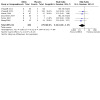
Comparison 1: UDCA versus placebo, Outcome 4: Stillbirth
In Wang 2003, two women had "fetal death", classified by us as stillbirth, in the no‐treatment group. We rated the study as being at high risk of bias in most domains, with many expected data items missing, and a number of the other reported results deemed by us as implausible.
In Glantz 2005, a woman on clomipramine for long‐term depressive disorder experienced itching from 33 weeks' gestation. After going into spontaneous labour at week 38, intrauterine death was diagnosed. Her serum bile acid concentrations were 16 µmol/L, both at trial inclusion and two weeks later. It is unclear from the information provided in the report whether the stillbirth could be attributable to intrahepatic cholestasis of pregnancy.
In Palma 1997, the woman with a stillbirth had received placebo for two weeks. The authors wrote: "Minor signs of fetal distress had been noticed a few hours before fetal death, but the decision to perform a caesarean section was wrongly delayed and fetal death occurred".
In Chappell 2019, three women (of 605) had a stillbirth, i.e. in one woman taking UDCA and two women taking placebo. In the two women in the placebo group, one woman who had a peak bile acid of 80 µmol/L, and also had influenza A confirmed by throat swab at the time of stillbirth at 37 weeks. The other woman had a peak bile acid of 21 µmol/L and had a stillbirth at 35 weeks.
No neonatal deaths were reported.
Fetal distress/asphyxial events
Six of the nine trials comparing UDCA with placebo reported fetal distress or asphyxial events or both in some form, although the evidence is very uncertain about the effect of UDCA because of limitations in study design and very little data reported (average RR 0.70, 95% CI 0.35 to 1.40; random‐effects analysis; Tau2 = 0.25; I2 = 34%; 6 trials, 944 women; very low‐certainty evidence; Analysis 1.5).
1.5. Analysis.

Comparison 1: UDCA versus placebo, Outcome 5: Fetal distress/asphyxial event
In Diaferia 1996 and Palma 1997, this outcome included women who had operative births for fetal distress, and in Liu 2006 it was defined as abnormal results of antepartum testing prompting delivery. Glantz 2005 defined asphyxial events as all operative births due to asphyxia, umbilical arterial pH less than 7.05 or Apgar score less than seven at five minutes. In Liu 2006 one baby from the UDCA group and seven babies from the placebo group were reported to have asphyxia neonatorum (which was not clearly defined in the paper). Chappell 2012 reported asphyxial events defined as induction or caesarean section for fetal compromise.
Subgroup analysis (serum bile acid concentrations ≥ 40 µmol/L versus serum bile acid concentrations < 40 µmol/L)
Glantz 2005 presented data for the subgroups of serum bile acids equal to or greater than 40 µmol/L (RR 0.31, 95% CI 0.01 to 6.85; 23 women) versus serum bile acids less than 40 µmol/L (RR 1.03, 95% CI 0.15 to 6.90; 71 women) for one of this review's primary outcomes (asphyxial events). We acknowledge that there were too few data included in this analysis to identify any differences between subgroups (Analysis 1.6), (test for subgroup differences: Chi2 = 0.42, df = 1 (P = 0.52), I2 = 0%).
1.6. Analysis.

Comparison 1: UDCA versus placebo, Outcome 6: Subgroup analysis ‐ fetal distress/asphyxial events
Secondary outcomes (maternal)
Biochemical assessments
Two trials reported a reduction in serum bile acids after treatment with UDCA compared with placebo (MD −20.45, 95% CI −26.07 to −14.84; 2 trials, 519 women; Analysis 1.7). Nicastri 1998 (32 women) reports a reduction in serum bile acids after treatment with UDCA compared with placebo (MD −30.40, 95% CI −37.48 to −23.32; 16 women; Analysis 1.7). Although the I2 score of 95% suggests a high level of heterogeneity between these trials, there is no obvious explanation for this in the two papers, nevertheless, in view of this, these results should be interpreted with caution.
1.7. Analysis.

Comparison 1: UDCA versus placebo, Outcome 7: Change in bile acid concentration, µmol/L
Serum alanine aminotransferase (ALT) concentrations were lower after treatment with UDCA compared with placebo in four trials (581 women) (average MD −68.73 IU/L, 95% CI −104.09 to −33.38; random‐effects analysis; Analysis 1.8). Analysis 1.9 is presented as change data. Although ALT changed in the same direction in both trials, the size of the change is much larger in Nicastri 1998, such that the I2 score is 96%. Although there is no obvious explanation in the two papers, in view of this, these results should be interpreted with caution.
1.8. Analysis.
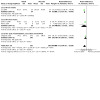
Comparison 1: UDCA versus placebo, Outcome 8: ALT, IU/L
1.9. Analysis.

Comparison 1: UDCA versus placebo, Outcome 9: ALT reduction, IU/L
Glantz 2005 reported liver function tests only graphically, as medians and P values. The final serum bile acid concentrations were lower after treatment in the UDCA group compared with the placebo group (P = 0.001). There was a greater reduction in serum ALT in the UDCA group compared with the placebo group (P = 0.01). Leino 1998 reported a reduction in serum ALT and bile acid concentrations to the upper limit of normal pregnancy values in the UDCA group, but did not report numerical or graphical data by randomisation group.
Caesarean section (and mode of birth)
Five trials found little to no differences between UDCA and placebo for rates of caesarean section (RR 1.05, 95% CI 0.89 to 1.23; 5 trials, 850 women; Analysis 1.10). Glantz 2005 did not report caesarean births but did indicate that rates of elective birth (both caesarean and vaginal) were not very different between the two groups (32% for UDCA and 38% for placebo).
1.10. Analysis.

Comparison 1: UDCA versus placebo, Outcome 10: Caesarean section
Postpartum haemorrhage
There was little to no difference in the rates of postpartum haemorrhage in three trials reporting this outcome (RR 0.94, 95% CI 0.76 to 1.15; 731 women; Analysis 1.11).
1.11. Analysis.

Comparison 1: UDCA versus placebo, Outcome 11: Postpartum haemorrhage
Adverse effects of medication
Four trials reported on adverse effects of medication (Chappell 2012; Chappell 2019; Glantz 2005; Palma 1997). There was little to no difference between the two groups (RR 0.80, 95% CI 0.56 to 1.14; 4 trials, 824 women; Analysis 1.12).
1.12. Analysis.
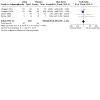
Comparison 1: UDCA versus placebo, Outcome 12: Adverse effects of medication
No adverse effects of medication for mothers or babies in either group were reported in four trials (Leino 1998; Liu 2006; Nicastri 1998;Diaferia 1996).
In Glantz 2005, one participant in the UDCA group experienced diarrhoea and one in the placebo group suffered a severe headache. Palma 1997 reported that one woman in the UDCA group experienced transient morning nausea and mild vomiting, which resolved after changing the time of UDCA intake. Chappell 2012 reported 13 adverse events (seven mild, six moderate) in the treatment group and 10 in the placebo group (eight mild, two moderate). The drug was stopped due to adverse events of medication in one participant in the treatment group and one in the placebo group.
Chappell 2019 reported 33 adverse events of medication (31 adverse events, two serious adverse events) in the treatment group and 48 (42 adverse events, six serious adverse events) in the placebo group. The drug was stopped due to adverse events of medication in one participant in the placebo group who experienced a serious adverse event. See Analysis 1.12. It seems odd that there were more adverse events in the placebo group; this must be a chance effect.
Secondary outcomes (fetal/neonatal)
Meconium‐stained liquor
There may be a reduction in the observation of meconium‐stained liquor with UDCA compared with placebo groups according to four trials in the pooled analysis (average RR 0.63, 95% CI 0.39 to 1.00; random‐effects analysis: Tau2 = 0.11; I2 = 51%; 4 trials, 910 women; Analysis 1.13).
1.13. Analysis.

Comparison 1: UDCA versus placebo, Outcome 13: Meconium‐stained liquor
Mean gestational age at birth
In five trials there was a small increase in gestational age at birth in the UDCA group (average MD 1.50 weeks, 95% CI 0.20 to 2.80; random‐effects analysis: Tau2 = 2.53; I2 = 90%; 5 trials, 800 women; Analysis 1.14). However, given the high heterogeneity (I2 = 90%) between the trials for this outcome, we tested the effect of removing the three smallest trials, leaving only the two Chappell trials. The heterogeneity remained at 69%, but the 95% CI for the mean difference (MD 0.36, 95% CI −0.30 to 1.03) included no effect on gestational age at birth (data not reported).
1.14. Analysis.

Comparison 1: UDCA versus placebo, Outcome 14: Mean gestational age at birth (weeks)
Leino 1998 reported a higher birthweight in the UDCA group coinciding with advanced gestation at birth in this group, but did not report any numerical data in the comparison groups.
Spontaneous birth at less than 37 weeks
In three trials, little to no difference was seen in rates of spontaneous preterm birth at less than 37 weeks between the UDCA and placebo groups (RR 0.78, 95% CI 0.49 to 1.23; 3 trials, 749 women; Analysis 1.15). Nicastri 1998 reported that two women in the UDCA group had spontaneous preterm labour but did not report this outcome for the women in the placebo group.
1.15. Analysis.

Comparison 1: UDCA versus placebo, Outcome 15: Spontaneous birth at less than 37 weeks
Total preterm birth at less than 37 weeks (spontaneous and iatrogenic)
Three trials (two different from the three reporting spontaneous preterm birth above) reported the total number of preterm births at less than 37 weeks of gestation. There were fewer total preterm births in the UDCA group compared with placebo (average RR 0.60, 95% CI 0.37 to 0.97; random‐effects analysis: Tau2 = 0.10; I2 = 55%; 3 trials, 819 women; Analysis 1.16).
1.16. Analysis.

Comparison 1: UDCA versus placebo, Outcome 16: Total preterm birth at less than 37 weeks
The I2 is high at 55%, so we tested the effect of removing the smallest trial (Liu 2006), leaving Chappell 2012 and Chappell 2019. When we did this the I2 was 48% (RR 0.69, 95% CI 0.46 to 1.06). In view of this, although the result was still consistent with a reduction, the upper 95% CI was also compatible with a slight increase in total preterm births, and so we are less certain of the findings.
Admission to neonatal unit
Two trials reported little to no difference in admission rates to the neonatal intensive care unit between the UDCA and the placebo groups (RR 0.77, 95% CI 0.55 to 1.08; 2 trials, 764 women; Analysis 1.17).
1.17. Analysis.

Comparison 1: UDCA versus placebo, Outcome 17: Admission to neonatal intensive care unit
2. S‐adenosylmethionine (SAMe) versus placebo
Four trials (Frezza 1984; Frezza 1990; Nicastri 1998; Ribalta 1991) involving 82 women looked at this comparison.
Primary outcomes (maternal)
Pruritus
Four trials (82 women) reported this outcome. Frezza 1990 (30 women) reported improvements in pruritus score with SAMe, whereas Frezza 1984 (18 women) reported reduction in pruritus with 800 g daily dose of SAMe but not with 200 g daily dose. Two studies (Nicastri 1998; Ribalta 1991) (34 women) reported an improvement in the pruritus score with both SAMe and placebo. None of these studies performed a subgroup analysis for improvement in pruritus in women with bile acids ≥ 40 µmol/L.
Three studies (52 women) evaluated itching on a 0 ‐ 4 scale. Data were reported as mean and SD. We planned to dichotomise and re‐analyse the data but this was not possible because pruritus scores at trial entry and after intervention were not reported.
Frezza 1984 assessed pruritus on day 0 (before entering the study), and at days 10 and 20 of treatment. Pruritus was graded from 0 to 4. The reductions in mean grade of pruritus score after 10 and 20 days of treatment were analysed and presented as a continuous outcome. A reduction in pruritus grade was reported with 800 g daily dose of SAMe (P < 0.02 after day 10 and < 0.01 after day 20), compared with placebo, but not for the 200 g daily dose.
Frezza 1990 assessed pruritus on a 10 cm analogue scale every three days up to 24 hours after delivery. The authors reported the mean pruritus scores after treatment as lower (better) in the SAMe group compared with the placebo group (P < 0.01; 30 women), but gave no numerical data.
Nicastri 1998 evaluated pruritus on a 0 ‐ 4 scale every three days. The mean changes in pruritus score in the two groups were reported as a continuous outcome. A reduction in mean pruritus score was seen both in the SAMe group (P < 0.01; 8 women) and in the placebo group (P < 0.01; 8 women).
Ribalta 1991 assessed the severity of pruritus on a 0 ‐ 4 scale immediately before treatment and every five days until delivery, one to three days after delivery and one to three months afterwards. The scores were analysed as a continuous outcome. The severity of pruritus was reduced in both groups, with the mean pruritus score decreasing more in the placebo group, but this difference was not large.
Primary outcomes (fetal/neonatal)
Stillbirth/neonatal death
Ribalta 1991 (18 participants) reported this outcome, with no stillbirths or neonatal deaths (Analysis 2.1).
2.1. Analysis.

Comparison 2: SAMe versus placebo, Outcome 1: Stillbirth/neonatal death
Fetal distress/asphyxial events
In Frezza 1984, all the infants born to women in the SAMe group had Apgar scores of seven or above at five minutes. They did not report these figures for the placebo group, making comparisons impossible.
All the newborns in Ribalta 1991 had Apgar scores of seven or above in both the groups. Caesarean sections were performed for various indications in this trial, including fetal distress, but the actual number of caesarean sections for this indication was not specified.
Secondary outcomes (maternal)
Biochemical assessments
In Nicastri 1998 (16 women), reductions in serum bile acids, and serum ALT were greater in the SAMe group compared with placebo (Analysis 2.2; Analysis 2.3). In Frezza 1984, the final values of serum transaminases, conjugated bilirubin and total bile acids were reported to be lower in women treated with SAMe 800 mg a day than in women who received placebo (total of 12 women for this comparison). In Frezza 1990 (30 women), after a mean 18 days of treatment with SAMe, serum total bile acids, ALT and AST were all reported to be lower than in the placebo group (P = 0.01 for all three comparisons). Ribalta 1991 (18 women) reported no differences in results of the various liver function tests, but these were only presented in graphical form.
2.2. Analysis.
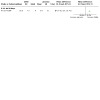
Comparison 2: SAMe versus placebo, Outcome 2: Bile acid reduction, µmol/L
2.3. Analysis.
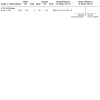
Comparison 2: SAMe versus placebo, Outcome 3: ALT reduction, IU/L
Caesarean section
There were few to no differences in Ribalta 1991 between the SAMe and placebo groups for caesarean section (RR 1.14, 95% CI 0.75 to 1.74; 18 women; Analysis 2.4).
2.4. Analysis.

Comparison 2: SAMe versus placebo, Outcome 4: Caesarean section
Adverse effects
Frezza 1984 reported that SAMe was well tolerated by women and that no adverse effects were seen, and Frezza 1990 recorded no adverse effects for women or their children. Ribalta 1991 reported that one woman experienced problems in peripheral veins due to prolonged daily IV infusions.
Secondary outcomes (fetal/neonatal)
Spontaneous labour/birth at less than 37 weeks
Frezza 1990 reported that two women in the SAMe group and five in the placebo group had preterm labour before 37 weeks (RR 0.40, 95% CI 0.09 to 1.75; 30 women; Analysis 2.5). Nicastri 1998 reported three preterm births in the SAMe group but did not state how many there were in the placebo group. Ribalta 1991 reported the total preterm births (see below) but did not specify the number of spontaneous preterm births.
2.5. Analysis.
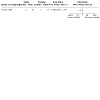
Comparison 2: SAMe versus placebo, Outcome 5: Spontaneous birth at less than 37 weeks
Total preterm birth at less than 37 weeks (spontaneous and iatrogenic)
Six women in the SAMe group in Ribalta 1991 versus eight in the placebo group had preterm births (RR 0.75, 95% CI 0.45 to 1.26; 18 women; Analysis 2.6).
2.6. Analysis.
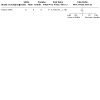
Comparison 2: SAMe versus placebo, Outcome 6: Total preterm birth at less than 37 weeks
The following secondary outcomes were not reported for this comparison: postpartum haemorrhage, meconium‐stained liquor, mean gestational age at birth, or admission to neonatal unit.
3. Guar gum versus placebo
One trial (Riikonen 2000) involving 39 women studied this comparison.
Primary outcomes (maternal)
Pruritus
In Riikonen 2000 both investigators and participants assessed change in pruritus following treatment. From the women's perspective, nine (48%) women receiving guar gum and five (25%) receiving placebo experienced a reduction in pruritus (RR 1.89, 95% CI 0.77 to 4.64; Analysis 3.1). From the investigator's perspective, six (32%) women receiving guar gum and five (25%) receiving placebo had a reduction in pruritus (RR 1.26, 95% CI 0.46 to 3.46; Analysis 3.1). There were few to no differences between groups.
3.1. Analysis.
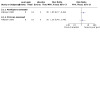
Comparison 3: Guar gum versus placebo, Outcome 1: Pruritus improvement
Primary outcomes (fetal/neonatal)
Stillbirth/neonatal death
No neonatal or infant deaths were reported.
Fetal distress/asphyxial events
This outcome was not reported.
Secondary outcomes (maternal)
Biochemical assessments
There were few to no differences seen in Riikonen 2000 between guar gum and placebo in reducing the concentrations of serum bile acids (µmol/L) (MD −7.40, 95% CI −24.22 to 9.42; 39 women; Analysis 3.2) and serum ALT (U/L) (MD −37.50, 95% CI −137.33 to 62.33; 39 women; Analysis 3.3).
3.2. Analysis.
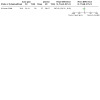
Comparison 3: Guar gum versus placebo, Outcome 2: Total bile acids (µmol/L)
3.3. Analysis.
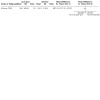
Comparison 3: Guar gum versus placebo, Outcome 3: ALT, U/L
Adverse effects of medication
Eight women (42%) in the guar gum group and six (30%) in the placebo group reported mild abdominal distress, diarrhoea and flatulence during the first days of treatment, showing little to no difference overall (RR 1.40, 95% CI 0.60 to 3.29; Analysis 3.4). None of the participants discontinued the study.
3.4. Analysis.

Comparison 3: Guar gum versus placebo, Outcome 4: Adverse effects of medication
Secondary outcomes (fetal/neonatal)
Mean gestational age at birth
The mean gestational age for women in the guar gum group was 38.40 weeks and 38.30 weeks for placebo (MD 0.10 weeks, 95% CI −0.73 to 0.93; Analysis 3.5).
3.5. Analysis.

Comparison 3: Guar gum versus placebo, Outcome 5: Mean gestational age at birth
The following secondary outcomes were not reported for this comparison: caesarean section, postpartum haemorrhage, meconium‐stained liquor, spontaneous or total preterm birth, or admission to neonatal unit.
4. Activated charcoal versus no treatment
One trial (Kaaja 1994) involving 20 women looked at this comparison.
Primary outcomes (maternal)
Pruritus
Participants maintained a daily written record of pruritus using four‐point scale. Four (40%) women taking activated charcoal compared with none in the no‐treatment group reported relief of itching after eight days follow‐up. There was little to no difference between groups (RR 9.00, 95% CI 0.55 to 147.95; 20 women; Analysis 4.1).
4.1. Analysis.
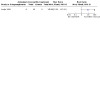
Comparison 4: Activated charcoal versus no treatment, Outcome 1: Pruritus improvement
Primary outcomes (fetal/neonatal)
Stillbirth/neonatal death
Outcome not reported.
Fetal distress/asphyxial events
Outcome not reported.
Secondary outcomes (maternal)
Biochemical assessments
After eight days of treatment, seven (70%) women taking activated charcoal compared with one (10%) woman in the no‐treatment group had decreased serum bile acid concentrations (MD −45.20 µmol/L, 95% CI −74.31 to −16.09; 20 women; Analysis 4.2). However, there were few to no differences between charcoal and no treatment in final serum ALT concentrations (MD 74.60, 95% CI −141.33 to 290.53; 20 women; Analysis 4.3).
4.2. Analysis.

Comparison 4: Activated charcoal versus no treatment, Outcome 2: Bile acids after 8 days treatment, µmol/L
4.3. Analysis.

Comparison 4: Activated charcoal versus no treatment, Outcome 3: ALT after 8 days treatment, U/L
Adverse effects of medication
Some participants reported that they found the charcoal suspension unpleasant to swallow. Some reported that their stools were black (as expected).
Secondary outcomes (fetal/neonatal)
Mean gestational age at birth
There was little to no difference in mean gestation at birth between the two groups (MD −1.00 week, 95% CI −2.77 to 0.77; Analysis 4.4).
4.4. Analysis.
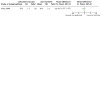
Comparison 4: Activated charcoal versus no treatment, Outcome 4: Mean gestational age at birth
The following secondary outcomes were not reported for this comparison: caesarean section, postpartum haemorrhage, meconium‐stained liquor, spontaneous or total preterm birth, or admission to neonatal unit.
5. Dexamethasone versus placebo
One trial (Glantz 2005) involving 83 women studied this comparison.
Primary outcomes (maternal)
Pruritus
No difference in pruritus score (100 mm VAS) was seen between the dexamethasone and placebo groups after three weeks treatment (83 women; no P value reported).
Primary outcomes (fetal/neonatal)
Stillbirths
One stillbirth was reported in the placebo group and none in the dexamethasone group (RR 0.43, 95% CI 0.02 to 10.31; 83 women; Analysis 5.1).
5.1. Analysis.
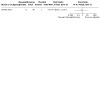
Comparison 5: Dexamethasone versus placebo, Outcome 1: Stillbirths
Fetal distress/asphyxial events
Asphyxial events included operative birth due to asphyxia, arterial umbilical pH less than 7.05 and Apgar score of less than seven at five minutes. Four (11%) babies born to women receiving dexamethasone suffered asphyxial events compared with two (4%) babies born to women who received placebo (RR 2.61, 95% CI 0.51 to 13.47; 83 women; Analysis 5.2).
5.2. Analysis.
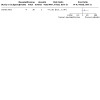
Comparison 5: Dexamethasone versus placebo, Outcome 2: Fetal distress/asphyxial event
Subgroup analysis (bile acid levels ≥ 40 µmol/L versus bile acid levels < 40 µmol/L)
Glantz 2005 presented data for the subgroups of bile acids equal to or greater than 40 µmol/L versus bile acids less than 40 µmol/L for one of our primary outcomes (fetal distress/asphyxial events) (Analysis 5.3). There were no differences between subgroups (test for subgroup differences: Chi2 = 0.69, df = 1 (P = 0.40), I2 = 0%).
5.3. Analysis.

Comparison 5: Dexamethasone versus placebo, Outcome 3: Subgroup analysis ‐ fetal distress/asphyxial event
Secondary outcomes (maternal)
Biochemical assessments
Liver function tests were reported only graphically in Glantz 2005, as medians and P values. The final serum bile acid concentrations were significantly reduced in the dexamethasone group compared with placebo overall (P = 0.01); and also in the women with severe cholestasis (serum bile acid equal to or greater than 40 µmol/L) (P = 0.01). For serum ALT concentrations, there was not a greater reduction in the dexamethasone group compared with the placebo group overall.
Caesarean section
Glantz 2005 did not report caesarean births but did indicate that rates of elective birth (both caesarean and vaginal) did not differ between the two groups (33% for dexamethasone and 38% for placebo).
Adverse effects of medication
One woman on dexamethasone suffered nausea, dizziness and stomach pain. One woman receiving placebo complained of severe headache.
Secondary outcomes (fetal/neonatal)
Meconium‐stained liquor
There were few to no differences for meconium‐stained liquor between dexamethasone and placebo (RR 1.00, 95% CI 0.56 to 1.78; 83 women; Analysis 5.4). Similarly, the results were few to no differences in the 'severe' subgroup, with five out of 11 women receiving dexamethasone having meconium‐stained liquor compared with six out of 11 women receiving placebo (RR 0.83, 95% CI 0.36 to 1.94; Analysis 5.4).
5.4. Analysis.

Comparison 5: Dexamethasone versus placebo, Outcome 4: Meconium‐stained liquor
Spontaneous birth at less than 37 weeks
There were few to no differences between dexamethasone and placebo for spontaneous preterm birth at less than 37 weeks' gestation (RR 1.52, 95% CI 0.21 to 10.90; random‐effects analysis: Tau2 = 1.56; I2 = 77%; 83 women; Analysis 5.5) or for the subgroup of women with severe (serum bile acid equal to or greater than 40 µmol/L) cholestasis (RR 0.60, 95% CI 0.19 to 1.92; 22 women; Analysis 5.5). There was evidence for a difference between subgroups (test for subgroup differences: Chi2 = 4.10, df = 1 (P = 0.04), I2 = 75.6%), suggesting a higher rate of spontaneous preterm birth with dexamethasone for lower bile acid concentrations than for higher concentrations.
5.5. Analysis.
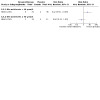
Comparison 5: Dexamethasone versus placebo, Outcome 5: Spontaneous birth at less than 37 weeks
Total preterm birth at less than 37 weeks (spontaneous and iatrogenic)
There were few to no differences between dexamethasone and placebo (RR 1.16, 95% CI 0.26 to 5.10; random‐effects analysis: Tau2 = 0.88; I2 = 77%: 83 women; Analysis 5.6). Four of 11 women receiving dexamethasone versus seven of 11 women receiving placebo in the severe subgroup (serum bile acid equal to or greater than 40 µmol/L) had a preterm birth (RR 0.57, CI 0.23 to 1.41; 22 women; Analysis 5.6). There was evidence for a difference between subgroups, (test for subgroup differences: Chi2 = 4.11, df = 1 (P = 0.04), I2 = 75.7%), again suggesting a higher rate of spontaneous preterm birth with dexamethasone for lower bile acid concentrations than for higher concentrations.
5.6. Analysis.
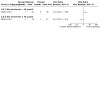
Comparison 5: Dexamethasone versus placebo, Outcome 6: Total preterm births at less than 37 weeks
For this comparison the following secondary outcomes were not reported: postpartum haemorrhage, mean gestational age at birth or admission to neonatal unit.
6. Ursodeoxycholic acid (UDCA) versus S‐adenosylmethionine (SAMe)
Six trials (Binder 2006; Floreani 1996; Nicastri 1998; Roncaglia 2004; Zhang 2012; Zhang 2015) involving 291 women compared these two interventions.
Primary outcomes (maternal)
Pruritus
Nicastri 1998 reported a greater fall in pruritus score on a 0 ‐ 4 scale with both interventions (P < 0.01). Results were analysed as a continuous outcome. Dichotomisation of data for re‐analysis was not possible because results were presented as mean and SD. Zhang 2012 reported symptomatic improvements in pruritus in both groups, but did not report the actual scores and stated that the differences were not statistically significant. Zhang 2015 reported symptomatic improvements in pruritus in both groups at one week (MD ‐0.31, 95% CI ‐0.61 to ‐0.01; Analysis 6.2) and two week post‐treatment (MD ‐0.38, 95% CI ‐0.82 to 0.06; Analysis 6.3).
6.2. Analysis.
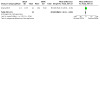
Comparison 6: UDCA versus SAMe, Outcome 2: Mean pruritus score one week post treatment
6.3. Analysis.
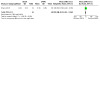
Comparison 6: UDCA versus SAMe, Outcome 3: Mean pruritus score two weeks post treatment
The other three trials reported the number of women with improved pruritus after treatment: Binder 2006 on a 10‐point scale, and Floreani 1996 and Roncaglia 2004 on four‐point scales. Improvements were seen favouring the UDCA group in comparison to the SAMe group in the following categories: any improvement (average RR 1.46, 95% CI 0.83 to 2.59; I2 = 67%; 3 trials, 117 women); marked improvement (RR 1.73, 95% CI 1.00 to 2.98; 1 trial, 51 women); complete resolution (RR 21.00, 95% CI 1.40 to 315.98; 1 trial, 20 women); and complete resolution or marked improvement (average RR 4.68, 95% CI 0.26 to 83.44; I2 = 78%; 2 trials, 71 women). However, we found substantial statistical heterogeneity in the analyses for any improvement and complete or marked improvement, so we used a random‐effects model in these analyses. SeeAnalysis 6.1.
6.1. Analysis.
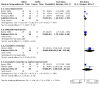
Comparison 6: UDCA versus SAMe, Outcome 1: Pruritus improvement
Primary outcomes (fetal/neonatal)
Stillbirth/neonatal death
Binder 2006 reported zero stillbirths in either group and Zhang 2012 and Zhang 2015 reported zero perinatal deaths in either group. Three trials (Floreani 1996; Nicastri 1998; Roncaglia 2004) did not comment on this outcome.
Fetal distress/asphyxial events
For Binder 2006, we included those women who delivered by caesarean section for suspected fetal asphyxia, to avoid duplication and overestimation of rates of fetal distress. For Roncaglia 2004, we included women with babies who had an Apgar score of less than seven at five minutes in our analysis. Floreani 1996 reported that none of the babies had Apgar scores less than seven at five minutes. Overall, there were few to no differences in fetal distress between the two groups (RR 0.94, 95% CI 0.25 to 3.58; 3 trials, 117 women; Analysis 6.4).
6.4. Analysis.

Comparison 6: UDCA versus SAMe, Outcome 4: Fetal distress/asphyxial events
Secondary outcomes (maternal)
Biochemical assessments
Women taking UDCA in Nicastri 1998 had a greater fall in serum bile acid concentrations compared with women taking SAMe (MD 12.90 µmol/L, 95% CI 4.36 to 21.44; 16 women; Analysis 6.5). Binder 2006 reported a lower serum bile acid concentration in the UDCA group compared with the SAMe group after treatment (MD −27.00 µmol/L, 95% CI −43.67 to −10.33; 51 women; Analysis 6.5).
6.5. Analysis.

Comparison 6: UDCA versus SAMe, Outcome 5: Bile acids, µmol/L
Serum ALT concentrations were lower with SAMe (MD ‐2.20 U/L, 95% CI −3.55 to −0.85; 51 women; Analysis 6.6).
6.6. Analysis.

Comparison 6: UDCA versus SAMe, Outcome 6: ALT, µkatl/L
Roncaglia 2004 reported differences in laboratory variables as median and P values in relation to treatment. A reduction was reported in serum bile acids (P = 0.001), and serum ALT (P = 0.001) in the group receiving UDCA, while the changes from baseline were not significant in the group receiving SAMe. All liver function results in Floreani 1996 were presented graphically: after 15 days treatment, women in the UDCA group showed lower serum total bile acid concentrations compared with women in the SAMe group (P < 0.05) and there were no differences seen for serum ALT concentrations after 15 days treatment with either UDCA or SAMe (20 women in total). Zhang 2015 (79 women) found no difference in serum bile acids between the two groups (Analysis 6.5).
Zhang 2012 is published in abstract form only. It is reported in the abstract that no differences in total bile acid(TBA), alanine aminotransferase, aspartate aminotransferase, and total bilirubin were observed between the groups.
Caesarean section
Four trials reported caesarean sections, with few to no difference seen between those women randomised to UDCA and those randomised to SAMe (RR 0.86, 95% CI 0.65 to 1.13; 4 trials, 196 women; Analysis 6.7).
6.7. Analysis.

Comparison 6: UDCA versus SAMe, Outcome 7: Caesarean section
Postpartum haemorrhage
Binder 2006 and Roncaglia 2004 reported estimated blood loss (mL) at birth rather than the incidence of postpartum haemorrhage. Differences between the groups were not apparent.
Adverse effects of medication
Binder 2006, Nicastri 1998, Roncaglia 2004, Zhang 2012 and Zhang 2015 noted no adverse effects on women or babies with either therapy. Floreani 1996 noted that both drugs were "well tolerated".
Secondary outcomes (fetal/neonatal)
Meconium‐stained liquor
Three trials compared the observation of meconium‐stained liquor at birth, with a 67% reduction in those women randomised to UDCA compared with those randomised to SAMe (RR 0.33, 95% CI 0.20 to 0.56; 3 trials, 176 women; Analysis 6.8).
6.8. Analysis.
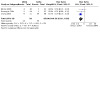
Comparison 6: UDCA versus SAMe, Outcome 8: Meconium‐stained liquor
Mean gestational age at birth
There was little to no difference in gestational age at birth between those women randomised to UDCA and those randomised to SAMe in two trials (MD −0.04 weeks, 95% CI −0.84 to 0.76; 2 trials, 66 women; Analysis 6.9).
6.9. Analysis.

Comparison 6: UDCA versus SAMe, Outcome 9: Mean gestational age at birth
Binder 2006 only reported ranges and no SD (no large differences were seen between UDCA and SAMe).
Spontaneous birth at less than 37 weeks
No important differences between UDCA and SAMe were seen in two trials for the incidence of spontaneous births at less than 37 weeks (RR 0.59, 95% 0.22 to 1.59; 2 trials, 62 women; Analysis 6.10).
6.10. Analysis.

Comparison 6: UDCA versus SAMe, Outcome 10: Spontaneous birth at less than 37 weeks
Total preterm birth at less than 37 weeks (spontaneous and iatrogenic)
Three other trials reported the total number of births at less than 37 weeks of gestation for the two groups, but did not specify how many of them were spontaneous preterm births. There was a 46% reduction in total preterm births in the UDCA group (RR 0.54, 95% CI 0.35 to 0.81; 3 trials, 150 women; Analysis 6.11).
6.11. Analysis.
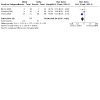
Comparison 6: UDCA versus SAMe, Outcome 11: Total preterm birth at less than 37 weeks
Admission to neonatal unit
Three trials reported the number of babies that were admitted to the neonatal unit, with little to no difference between groups (RR 0.56, 95% CI 0.26 to 1.20; 3 trials, 176 babies; Analysis 6.12).
6.12. Analysis.

Comparison 6: UDCA versus SAMe, Outcome 12: Admission to neonatal intensive care unit
7. Ursodeoxycholic acid (UDCA) versus dexamethasone
One study (Glantz 2005) involving 83 women compared these two interventions.
Primary outcomes (maternal)
Pruritus
Improvement in pruritus after three weeks of treatment was reported graphically. No differences were seen overall, although in the subgroup with severe cholestasis (serum bile acid equal to or greater than 40 µmol/L), UDCA was more effective in reducing pruritus than dexamethasone (P = 0.01).
Primary outcomes (fetal/neonatal)
Stillbirth/neonatal death
There were no stillbirths or neonatal deaths in either group.
Fetal distress/asphyxial events
There was no difference in fetal asphyxial events between the UDCA and the dexamethasone groups (RR 0.34, 95% CI 0.08 to 1.45; 83 women; Analysis 7.1).
7.1. Analysis.
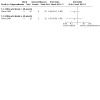
Comparison 7: UDCA versus dexamethasone, Outcome 1: Fetal distress/asphyxial events
Subgroup analysis (serum bile acid concentrations ≥ 40 µmol/L versus serum bile acid concentrations < 40 µmol/L)
Glantz 2005 presented data for the subgroups of women with serum bile acids equal to or greater than 40 µmol/L versus those with serum bile acids less than 40 µmol/L for fetal distress/asphyxial events. In the severe subgroup (serum bile acids equal to or greater than 40 µmol/L), none of 12 in the UDCA group and one of 11 in the dexamethasone group were reported to have fetal asphyxial events (RR 0.31, 95% CI 0.01 to 6.85; 23 women; Analysis 7.1). There were few to no differences between subgroups (Analysis 7.1) (test for subgroup differences: Chi2 = 0.01, df = 1 (P = 0.93), I2 = 0%).
Secondary outcomes (maternal)
Biochemical assessments
UDCA was better than dexamethasone in reducing serum bile acid (P = 0.001) and serum ALT (P = 0.01) concentrations. In the subgroup of women with severe cholestasis (serum bile acids equal to or greater than 40 µmol/L), these analyses showed greater reductions for UDCA compared with dexamethasone. These results were reported as graphs and P values.
Caesarean section
Glantz 2005 did not report caesarean births but did indicate that rates of elective birth (both caesarean and vaginal) did not differ between the two groups (32% for UDCA and 33% for dexamethasone).
Adverse effects of medication
One woman on UDCA complained of diarrhoea, while one woman receiving dexamethasone suffered from nausea, dizziness and stomach pain (RR 0.77, 95% CI 0.05 to 11.83; 83 women; Analysis 7.2).
7.2. Analysis.

Comparison 7: UDCA versus dexamethasone, Outcome 2: Adverse effects of medication
Secondary outcomes (fetal/neonatal)
Meconium‐stained liquor
There was little to no difference between UDCA and dexamethasone in the observation of meconium‐stained liquor (RR 1.06, 95% CI 0.60 to 1.87; 83 women; Analysis 7.3). In the severe subgroup, six of 12 women in the UDCA group and five of 11 in the dexamethasone group were reported to have meconium‐stained liquor.
7.3. Analysis.
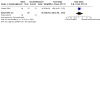
Comparison 7: UDCA versus dexamethasone, Outcome 3: Meconium‐stained liquor
Spontaneous birth at less than 37 weeks
There was little to no difference in spontaneous preterm birth between women taking UDCA and women taking dexamethasone (RR 0.68, 95% CI 0.29 to 1.59; 83 women; Analysis 7.4). In the severe subgroup, four of 12 women in the UDCA group and four of 11 in the dexamethasone group had a spontaneous preterm birth.
7.4. Analysis.

Comparison 7: UDCA versus dexamethasone, Outcome 4: Spontaneous birth at less than 37 weeks
Total preterm birth at less than 37 weeks (spontaneous and iatrogenic)
There were few to no differences between groups (RR 0.87, 95% CI 0.44 to 1.71; 83 women; Analysis 7.5). In the severe subgroup, six of 12 women in the UDCA group and four of 11 in the dexamethasone group had a preterm birth ((RR 1.38, 95% CI 0.52 to 3.61; Analysis 7.5.2).
7.5. Analysis.

Comparison 7: UDCA versus dexamethasone, Outcome 5: Total preterm birth at less than 37 weeks
The following secondary outcomes were not reported: postpartum haemorrhage, mean gestational age at birth or admission to neonatal unit.
8. Ursodeoxycholic acid (UDCA) versus cholestyramine
One trial (Kondrackiene 2005) involving 84 women compared these two interventions.
Primary outcomes (maternal)
Pruritus
Self‐assessment of pruritus was performed by participants on a 0 ‐ 4 scale. Pruritus was relieved after three to four days in the UDCA group compared with seven to 10 days for the cholestyramine group. UDCA was found to result in a lower mean pruritus score compared with cholestyramine. After four days, the pruritus score was lower in the group receiving UDCA compared with the group receiving cholestyramine (P < 0.05 after four days; P < 0.001 after 14 days). Results were presented as mean and SD, and dichotomisation was not possible. A higher number of women in the UDCA group reported a reduction in pruritus score by more than 50% (RR 3.50, 95% CI 1.81 to 6.77; 84 women; Analysis 8.1).
8.1. Analysis.

Comparison 8: UDCA versus cholestyramine, Outcome 1: Pruritus score (> 50% reduction after 14 days treatment)
Primary outcomes (fetal/neonatal)
Stillbirth/neonatal death
In this single trial there were no stillbirths or neonatal deaths in either group.
Fetal distress/asphyxial events
One out of 42 women in each group suffered morbidity associated with fetal distress (RR 1.00, 95% CI 0.06 to 15.47; 84 women; Analysis 8.2).
8.2. Analysis.

Comparison 8: UDCA versus cholestyramine, Outcome 2: Fetal distress/asphyxial event
Secondary outcomes (maternal)
Liver function
The trial did not find any differences in serum bile acid concentrations between the two groups after treatment (MD −1.80 µmol/L, 95% CI −13.10 to 9.50; 84 women; Analysis 8.3). For serum ALT, women in the UDCA group had much lower concentrations after treatment than women in the cholestyramine group (MD −144.20 U/L, 95% CI −186.63 to −101.77; 84 women; Analysis 8.4).
8.3. Analysis.

Comparison 8: UDCA versus cholestyramine, Outcome 3: Bile acids, µmol/L
8.4. Analysis.
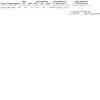
Comparison 8: UDCA versus cholestyramine, Outcome 4: ALT, U/L
Caesarean section
There were few to no differences between the two groups in rates of caesarean section (RR 2.33, 95% CI 0.65 to 8.42; 84 women; Analysis 8.5). Reasons for the seven caesarean sections in the UDCA group were: three multiple pregnancies, one placenta praevia, one cephalo‐pelvic disproportion, one fetal distress and one advanced maternal age. The three caesarean sections in the cholestyramine group were performed for: fetal distress, twin pregnancy and cephalo‐pelvic disproportion (one case each).
8.5. Analysis.

Comparison 8: UDCA versus cholestyramine, Outcome 5: Caesarean section
Adverse effects of medication
Cholestyramine use was found to have a greater number of adverse effects, with 12 out of 42 women suffering adverse effects (11 women suffering nausea, five women suffering vomiting and one woman suffering diarrhoea), compared with no adverse events reported for women taking UDCA (RR 0.04, 95% CI 0.00 to 0.65; Analysis 8.6).
8.6. Analysis.
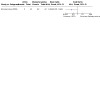
Comparison 8: UDCA versus cholestyramine, Outcome 6: Adverse effects of medication
Secondary outcomes (fetal/neonatal)
Mean gestational age at birth
Women receiving UDCA had a shorter gestational length than women in the cholestyramine group (MD −1.30 weeks, 95% CI −1.99 to −0.61: 1 trial; 84 women; Analysis 8.7).
8.7. Analysis.
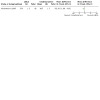
Comparison 8: UDCA versus cholestyramine, Outcome 7: Mean gestational age at birth
Spontaneous birth at less than 37 weeks
The study did not report spontaneous preterm births separately for the two interventions.
Total preterm birth at less than 37 weeks (spontaneous and iatrogenic)
There was little to no difference for preterm births between the two groups (RR 0.60, 95% CI 0.15 to 2.35; 84 women; Analysis 8.8).
8.8. Analysis.

Comparison 8: UDCA versus cholestyramine, Outcome 8: Total preterm birth at less than 37 weeks
The following secondary outcomes were not reported: postpartum haemorrhage, meconium‐stained liquor or admission to neonatal unit.
9. Ursodeoxycholic acid plus S‐adenosylmethionine (UDCA+SAMe) versus placebo
One trial (Nicastri 1998) in 16 women contributed data to this comparison.
Primary outcomes (maternal)
Pruritus
Pruritus was assessed on a 0 ‐ 4 scale and results were analysed as a continuous outcome. Dichotomisation of data for re‐analysis was not possible, because results were presented as mean and SD. Significant change in pruritus score from the baseline was reported after treatment in the two groups (P < 0.01).
Primary outcomes (fetal/neonatal)
Stillbirth/neonatal death
This outcome was not reported.
Fetal distress/asphyxial events
This outcome was not reported.
Secondary outcomes (maternal)
Biochemical assessments
Compared with women given placebo, women given UDCA + SAMe had greater decreases in serum bile acids (MD 41.70 µmol/L, 95% CI 35.57 to 47.83; 16 women; Analysis 9.1).
9.1. Analysis.
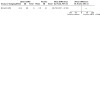
Comparison 9: UDCA + SAMe versus placebo, Outcome 1: Bile acid reduction at 20 days, µmol/L
Adverse effects of medication
No adverse effects were observed in the mothers or the babies in either group.
Secondary outcomes (fetal/neonatal)
Spontaneous birth at less than 37 weeks
One case of spontaneous preterm birth was reported in the UDCA + SAMe group compared with none in the placebo group in Nicastri 1998.
The following secondary outcomes were not reported: caesarean section, postpartum haemorrhage, meconium‐stained liquor, mean gestational age at birth, total preterm birth or admission to neonatal unit.
10. Ursodeoxycholic acid plus S‐adenosylmethionine (UDCA+SAMe) versus S‐adenosylmethionine (SAMe)
Three trials (147 women) contributed data to this comparison (Binder 2006; Nicastri 1998; Zhang 2012).
Primary outcomes (maternal)
Pruritus
Binder 2006 reported no difference for any improvement in pruritus on a 10‐point scale between the two groups (RR 1.42, 95% CI 0.99 to 2.03; 52 women). However, when restricted only to women with marked improvement, more women in the UDCA + SAMe group reported a marked improvement in pruritus compared with those in the SAMe‐alone group (RR 1.85, 95% CI 1.09 to 3.14; 52 women; Analysis 10.1).
10.1. Analysis.

Comparison 10: UDCA + SAMe versus SAMe, Outcome 1: Pruritus improvement
Nicastri 1998 reported a reduction in pruritus after treatment with UDCA + SAMe compared with SAMe alone. They used a 0 ‐ 4 scale for assessing pruritus but analysed results as a continuous outcome. Dichotomisation of data and re‐analysis was not possible because results were reported as mean and SD. Zhang 2012 reported improvements in pruritus symptoms in both groups but did not report the actual scores, and stated that the differences were not statistically significant.
Primary outcomes (fetal/neonatal)
Stillbirth/neonatal death
There were no stillbirths or neonatal deaths in Binder 2006 or Zhang 2012 (Analysis 10.2). This outcome was not reported in Nicastri 1998.
10.2. Analysis.

Comparison 10: UDCA + SAMe versus SAMe, Outcome 2: Stillbirths/neonatal deaths
Fetal distress/asphyxial events
In Binder 2006, one woman (4%) in the UDCA + SAMe group and three (12%) in the SAMe‐alone group had an operative birth for suspected fetal asphyxia (RR 0.31, 95% CI 0.03 to 2.78; 52 women; Analysis 10.3).
10.3. Analysis.
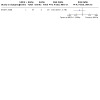
Comparison 10: UDCA + SAMe versus SAMe, Outcome 3: Fetal distress/asphyxial event
Secondary outcomes (maternal)
Biochemical assessments
Two trials reported contrasting results for improvement in bile acid concentrations. Binder 2006 found that serum bile acids after three to four weeks were lower in the UDCA + SAMe group compared with the SAMe‐alone group (MD −25.00 µmol/L, 95% CI −40.16 to −9.84; 52 women). In Nicastri 1998, reduction in serum bile acid concentrations were lower in the SAMe‐alone group compared with the UDCA + SAMe group after 20 days (MD 24.20 µmol/L, 95% CI 16.43 to 31.97; 16 women; Analysis 10.4).
10.4. Analysis.

Comparison 10: UDCA + SAMe versus SAMe, Outcome 4: Bile acids, µmol/L
Binder 2006 was the only trial to report serum ALT concentrations after treatment, which were lower after treatment with UDCA + SAMe compared with SAMe‐alone (MD −141 U/L, 95% CI −3.59 to −1.21; 52 women; Analysis 10.5).
10.5. Analysis.

Comparison 10: UDCA + SAMe versus SAMe, Outcome 5: ALT, µkatl/L
Caesarean section
Binder 2006 found little to no difference between the UDCA + SAMe group compared with the SAMe‐alone group for caesareans (RR 0.37, 95% CI 0.08 to 1.74, 52 women; Analysis 10.6).
10.6. Analysis.
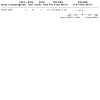
Comparison 10: UDCA + SAMe versus SAMe, Outcome 6: Caesarean section
Postpartum haemorrhage
The three trials did not report the incidence of postpartum haemorrhage. Binder 2006 compared the estimated blood loss at delivery, which was 296 mL in the UDCA + SAMe group compared with 295 mL in the SAMe‐alone group (MD 1.00, 95% CI −76.75 to 78.75; 52 women; Analysis 10.7).
10.7. Analysis.

Comparison 10: UDCA + SAMe versus SAMe, Outcome 7: Postpartum haemorrhage
Adverse effects of medication
Neither Binder 2006 nor Nicastri 1998 reported on adverse events. Zhang 2012 reported that no adverse drug reactions were observed.
Secondary outcomes (fetal/neonatal)
Meconium‐stained liquor
Binder 2006 found no differences between the UDCA + SAMe and the SAMe‐alone groups for observation of meconium‐stained liquor (RR 0.46, 95% CI 0.09 to 2.31; 52 women; Analysis 10.8).
10.8. Analysis.

Comparison 10: UDCA + SAMe versus SAMe, Outcome 8: Meconium‐stained liquor
Mean gestational age at birth
Binder 2006 indicated that this outcome did not differ significantly between the UDCA + SAMe and the SAMe‐alone groups, but did not report mean (and SD) gestational age at birth.
Spontaneous birth at less than 37 weeks
Nicastri 1998 reported three cases of spontaneous preterm labour in the SAMe‐alone group compared with one in the UDCA + SAMe group (RR 0.33, 95% CI 0.04 to 2.56; 16 women; Analysis 10.9).
10.9. Analysis.
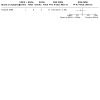
Comparison 10: UDCA + SAMe versus SAMe, Outcome 9: Spontaneous birth at less than 37 weeks
Total preterm births at less than 37 weeks (spontaneous and iatrogenic) ‐ not a prespecified outcome
In Binder 2006, the rate of preterm birth at less than 36 weeks was 28% (7/25) in the SAMe‐alone group compared with 15% (4/27) in the UDCA + SAMe group at less than 36 weeks (RR 0.53, 95% CI 0.18 to 1.59; 52 women; Analysis 10.10).
10.10. Analysis.

Comparison 10: UDCA + SAMe versus SAMe, Outcome 10: Total preterm birth at less than 37 weeks
Admission to neonatal unit
Binder 2006 reported few to no differences between UDCA + SAMe and the SAMe‐alone groups for admission to the neonatal unit (RR 0.46, 95% CI 0.09 to 2.31; 52 women; Analysis 10.11).
10.11. Analysis.

Comparison 10: UDCA + SAMe versus SAMe, Outcome 11: Admission to neonatal intensive care unit
11. Ursodeoxycholic acid plus S‐adenosylmethionine (UDCA+SAMe) versus ursodeoxycholic acid (UDCA)
Five trials (295 women) contributed data to this comparison (Binder 2006; Luo 2008; Nicastri 1998; Sun 2014; Zhang 2012).
Primary outcomes (maternal)
Pruritus
Binder 2006 reported the effect of treatment on pruritus as deterioration, not affected, mild improvement and marked improvement. Few to no differences were seen between the UDCA + SAMe and the UDCA‐alone groups for improvement in pruritus, either for any improvement (RR 1.05, 95% CI 0.83 to 1.35; 53 women) or a marked improvement (RR 1.07, 95% CI 0.76 to 1.50; 53 women; Analysis 11.1).
11.1. Analysis.
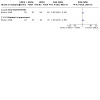
Comparison 11: UDCA + SAMe versus UDCA, Outcome 1: Pruritus improvement
Nicastri 1998 used a 0 ‐ 4 scale for assessing pruritus and analysed results as a continuous outcome, which may not be the appropriate analysis. They found a reduction in pruritus score for the UDCA + SAMe group compared with the UDCA‐alone group. Luo 2008 reported mean itching score (0 ‐ 4 scale) as mean and SD before and after treatment, and we were therefore unable to include this in the meta‐analysis. The results reported were: UDCA + SAMe 'before treatment' 3.89 ± 1.52, 'after treatment' 1.12 ± 0.63; UDCA 'before treatment' 3.90 ± 1.43, 'after treatment' 2.78 ± 0.79. Zhang 2012 reported improvements in pruritus symptoms in both groups, but did not report the actual scores and stated that the differences were not statistically significant. Sun 2014 found a small difference in pruritus score associated with UDCA + SAMe treatment versus UDCA‐alone treatment (MD −0.41, 95% CI −0.66 to −0.16; 80 women; Analysis 11.2).
11.2. Analysis.

Comparison 11: UDCA + SAMe versus UDCA, Outcome 2: Mean pruritus score post treatment
Primary outcomes (fetal/neonatal)
Stillbirth/neonatal death
There were no stillbirths or neonatal deaths in Binder 2006 or Zhang 2012 (Analysis 11.3). The other three trials (Luo 2008; Nicastri 1998; Sun 2014) did not report this outcome.
11.3. Analysis.

Comparison 11: UDCA + SAMe versus UDCA, Outcome 3: Stillbirths/neonatal deaths
Fetal distress/asphyxial events
Binder 2006 and Sun 2014 reported on this, finding a reduction in events in the UDCA + SAMe group (RR 0.14, 95% CI 0.03 to 0.76; 2 trials, 133 women; Analysis 11.4).Luo 2008 prespecified an Apgar score of seven or lower as one of the perinatal outcomes, but these data were either not reported or not translated.
11.4. Analysis.
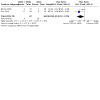
Comparison 11: UDCA + SAMe versus UDCA, Outcome 4: Fetal distress/asphyxial event
Secondary outcomes (maternal)
Biochemical assessments
Binder 2006 found no difference between the UDCA + SAMe and the UDCA‐alone groups for serum bile acid concentrations (MD 2.00 µmol/L, 95% CI −11.71 to 15.71; 53 women) after treatment, whereas Nicastri 1998 did find a reduction in serum bile acid concentrations in women taking UDCA (MD 11.30 µmol/L, 95% CI 2.16 to 20.44; 16 women; Sun 2014 found a reduction in serum bile acid concentrations with UDCA + SAMe (MD −33.40 µmol/L, 95% CI −34.87 to −31.93; 80 women) Analysis 11.5). The extremely high heterogeneity (I2 of 96%) in analysis 11.5 may be largely due to the trial by Sun 2014 which showed a larger reduction in bile acids and a very narrow standard deviation. Since this trial was reported only in abstract and classed as low quality these results should be interpreted with caution.
11.5. Analysis.

Comparison 11: UDCA + SAMe versus UDCA, Outcome 5: Bile acids, µmol/L
Binder 2006 found lower concentrations of serum aminotransferase (ALT) after treatment with combined therapy (MD −2.40 U/L, 95% CI −3.59 to −1.21; 52 women; Analysis 11.6).
11.6. Analysis.

Comparison 11: UDCA + SAMe versus UDCA, Outcome 6: ALT, µkatl/L
Luo 2008 reported a greater reduction with combined therapy (MD 1.28 IU/L, 95% CI 1.15 to 1.41; 64 women).
Two studies (Luo 2008; Sun 2014) found a reduction in serum alanine aminotransferase (ALT) with UDCA + SAMe compared with UDCA‐alone (MD 1.28, 95% CI 1.15 to 1.41; 144 women; Analysis 11.7)
11.7. Analysis.
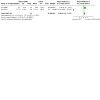
Comparison 11: UDCA + SAMe versus UDCA, Outcome 7: Reduction in ALT (IU/L) after treatment
Caesarean section
Three trials reported this outcome. The rates of caesarean section were lower in the UDCA + SAMe group compared with UDCA‐alone (RR 0.50, 95% CI 0.35 to 0.73; 196 women; Analysis 11.8).
11.8. Analysis.
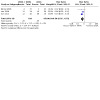
Comparison 11: UDCA + SAMe versus UDCA, Outcome 8: Caesarean section
Postpartum haemorrhage
Sun 2014 reported the incidence of postpartum haemorrhage. There was a reduction in postpartum haemorrhage in the UDCA + SAMe group compared with the UDCA‐alone group (RR 0.41, 95% CI 0.22 to 0.78; 80 women).
Adverse effects of medication
There were no adverse effects reported in the three studies (Binder 2006; Nicastri 1998; Zhang 2012). Luo 2008 and Sun 2014 did not report this outcome.
Secondary outcomes (fetal/neonatal)
Meconium‐stained liquor
Binder 2006 and Sun 2014 reported a reduction in meconium‐stained liquor associated with UDCA + SAMe compared with UDCA‐alone (RR 0.55, 95 CI 0.34 to 0.88; 2 trials, 133 women; Analysis 11.10). Luo 2008 prespecified this outcome but data were not reported or translated.
11.10. Analysis.

Comparison 11: UDCA + SAMe versus UDCA, Outcome 10: Meconium‐stained liquor
Mean gestational age at birth
Three trials did not report mean gestation at birth with SDs (Luo 2008; Nicastri 1998; Zhang 2012). Binder 2006 and Sun 2014 indicated that this outcome did not differ significantly between the two groups.
Spontaneous birth at less than 37 weeks
In Nicastri 1998, one woman who received UDCA + SAMe and two women who received UDCA‐alone went into spontaneous labour at less than 37 weeks' gestation (RR 0.50, 95% CI 0.06 to 4.47; 16 women; Analysis 11.11).
11.11. Analysis.

Comparison 11: UDCA + SAMe versus UDCA, Outcome 11: Spontaneous birth at less than 37 weeks
Total preterm birth at less than 37 weeks (spontaneous and iatrogenic)
Luo 2008 found few to no differences for total preterm births at less than 37 weeks' gestation between the two groups (RR 0.69, 95% CI 0.29 to 1.62; 64 women; Analysis 11.12). In Binder 2006, the total preterm birth rate (< 36 weeks) was 15% in both groups.
11.12. Analysis.
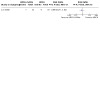
Comparison 11: UDCA + SAMe versus UDCA, Outcome 12: Total preterm births at less than 37 weeks
Admission to neonatal unit
Binder 2006 reported that two babies in the UDCA + SAMe group were admitted to neonatal intensive care unit for moderate respiratory distress syndrome (RDS), and that three babies in the UDCA‐alone group (severe prematurity in one baby and for RDS in two babies) were admitted to the neonatal unit (RR 0.64, 95% CI 0.12 to 3.54; 53 babies; Analysis 11.13).
11.13. Analysis.

Comparison 11: UDCA + SAMe versus UDCA, Outcome 13: Admission to neonatal intensive care unit
12. Ursodeoxycholic acid (UDCA) and Salvia versus UDCA (ursodeoxycholic acid)
One trial (Fang 2009) (128 women) contributed data to this comparison.
Primary outcomes (maternal)
Pruritus
Reduction in pruritus on a 0 ‐ 4 scale from moderate/severe to mild pruritus (3.6 to 1.4) was reported in 58 of 72 (80.5%) women in the UDCA + salvia group compared with 43 of 56 (76.7%) in the UDCA‐alone group, showing no difference (RR 1.05, 95% CI 0.87 to 1.26; 128 women; Analysis 12.1). These effects were seen within four to six days in UDCA + salvia group and eight to 10 days in the UDCA‐alone group.
12.1. Analysis.
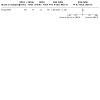
Comparison 12: UDCA + Salvia versus UDCA, Outcome 1: Reduction in pruritus from moderate/severe to mild (0‐4 scale)
Primary outcomes (fetal/neonatal)
Stillbirth/neonatal death
The study did not report this outcome.
Fetal distress/asphyxial events
Thirteen women in the combination group and 11 women in the UDCA‐alone group had caesarean births due to fetal distress. There was little to no difference (RR 0.92, 95% CI 0.45 to 1.89; 128 women; Analysis 12.4)
12.4. Analysis.
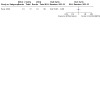
Comparison 12: UDCA + Salvia versus UDCA, Outcome 4: Fetal distress
Secondary outcomes (maternal)
Biochemical assessments
Fang 2009 found a reduction in the concentrations of serum ALT after treatment with UDCA + salvia compared with UDCA‐alone ((MD −14.90 µmol/L, 95% CI −24.42 to −5.38; 128 women; Analysis 12.2). Data on serum bile acids were not available.
12.2. Analysis.
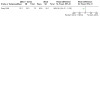
Comparison 12: UDCA + Salvia versus UDCA, Outcome 2: Reduction in ALT (IU/L) after treatment
Secondary outcomes (fetal/neonatal)
Meconium‐stained liquor
No differences between UDCA + salvia and UDCA‐alone were seen for meconium‐stained liquor (RR 0.86, 95 CI 0.38 to 1.98; 128 women; Analysis 12.3).
12.3. Analysis.

Comparison 12: UDCA + Salvia versus UDCA, Outcome 3: Meconium‐stained liquor
The following secondary outcomes were not reported: caesarean section (although caesarean births performed for fetal distress were reported, caesarean section for other indications were not reported), postpartum haemorrhage, adverse effects of medication, mean gestational age at birth, spontaneous preterm birth, total preterm birth or admission to neonatal unit.
13. Yinchenghao decoction (YCHD) versus S‐adenosylmethionine (SAMe)
One trial (Huang 2004) (60 women) contributed data to this comparison.
Primary outcomes (maternal)
Pruritus
Huang 2004 demonstrated few to no differences between YCHD and SAMe in improving the degree of pruritus after treatment (RR 1.00, 95% CI 0.77 to 1.29; 60 women; Analysis 13.1) as measured by the symptom of itching appraisal score pre‐ and post‐treatment.
13.1. Analysis.
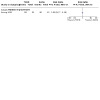
Comparison 13: YCHD versus SAMe, Outcome 1: Degree of pruritus after treatment
Primary outcomes (fetal/neonatal)
Stillbirth/neonatal death
There were no stillbirths or neonatal deaths in either group.
Fetal distress/asphyxial events
No difference in asphyxial events was found between the two groups (RR 0.86, 95% CI 0.29 to 2.50; 60 women; Analysis 13.3).
13.3. Analysis.

Comparison 13: YCHD versus SAMe, Outcome 3: Fetal distress/asphyxial event
Secondary outcomes (maternal)
Biochemical assessments
There was little to no difference in the concentrations of glycocholic acid (a constituent of serum bile acids) (MD −1.50, 95% CI −6.12 to 3.12; 60 women; Analysis 13.4) or of ALT (MD 3.40, 95% CI −12.37 to 19.17; 60 women; Analysis 13.5) when comparing the two intervention groups.
13.4. Analysis.

Comparison 13: YCHD versus SAMe, Outcome 4: Bile salt (CGA) concentration
13.5. Analysis.
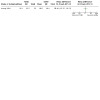
Comparison 13: YCHD versus SAMe, Outcome 5: ALT
Caesarean section
No differences were seen between the YCHD and SAMe groups for caesarean section (RR 0.93, 95% CI 0.56 to 1.55; 60 women; Analysis 13.6).
13.6. Analysis.
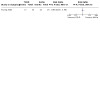
Comparison 13: YCHD versus SAMe, Outcome 6: Caesarean section
Secondary outcomes (fetal/neonatal)
Meconium‐stained liquor
No differences were found between YCHD and SAMe for meconium‐stained liquor (RR 0.86, 95% CI 0.29 to 2.50; 60 women; Analysis 13.7).
13.7. Analysis.

Comparison 13: YCHD versus SAMe, Outcome 7: Meconium‐stained liquor
Mean gestational age at birth
Mean gestational age at birth was 38.1 in the YCHD group and 37.4 weeks in the SAMe group. There was little difference between the two groups (MD 0.70 weeks, 95% CI −0.35 to 1.75; Analysis 13.8).
13.8. Analysis.
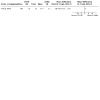
Comparison 13: YCHD versus SAMe, Outcome 8: Mean gestational age at birth
The following secondary outcomes were not reported: postpartum haemorrhage, adverse effects of medication, spontaneous preterm birth, total preterm birth or admission to neonatal unit.
14. Danxioling versus Yiganling
One trial (Shi 2002) (58 women) contributed data to this comparison.
Primary outcomes (maternal)
Pruritus
All participants (29 women in each group) noticed improvement in pruritus after treatment (MD 1.00, 95% CI 0.94 to 1.07; 58 women). More women receiving Danxioling experienced marked improvement in pruritus in comparison to the Yiganling group (MD 1.67, 95% CI 1.14 to 2.44; 58 women). SeeAnalysis 14.1.
14.1. Analysis.
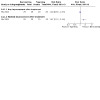
Comparison 14: Danxioling versus Yiganling, Outcome 1: Pruritus
Primary outcomes (fetal/neonatal)
Stillbirth/neonatal death
There were no stillbirths or neonatal deaths in either group (Analysis 14.2).
14.2. Analysis.
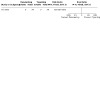
Comparison 14: Danxioling versus Yiganling, Outcome 2: Stillbirths/neonatal deaths
Fetal distress/asphyxial events
Shi 2002 did not report this outcome.
Secondary outcomes (maternal)
Biochemical assessments
Shi 2002 found little to no difference in the concentrations of serum bile acids (MD −3.83, 95% CI −22.59 to 14.93; 58 women; Analysis 14.3), or of serum ALT (MD 5.20, 95% CI −36.90 to 47.30; 54 women; Analysis 14.4).
14.3. Analysis.

Comparison 14: Danxioling versus Yiganling, Outcome 3: Bile acid concentration (CGA)
14.4. Analysis.
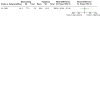
Comparison 14: Danxioling versus Yiganling, Outcome 4: ALT
Caesarean section
Few to no differences were seen between the Danxioling and Yiganling groups for the incidence of caesarean section (RR 0.60, 95% CI 0.16 to 2.28; 58 women; Analysis 14.5).
14.5. Analysis.

Comparison 14: Danxioling versus Yiganling, Outcome 5: Caesarean section
Secondary outcomes (fetal/neonatal)
Meconium‐stained liquor
A lower incidence of meconium‐stained liquor was observed in the group receiving Danxioling in comparison with the group receiving Yiganling (RR 0.40, 95% CI 0.18 to 0.89; 58 women; Analysis 14.6).
14.6. Analysis.

Comparison 14: Danxioling versus Yiganling, Outcome 6: Meconium‐stained liquor
Spontaneous birth at less than 37 weeks
There was little to no difference in the rates of spontaneous preterm births between the two groups (RR 0.33, 95% CI 0.04 to 3.02; 58 women; Analysis 14.7).
14.7. Analysis.
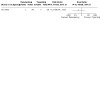
Comparison 14: Danxioling versus Yiganling, Outcome 7: Spontaneous birth at less than 37 weeks
The following secondary outcomes were not reported: postpartum haemorrhage, adverse effects of medication, mean gestational age at birth, total preterm birth or admission to neonatal unit.
Discussion
Summary of main results
With the addition of Chappell 2019, there is moderate‐certainty evidence for the effect of ursodeoxycholic acid (UDCA) in women with intrahepatic cholestasis of pregnancy on pruritus. The certainty of the evidence is very low for stillbirth because of serious concerns about limitations in study design and imprecision of results from very small unregistered trials. The certainty of the evidence is also very low for fetal distress/asphyxial events, again because of limitations in study design and the imprecision of results for this outcome. For all other treatments the certainty of the evidence for outcomes remains low.
Two placebo‐controlled trials of UDCA have now reported a small reduction in itching as a prespecified outcome across all women with intrahepatic cholestasis of pregnancy (moderate‐certainty evidence). However, both show a small effect well below the size which most women and healthcare professionals might regard as worthwhile.
UDCA may also be more effective in improving pruritus than either S‐adenosylmethionine (SAMe) or cholestyramine, and a combination of UDCA and SAMe may be more effective than SAMe and placebo, but the certainty of the evidence is low. Pruritus was reduced with Danxioling when compared with Yiganling, but the use of these medicines is currently limited to East Asia. Information on safety and efficacy, and further evidence from well‐designed randomised controlled trials, are needed before the use of these drugs can be adopted globally. The results for pruritus improvement from trials comparing other interventions were either inconsistent or showed no evidence of an effect.
Six trials comparing UDCA with placebo reported fetal or neonatal deaths, with seven deaths reported overall (six in the placebo, one in the intervention groups). This difference may have occurred by chance. Four of the six stillbirths in the placebo groups occurred in small unregistered trials (Glantz 2005; Palma 1997; Wang 2003), and it is unclear whether one of the stillbirths was attributable to intrahepatic cholestasis of pregnancy. In the largest placebo‐controlled trial (Chappell 2019), two deaths occurred in placebo groups versus one in the UDCA groups.
There were fewer instances of fetal distress in the UDCA groups compared with placebo, but the certainty of the evidence is very low and the definition of 'fetal distress' varied across trials. When the analysis was restricted to the two studies at low risk of bias, the intervention effect disappeared and no difference was seen in instances of fetal distress between the groups. In the UDCA groups, the rates of passage of meconium‐stained liquor were lower and the mean gestational age at birth was higher, but neither clearly different.
The rates of fetal distress within other comparisons were all based on low‐certainty evidence. With this proviso, they were similar when UDCA was compared with SAMe, with cholestyramine and with UDCA + salvia. The group receiving combined UDCA + SAMe had fewer instances of fetal distress/asphyxial events when compared with the group randomised to UDCA or SAMe monotherapy. The rates of fetal distress were higher in the group receiving dexamethasone when compared with both UDCA and placebo.
Overall completeness and applicability of evidence
The 26 studies included in this review are spread over 14 comparisons. In only two comparisons was it possible to include more than two trials, with seven studies comparing UDCA versus placebo, and four trials comparing UDCA versus SAMe. Unfortunately in the four trials comparing SAMe versus placebo only single study analyses were possible. In the remaining trials, it was not possible to answer reliably how beneficial the relative merits of the interventions are, because of the paucity of data.
Quality of the evidence
The risks of bias of the studies included in this review ranged from low to high. Two large studies comparing UDCA with placebo had a low risk of bias (Chappell 2012; Chappell 2019). The remainder had a high or uncertain risk of bias.
Due to the varying methods of measuring and reporting pruritus, pooling of data for this outcome was only possible for the Chappell 2012 and Chappell 2019 trials (moderate‐certainty evidence). Eight trials (40%) used a 0 ‐ 4 scale for pruritus assessment and analysed it as a continuous outcome, which may not be an appropriate method for such a short scale. Dichotomisation of these data and re‐analysis was possible in only one trial. One trial did not specify the methods used for assessing pruritus. Pruritus score was assessed as being of moderate certainty, with downgrading of the evidence due to imprecision. For stillbirth and fetal distress/asphyxial events the evidence was assessed as being of very low certainty with very serious concerns due to limitations in study design and serious imprecision.
Potential biases in the review process
The evidence for this review is derived from studies identified in a detailed search process. We are confident that the search has identified all relevant trials. Two of the review authors are co‐authors of included trials (Chappell 2012; Chappell 2019) and four of the review authors are investigators on ongoing trials (TURRIFIC study). These trials were and will be assessed independently by review authors not involved in them.
Agreements and disagreements with other studies or reviews
The first version of this review (Burrows 2001) included just nine randomised controlled trials with data from 227 women. In summary, the authors found insufficient evidence for any of the interventions, alone or in combination in treating women with intrahepatic cholestasis of pregnancy. The previous update (Gurung 2013) included three new comparisons between UDCA and placebo (Chappell 2012; Glantz 2005; Liu 2006), but concluded only that the small reduction in pruritus scores was real. A meta‐analysis comparing UDCA with SAMe (Zhang 2016), which did not include Chappell 2012 and which was published before Chappell 2019, suggested that UDCA was more effective than SAMe in reducing pruritus and preterm birth. Another meta‐analysis (Kong 2016) concluded that UDCA improved pruritus and liver function and reduced adverse maternal and fetal outcomes in pregnant women with ICP. However, the authors of that review graded the risks of bias for many of the included studies as being much higher than we did. A meta‐analysis of UDCA versus other drugs (Bacq 2012) concluded that UDCA is effective in improving pruritus, and liver function may improve fetal outcomes; it did not include Chappell 2012.
Authors' conclusions
Implications for practice.
Compared with placebo, UDCA probably shows a reduction in pruritus. However the size of the effect is small and for most pregnant women and clinicians, the reduction may fall below the minimum clinically worthwhile effect. There may be a place for it in offering a test period to a woman for managing pruritus if itching is severe. The evidence was unclear for other adverse fetal outcomes, due to very low‐certainty evidence.
There is insufficient evidence to indicate that SAMe, guar gum, activated charcoal, dexamethasone, cholestyramine, YCHD, DXLP, Salvia, Yiganling, alone or in combination, are effective in treating women with cholestasis of pregnancy. There are no trials of the efficacy of topical emollients.
Implications for research.
We need new treatments for ICP for prevention of itching and of adverse perinatal outcomes, as well as identifying women who may respond to UDCA.
Recommendations for future research
· In women with ICP:
‐ What is an effective treatment for itching?
‐ What is an effective treatment to prevent adverse perinatal outcomes?
‐ Does the response to UDCA vary by baseline characteristics such as baseline bile acid concentrations?
Feedback
Gludd, July 2007,
Summary
Could you explain why you chose to exclude trials published in abstract form only. Due to publication bias, trials are more likely to be published if they report statistically significant results. Excluding abstracts may therefore lead to an overestimate of treatment effects.
(Summary of comment from Lise Lotte Gluud, July 2007)
Reply
This review has been recently updated by a new review team and we have now included a randomised controlled trial published in abstract form (Leino 1998). However, it was not reported in a way that enabled the results to be included in RevMan 2014 and so is included in the text of the UCDA versus placebo results.
Contributors
Feedback: Lise Lotte Gluud
Reply to feedback: Vinita Gurung, Philippa Middleton, and Jim G Thornton
What's new
| Date | Event | Description |
|---|---|---|
| 13 December 2019 | New search has been performed | Scope of the review limited to pharmacological interventions. The term "obstetric cholestasis" replaced with "intrahepatic cholestasis of pregnancy" throughout. Two new authors added: Walker K, Chappell L. |
| 13 December 2019 | New citation required but conclusions have not changed | Search updated, five new trials included. Incorporation of five new trials did not change the overall conclusions of this review. |
History
Protocol first published: Issue 4, 1997 Review first published: Issue 4, 2001
| Date | Event | Description |
|---|---|---|
| 21 November 2016 | Amended | Results in analysis 6.1 for Floreani 1996 corrected. |
| 6 May 2014 | Amended | Michael Stokes added on the byline as an author and his contribution specified. |
| 1 March 2013 | New citation required and conclusions have changed | In this update, there is now support for a modest beneficial effect of ursodeoxycholic acid (UDCA) on pruritus, in the UDCA versus placebo comparison. |
| 20 February 2013 | New search has been performed | Search updated. Twelve studies have been included (Binder 2006; Fang 2009; Glantz 2005; Huang 2004; Kondrackiene 2005; Leino 1998; Liu 2006; Luo 2008; Roncaglia 2004; Shi 2002; Chappell 2012; Zhang 2012). A new team of review authors prepared this review update. The methods have also been updated. |
| 6 June 2011 | Feedback has been incorporated | The authors have replied to the feedback by Gludd from July 2007. SeeFeedback. |
| 30 November 2009 | Amended | Search updated. Nineteen reports added to Studies awaiting classification. |
| 30 October 2008 | Amended | Converted to new review format. |
| 13 November 2007 | Feedback has been incorporated | Feedback added. |
Acknowledgements
Bob Burrows, Ornella Clavisi and Elizabeth Burrows for preparing the first version of this review (Burrows 2001).
We acknowledge Michael Stokes, Vinita Gurung and Steve Milan for their contributions to the previous version of this review (Gurung 2013).
We acknowledge Leanne Jones, Research Associate, Cochrane Pregnancy and Childbirth Group, for her support in the 2013 update.
We acknowledge Aidan Tan for his help with translation.
This project was supported by the National Institute for Health Research (NIHR), via Cochrane Infrastructure funding to Cochrane Pregnancy and Childbirth. The views and opinions expressed therein are those of the authors and do not necessarily reflect those of the Evidence Synthesis Programme, the NIHR, National Health Service (NHS) or the Department of Health and Social Care.
As part of the pre‐publication editorial process, this review has been commented on by three peers (an editor and two referees who are external to the editorial team), a member of our international panel of consumers and our Group's Statistical Adviser. The authors are grateful to the following peer reviewers for their time and comments: Danielle Di Mascio, Department of Maternal and Child Health and Urological Sciences, Sapienza University of Rome, Italy; Johanna Quist‐Nelson, Thomas Jefferson University Hospital, Philidelphia, USA.
Appendices
Appendix 1. Search methods for ICTRP and ClinicalTrials.gov
We ran each line separately
ICTRP
cholestasis AND pregnancy
cholestasis AND pregnant
ClinicalTrials.gov
Advanced search
pregnancy | Interventional Studies | Cholestasis
Data and analyses
Comparison 1. UDCA versus placebo.
| Outcome or subgroup title | No. of studies | No. of participants | Statistical method | Effect size |
|---|---|---|---|---|
| 1.1 Mean of worst itching scores over preceding 24 hours between randomisation and delivery | 2 | 715 | Mean Difference (IV, Fixed, 95% CI) | ‐7.64 [‐9.69, ‐5.60] |
| 1.2 Pruritus improvement | 1 | Risk Ratio (M‐H, Fixed, 95% CI) | Totals not selected | |
| 1.3 Mean of average itching scores over preceding 24 hours between randomisation and delivery | 1 | Mean Difference (IV, Fixed, 95% CI) | Totals not selected | |
| 1.4 Stillbirth | 6 | 955 | Risk Ratio (M‐H, Random, 95% CI) | 0.33 [0.08, 1.37] |
| 1.5 Fetal distress/asphyxial event | 6 | 944 | Risk Ratio (M‐H, Random, 95% CI) | 0.70 [0.35, 1.40] |
| 1.6 Subgroup analysis ‐ fetal distress/asphyxial events | 1 | Risk Ratio (M‐H, Fixed, 95% CI) | Totals not selected | |
| 1.6.1 Bile acid levels < 40 µmol/L | 1 | Risk Ratio (M‐H, Fixed, 95% CI) | Totals not selected | |
| 1.6.2 Bile acid levels ≥ 40 µmol/L | 1 | Risk Ratio (M‐H, Fixed, 95% CI) | Totals not selected | |
| 1.7 Change in bile acid concentration, µmol/L | 2 | Mean Difference (IV, Fixed, 95% CI) | Subtotals only | |
| 1.7.1 At 20 days | 2 | 519 | Mean Difference (IV, Fixed, 95% CI) | ‐20.45 [‐26.07, ‐14.84] |
| 1.8 ALT, IU/L | 4 | 581 | Mean Difference (IV, Random, 95% CI) | ‐68.73 [‐104.09, ‐33.38] |
| 1.8.1 At two weeks | 1 | 68 | Mean Difference (IV, Random, 95% CI) | ‐90.21 [‐101.96, ‐78.46] |
| 1.8.2 At three weeks | 2 | 31 | Mean Difference (IV, Random, 95% CI) | ‐98.65 [‐217.02, 19.72] |
| 1.8.3 ALT post randomisation, exact time not defined | 1 | 482 | Mean Difference (IV, Random, 95% CI) | ‐37.90 [‐60.85, ‐14.95] |
| 1.9 ALT reduction, IU/L | 2 | 498 | Mean Difference (IV, Fixed, 95% CI) | 84.83 [70.61, 99.05] |
| 1.9.1 At 20 days | 2 | 498 | Mean Difference (IV, Fixed, 95% CI) | 84.83 [70.61, 99.05] |
| 1.10 Caesarean section | 5 | 850 | Risk Ratio (M‐H, Fixed, 95% CI) | 1.05 [0.89, 1.23] |
| 1.11 Postpartum haemorrhage | 3 | 731 | Risk Ratio (M‐H, Fixed, 95% CI) | 0.94 [0.76, 1.15] |
| 1.12 Adverse effects of medication | 4 | 824 | Risk Ratio (M‐H, Fixed, 95% CI) | 0.80 [0.56, 1.14] |
| 1.13 Meconium‐stained liquor | 4 | 910 | Risk Ratio (M‐H, Random, 95% CI) | 0.63 [0.39, 1.00] |
| 1.14 Mean gestational age at birth (weeks) | 5 | 800 | Mean Difference (IV, Random, 95% CI) | 1.50 [0.20, 2.80] |
| 1.15 Spontaneous birth at less than 37 weeks | 3 | 749 | Risk Ratio (M‐H, Fixed, 95% CI) | 0.78 [0.49, 1.23] |
| 1.16 Total preterm birth at less than 37 weeks | 3 | 819 | Risk Ratio (M‐H, Random, 95% CI) | 0.60 [0.37, 0.97] |
| 1.17 Admission to neonatal intensive care unit | 2 | 764 | Risk Ratio (M‐H, Fixed, 95% CI) | 0.77 [0.55, 1.08] |
1.3. Analysis.

Comparison 1: UDCA versus placebo, Outcome 3: Mean of average itching scores over preceding 24 hours between randomisation and delivery
Comparison 2. SAMe versus placebo.
| Outcome or subgroup title | No. of studies | No. of participants | Statistical method | Effect size |
|---|---|---|---|---|
| 2.1 Stillbirth/neonatal death | 1 | Risk Ratio (M‐H, Fixed, 95% CI) | Totals not selected | |
| 2.2 Bile acid reduction, µmol/L | 1 | Mean Difference (IV, Fixed, 95% CI) | Totals not selected | |
| 2.2.1 At 20 days | 1 | Mean Difference (IV, Fixed, 95% CI) | Totals not selected | |
| 2.3 ALT reduction, IU/L | 1 | Mean Difference (IV, Fixed, 95% CI) | Totals not selected | |
| 2.3.1 At 20 days | 1 | Mean Difference (IV, Fixed, 95% CI) | Totals not selected | |
| 2.4 Caesarean section | 1 | Risk Ratio (M‐H, Fixed, 95% CI) | Totals not selected | |
| 2.5 Spontaneous birth at less than 37 weeks | 1 | Risk Ratio (M‐H, Fixed, 95% CI) | Totals not selected | |
| 2.6 Total preterm birth at less than 37 weeks | 1 | Risk Ratio (M‐H, Fixed, 95% CI) | Totals not selected |
Comparison 3. Guar gum versus placebo.
| Outcome or subgroup title | No. of studies | No. of participants | Statistical method | Effect size |
|---|---|---|---|---|
| 3.1 Pruritus improvement | 1 | Risk Ratio (M‐H, Fixed, 95% CI) | Totals not selected | |
| 3.1.1 Participant assessed | 1 | Risk Ratio (M‐H, Fixed, 95% CI) | Totals not selected | |
| 3.1.2 Clinician assessed | 1 | Risk Ratio (M‐H, Fixed, 95% CI) | Totals not selected | |
| 3.2 Total bile acids (µmol/L) | 1 | Mean Difference (IV, Fixed, 95% CI) | Totals not selected | |
| 3.3 ALT, U/L | 1 | Mean Difference (IV, Fixed, 95% CI) | Totals not selected | |
| 3.4 Adverse effects of medication | 1 | Risk Ratio (M‐H, Fixed, 95% CI) | Totals not selected | |
| 3.5 Mean gestational age at birth | 1 | Mean Difference (IV, Fixed, 95% CI) | Totals not selected |
Comparison 4. Activated charcoal versus no treatment.
| Outcome or subgroup title | No. of studies | No. of participants | Statistical method | Effect size |
|---|---|---|---|---|
| 4.1 Pruritus improvement | 1 | Risk Ratio (M‐H, Fixed, 95% CI) | Totals not selected | |
| 4.2 Bile acids after 8 days treatment, µmol/L | 1 | Mean Difference (IV, Fixed, 95% CI) | Totals not selected | |
| 4.3 ALT after 8 days treatment, U/L | 1 | Mean Difference (IV, Fixed, 95% CI) | Totals not selected | |
| 4.4 Mean gestational age at birth | 1 | Mean Difference (IV, Fixed, 95% CI) | Totals not selected |
Comparison 5. Dexamethasone versus placebo.
| Outcome or subgroup title | No. of studies | No. of participants | Statistical method | Effect size |
|---|---|---|---|---|
| 5.1 Stillbirths | 1 | Risk Ratio (M‐H, Fixed, 95% CI) | Totals not selected | |
| 5.2 Fetal distress/asphyxial event | 1 | Risk Ratio (M‐H, Fixed, 95% CI) | Totals not selected | |
| 5.3 Subgroup analysis ‐ fetal distress/asphyxial event | 1 | Risk Ratio (M‐H, Fixed, 95% CI) | Totals not selected | |
| 5.3.1 Bile acid levels < 40 µmol/L | 1 | Risk Ratio (M‐H, Fixed, 95% CI) | Totals not selected | |
| 5.3.2 Bile acid levels ≥ 40 µmol/L | 1 | Risk Ratio (M‐H, Fixed, 95% CI) | Totals not selected | |
| 5.4 Meconium‐stained liquor | 1 | Risk Ratio (M‐H, Fixed, 95% CI) | Totals not selected | |
| 5.4.1 Any degree of ICP (all women) | 1 | Risk Ratio (M‐H, Fixed, 95% CI) | Totals not selected | |
| 5.4.2 Severe subgroup | 1 | Risk Ratio (M‐H, Fixed, 95% CI) | Totals not selected | |
| 5.5 Spontaneous birth at less than 37 weeks | 1 | Risk Ratio (M‐H, Random, 95% CI) | Totals not selected | |
| 5.5.1 Bile acid levels < 40 µmol/L | 1 | Risk Ratio (M‐H, Random, 95% CI) | Totals not selected | |
| 5.5.2 Bile acid levels ≥ 40 µmol/L | 1 | Risk Ratio (M‐H, Random, 95% CI) | Totals not selected | |
| 5.6 Total preterm births at less than 37 weeks | 1 | Risk Ratio (M‐H, Random, 95% CI) | Totals not selected | |
| 5.6.1 Bile acid levels < 40 µmol/L | 1 | Risk Ratio (M‐H, Random, 95% CI) | Totals not selected | |
| 5.6.2 Bile acid levels ≥ 40 µmol/L | 1 | Risk Ratio (M‐H, Random, 95% CI) | Totals not selected |
Comparison 6. UDCA versus SAMe.
| Outcome or subgroup title | No. of studies | No. of participants | Statistical method | Effect size |
|---|---|---|---|---|
| 6.1 Pruritus improvement | 3 | Risk Ratio (M‐H, Random, 95% CI) | Subtotals only | |
| 6.1.1 Any improvement | 3 | 117 | Risk Ratio (M‐H, Random, 95% CI) | 1.46 [0.83, 2.59] |
| 6.1.2 Marked improvement | 1 | 51 | Risk Ratio (M‐H, Random, 95% CI) | 1.73 [1.00, 2.98] |
| 6.1.3 Complete resolution | 1 | 20 | Risk Ratio (M‐H, Random, 95% CI) | 21.00 [1.40, 315.98] |
| 6.1.4 Complete resolution or marked improvement | 2 | 71 | Risk Ratio (M‐H, Random, 95% CI) | 4.68 [0.26, 83.44] |
| 6.2 Mean pruritus score one week post treatment | 1 | 79 | Mean Difference (IV, Fixed, 95% CI) | ‐0.31 [‐0.61, ‐0.01] |
| 6.3 Mean pruritus score two weeks post treatment | 1 | 79 | Mean Difference (IV, Fixed, 95% CI) | ‐0.38 [‐0.82, 0.06] |
| 6.4 Fetal distress/asphyxial events | 3 | 117 | Risk Ratio (M‐H, Fixed, 95% CI) | 0.94 [0.25, 3.58] |
| 6.5 Bile acids, µmol/L | 3 | Mean Difference (IV, Fixed, 95% CI) | Subtotals only | |
| 6.5.1 After 3‐4 weeks treatment | 1 | 51 | Mean Difference (IV, Fixed, 95% CI) | ‐27.00 [‐43.67, ‐10.33] |
| 6.5.2 Reduction after 20 days | 2 | 95 | Mean Difference (IV, Fixed, 95% CI) | 1.72 [‐3.96, 7.40] |
| 6.5.3 After 1 week treatment | 1 | 79 | Mean Difference (IV, Fixed, 95% CI) | ‐4.40 [‐14.86, 6.06] |
| 6.5.4 After 2 weeks treatment | 1 | 79 | Mean Difference (IV, Fixed, 95% CI) | ‐7.14 [‐14.74, 0.46] |
| 6.6 ALT, µkatl/L | 2 | 130 | Mean Difference (IV, Fixed, 95% CI) | ‐2.22 [‐3.58, ‐0.87] |
| 6.6.1 After 3‐4 weeks treatment | 1 | 51 | Mean Difference (IV, Fixed, 95% CI) | ‐2.20 [‐3.55, ‐0.85] |
| 6.6.2 After 2 weeks | 1 | 79 | Mean Difference (IV, Fixed, 95% CI) | ‐52.58 [‐116.40, 11.24] |
| 6.7 Caesarean section | 4 | 196 | Risk Ratio (M‐H, Fixed, 95% CI) | 0.86 [0.65, 1.13] |
| 6.8 Meconium‐stained liquor | 3 | 176 | Risk Ratio (M‐H, Fixed, 95% CI) | 0.33 [0.20, 0.56] |
| 6.9 Mean gestational age at birth | 2 | 66 | Mean Difference (IV, Fixed, 95% CI) | ‐0.04 [‐0.84, 0.76] |
| 6.10 Spontaneous birth at less than 37 weeks | 2 | 62 | Risk Ratio (M‐H, Fixed, 95% CI) | 0.59 [0.22, 1.59] |
| 6.11 Total preterm birth at less than 37 weeks | 3 | 150 | Risk Ratio (M‐H, Fixed, 95% CI) | 0.54 [0.35, 0.81] |
| 6.12 Admission to neonatal intensive care unit | 3 | 176 | Risk Ratio (M‐H, Fixed, 95% CI) | 0.56 [0.26, 1.20] |
Comparison 7. UDCA versus dexamethasone.
| Outcome or subgroup title | No. of studies | No. of participants | Statistical method | Effect size |
|---|---|---|---|---|
| 7.1 Fetal distress/asphyxial events | 1 | Risk Ratio (M‐H, Fixed, 95% CI) | Totals not selected | |
| 7.1.1 Bile acid levels < 40 µmol/L | 1 | Risk Ratio (M‐H, Fixed, 95% CI) | Totals not selected | |
| 7.1.2 Bile acid levels ≥ 40 µmol/L | 1 | Risk Ratio (M‐H, Fixed, 95% CI) | Totals not selected | |
| 7.2 Adverse effects of medication | 1 | Risk Ratio (M‐H, Fixed, 95% CI) | Totals not selected | |
| 7.3 Meconium‐stained liquor | 1 | 83 | Risk Ratio (M‐H, Fixed, 95% CI) | 1.06 [0.60, 1.87] |
| 7.4 Spontaneous birth at less than 37 weeks | 1 | 83 | Risk Ratio (M‐H, Fixed, 95% CI) | 0.68 [0.29, 1.59] |
| 7.5 Total preterm birth at less than 37 weeks | 1 | 83 | Risk Ratio (M‐H, Fixed, 95% CI) | 0.87 [0.44, 1.71] |
| 7.5.1 Bile acid levels < 40 µmol/L | 1 | 60 | Risk Ratio (M‐H, Fixed, 95% CI) | 0.61 [0.23, 1.60] |
| 7.5.2 Bile acid levels ≥ 40 µmol/L | 1 | 23 | Risk Ratio (M‐H, Fixed, 95% CI) | 1.38 [0.52, 3.61] |
Comparison 8. UDCA versus cholestyramine.
| Outcome or subgroup title | No. of studies | No. of participants | Statistical method | Effect size |
|---|---|---|---|---|
| 8.1 Pruritus score (> 50% reduction after 14 days treatment) | 1 | Risk Ratio (M‐H, Fixed, 95% CI) | Totals not selected | |
| 8.2 Fetal distress/asphyxial event | 1 | Risk Ratio (M‐H, Fixed, 95% CI) | Totals not selected | |
| 8.3 Bile acids, µmol/L | 1 | Mean Difference (IV, Fixed, 95% CI) | Totals not selected | |
| 8.4 ALT, U/L | 1 | Mean Difference (IV, Fixed, 95% CI) | Totals not selected | |
| 8.5 Caesarean section | 1 | Risk Ratio (M‐H, Fixed, 95% CI) | Totals not selected | |
| 8.6 Adverse effects of medication | 1 | Risk Ratio (M‐H, Fixed, 95% CI) | Totals not selected | |
| 8.7 Mean gestational age at birth | 1 | Mean Difference (IV, Fixed, 95% CI) | Totals not selected | |
| 8.8 Total preterm birth at less than 37 weeks | 1 | Risk Ratio (M‐H, Fixed, 95% CI) | Totals not selected |
Comparison 9. UDCA + SAMe versus placebo.
| Outcome or subgroup title | No. of studies | No. of participants | Statistical method | Effect size |
|---|---|---|---|---|
| 9.1 Bile acid reduction at 20 days, µmol/L | 1 | Mean Difference (IV, Fixed, 95% CI) | Totals not selected |
Comparison 10. UDCA + SAMe versus SAMe.
| Outcome or subgroup title | No. of studies | No. of participants | Statistical method | Effect size |
|---|---|---|---|---|
| 10.1 Pruritus improvement | 1 | Risk Ratio (M‐H, Fixed, 95% CI) | Totals not selected | |
| 10.1.1 Any improvement | 1 | Risk Ratio (M‐H, Fixed, 95% CI) | Totals not selected | |
| 10.1.2 Marked improvement | 1 | Risk Ratio (M‐H, Fixed, 95% CI) | Totals not selected | |
| 10.2 Stillbirths/neonatal deaths | 2 | 131 | Risk Ratio (M‐H, Fixed, 95% CI) | Not estimable |
| 10.3 Fetal distress/asphyxial event | 1 | Risk Ratio (M‐H, Fixed, 95% CI) | Totals not selected | |
| 10.4 Bile acids, µmol/L | 2 | Mean Difference (IV, Fixed, 95% CI) | Subtotals only | |
| 10.4.1 After 3‐4 weeks treatment | 1 | 52 | Mean Difference (IV, Fixed, 95% CI) | ‐25.00 [‐40.16, ‐9.84] |
| 10.4.2 Reduction at 20 days | 1 | 16 | Mean Difference (IV, Fixed, 95% CI) | 24.20 [16.43, 31.97] |
| 10.5 ALT, µkatl/L | 1 | Mean Difference (IV, Fixed, 95% CI) | Totals not selected | |
| 10.5.1 After 3‐4 weeks treatment | 1 | Mean Difference (IV, Fixed, 95% CI) | Totals not selected | |
| 10.6 Caesarean section | 1 | Risk Ratio (M‐H, Fixed, 95% CI) | Totals not selected | |
| 10.7 Postpartum haemorrhage | 1 | Mean Difference (IV, Fixed, 95% CI) | Totals not selected | |
| 10.8 Meconium‐stained liquor | 1 | Risk Ratio (M‐H, Fixed, 95% CI) | Totals not selected | |
| 10.9 Spontaneous birth at less than 37 weeks | 1 | Risk Ratio (M‐H, Fixed, 95% CI) | Totals not selected | |
| 10.10 Total preterm birth at less than 37 weeks | 1 | Risk Ratio (M‐H, Fixed, 95% CI) | Totals not selected | |
| 10.11 Admission to neonatal intensive care unit | 1 | Risk Ratio (M‐H, Fixed, 95% CI) | Totals not selected |
Comparison 11. UDCA + SAMe versus UDCA.
| Outcome or subgroup title | No. of studies | No. of participants | Statistical method | Effect size |
|---|---|---|---|---|
| 11.1 Pruritus improvement | 1 | Risk Ratio (M‐H, Fixed, 95% CI) | Totals not selected | |
| 11.1.1 Any improvement | 1 | Risk Ratio (M‐H, Fixed, 95% CI) | Totals not selected | |
| 11.1.2 Marked improvement | 1 | Risk Ratio (M‐H, Fixed, 95% CI) | Totals not selected | |
| 11.2 Mean pruritus score post treatment | 1 | Mean Difference (IV, Fixed, 95% CI) | Totals not selected | |
| 11.3 Stillbirths/neonatal deaths | 2 | 135 | Risk Ratio (M‐H, Fixed, 95% CI) | Not estimable |
| 11.4 Fetal distress/asphyxial event | 2 | 133 | Risk Ratio (M‐H, Fixed, 95% CI) | 0.14 [0.03, 0.76] |
| 11.5 Bile acids, µmol/L | 3 | Mean Difference (IV, Fixed, 95% CI) | Subtotals only | |
| 11.5.1 After 3‐4 weeks treatment | 2 | 133 | Mean Difference (IV, Fixed, 95% CI) | ‐33.00 [‐34.46, ‐31.54] |
| 11.5.2 Reduction at 20 days | 1 | 16 | Mean Difference (IV, Fixed, 95% CI) | 11.30 [2.16, 20.44] |
| 11.6 ALT, µkatl/L | 1 | Mean Difference (IV, Fixed, 95% CI) | Totals not selected | |
| 11.6.1 After 3‐4 weeks treatment | 1 | Mean Difference (IV, Fixed, 95% CI) | Totals not selected | |
| 11.7 Reduction in ALT (IU/L) after treatment | 2 | 144 | Mean Difference (IV, Fixed, 95% CI) | 1.28 [1.15, 1.41] |
| 11.8 Caesarean section | 3 | 196 | Risk Ratio (M‐H, Fixed, 95% CI) | 0.50 [0.35, 0.73] |
| 11.9 Postpartum haemorrhage | 1 | Risk Ratio (M‐H, Fixed, 95% CI) | Totals not selected | |
| 11.10 Meconium‐stained liquor | 2 | 133 | Risk Ratio (M‐H, Fixed, 95% CI) | 0.55 [0.34, 0.88] |
| 11.11 Spontaneous birth at less than 37 weeks | 1 | Risk Ratio (M‐H, Fixed, 95% CI) | Totals not selected | |
| 11.12 Total preterm births at less than 37 weeks | 1 | Risk Ratio (M‐H, Fixed, 95% CI) | Totals not selected | |
| 11.13 Admission to neonatal intensive care unit | 1 | Risk Ratio (M‐H, Fixed, 95% CI) | Totals not selected |
11.9. Analysis.
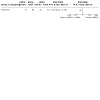
Comparison 11: UDCA + SAMe versus UDCA, Outcome 9: Postpartum haemorrhage
Comparison 12. UDCA + Salvia versus UDCA.
| Outcome or subgroup title | No. of studies | No. of participants | Statistical method | Effect size |
|---|---|---|---|---|
| 12.1 Reduction in pruritus from moderate/severe to mild (0‐4 scale) | 1 | Risk Ratio (M‐H, Fixed, 95% CI) | Totals not selected | |
| 12.2 Reduction in ALT (IU/L) after treatment | 1 | Mean Difference (IV, Fixed, 95% CI) | Totals not selected | |
| 12.3 Meconium‐stained liquor | 1 | Risk Ratio (M‐H, Fixed, 95% CI) | Totals not selected | |
| 12.4 Fetal distress | 1 | Risk Ratio (M‐H, Random, 95% CI) | Totals not selected |
Comparison 13. YCHD versus SAMe.
| Outcome or subgroup title | No. of studies | No. of participants | Statistical method | Effect size |
|---|---|---|---|---|
| 13.1 Degree of pruritus after treatment | 1 | Risk Ratio (M‐H, Fixed, 95% CI) | Totals not selected | |
| 13.1.1 Marked improvement | 1 | Risk Ratio (M‐H, Fixed, 95% CI) | Totals not selected | |
| 13.2 Stillbirths/neonatal deaths | 1 | Risk Ratio (M‐H, Fixed, 95% CI) | Totals not selected | |
| 13.3 Fetal distress/asphyxial event | 1 | Risk Ratio (M‐H, Fixed, 95% CI) | Totals not selected | |
| 13.4 Bile salt (CGA) concentration | 1 | Mean Difference (IV, Fixed, 95% CI) | Totals not selected | |
| 13.5 ALT | 1 | Mean Difference (IV, Fixed, 95% CI) | Totals not selected | |
| 13.6 Caesarean section | 1 | Risk Ratio (M‐H, Fixed, 95% CI) | Totals not selected | |
| 13.7 Meconium‐stained liquor | 1 | Risk Ratio (M‐H, Fixed, 95% CI) | Totals not selected | |
| 13.8 Mean gestational age at birth | 1 | Mean Difference (IV, Fixed, 95% CI) | Totals not selected |
13.2. Analysis.
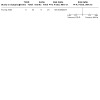
Comparison 13: YCHD versus SAMe, Outcome 2: Stillbirths/neonatal deaths
Comparison 14. Danxioling versus Yiganling.
| Outcome or subgroup title | No. of studies | No. of participants | Statistical method | Effect size |
|---|---|---|---|---|
| 14.1 Pruritus | 1 | Risk Ratio (M‐H, Fixed, 95% CI) | Totals not selected | |
| 14.1.1 Any improvement after treatment | 1 | Risk Ratio (M‐H, Fixed, 95% CI) | Totals not selected | |
| 14.1.2 Marked improvement after treatment | 1 | Risk Ratio (M‐H, Fixed, 95% CI) | Totals not selected | |
| 14.2 Stillbirths/neonatal deaths | 1 | Risk Ratio (M‐H, Fixed, 95% CI) | Totals not selected | |
| 14.3 Bile acid concentration (CGA) | 1 | Mean Difference (IV, Fixed, 95% CI) | Totals not selected | |
| 14.4 ALT | 1 | Mean Difference (IV, Fixed, 95% CI) | Totals not selected | |
| 14.5 Caesarean section | 1 | Risk Ratio (M‐H, Fixed, 95% CI) | Totals not selected | |
| 14.6 Meconium‐stained liquor | 1 | Risk Ratio (M‐H, Fixed, 95% CI) | Totals not selected | |
| 14.7 Spontaneous birth at less than 37 weeks | 1 | Risk Ratio (M‐H, Fixed, 95% CI) | Totals not selected |
Characteristics of studies
Characteristics of included studies [ordered by study ID]
Binder 2006.
| Study characteristics | ||
| Methods | Randomised controlled trial | |
| Participants | 78 women randomised. Setting: Prague, Czech Republic Inclusion criteria: women with singleton pregnancies at < 36 weeks' gestation with generalised itching starting in the second half of pregnancy, serum liver enzymes > 1 μkatl/L and bile acid concentrations > 6 μmol/L Exclusion criteria: hepatitis A, B, C, acute CMV, herpes virus infection, gallbladder stones |
|
| Interventions |
SAMe (n = 25) 2 x 500 mg/day given by slow infusion for 14 days and subsequently 2 x 500 mg/day orally until birth (median treatment duration 3 weeks, range 1 to 10) UDCA (n = 26) 3 x 250 mg/day orally until birth (median treatment duration 4 weeks, range 2 to 8) SAMe+UDCA (n = 27) Dosages as above (median treatment duration 3 weeks, range 1 to 12) All the participants were admitted to prenatal intensive care unit, but were discharged and followed up in the outpatient clinic in cases of remarkable clinical and biochemical improvement A 10‐point score was used by the participants to determine itching, where score 1 indicated isolated episodes of pruritus and score 10 indicated a continuous pruritus with impairment of the sleeping rhythm, and described the impact of the mode of treatment on the severity of itching as 'deterioration', 'not affected', 'mild improvement' and 'marked improvement'. Blood samples were collected for LFTs and bile acids on alternate days in the most severe cases and weekly during remission The fetus was monitored by CTG and ultrasound scans. Amnioscopy was performed when possible. Corticosteroids were not given for fetal lung maturity Pregnancy was terminated if the symptoms endangered the fetus and no later than 1 week if the disease progressed despite intervention. In the case of marked clinical and biochemical improvement, women were allowed to progress to term |
|
| Outcomes |
Maternal: status of pruritus; biochemical parameters; adverse effects Fetal/neonatal: perinatal outcomes; adverse effects |
|
| Notes | Medications that could affect pruritus, transaminases and bile acid concentrations were not used Dates of study: January 1999 and March 2004 Funding sources: IGA MZ CR (No. NH/7376‐3) Declarations of interest: not reported |
|
| Risk of bias | ||
| Bias | Authors' judgement | Support for judgement |
| Random sequence generation (selection bias) | Unclear risk | Quote: "Randomisation into three groups was carried out by means of sealed envelopes". No further description of randomisation |
| Allocation concealment (selection bias) | Unclear risk | Quote: "The women were divided to treatment group with the envelope method." No other details on whether envelopes were sequentially numbered, opaque or sealed |
| Blinding of participants and personnel (performance bias) All outcomes | High risk | The route and the duration of interventions were different in each of the 3 groups and therefore blinding would not have been possible |
| Blinding of outcome assessment (detection bias) All outcomes | Unclear risk | Not reported |
| Incomplete outcome data (attrition bias) All outcomes | Low risk | There were no losses to follow‐up |
| Selective reporting (reporting bias) | Unclear risk | Some outcomes were not reported in a way that could be used in this review (e.g. gestational age at birth not reported with SDs, preterm birth reported but not spontaneous preterm birth) |
| Other bias | Low risk | No other additional bias noted |
Chappell 2012.
| Study characteristics | ||
| Methods | Multicentre, double‐blinded, randomised, controlled, factorial design trial | |
| Participants | 125 women (111 for UDCA vs placebo comparison plus an additional 14 women in early vs expectant delivery and not in UDCA vs placebo comparison) Inclusion criteria: ICP (pruritus and increased maternal serum bile acid concentrations) or pruritus and raised serum ALT (> 100 IU/L) recruited after 24 weeks' gestation Setting: 9 maternity units in UK |
|
| Interventions |
Comparison A: 1. UDCA n = 56 (60 babies). Starting dose 500 mg twice daily increased in increments of 500 mg a day every 3 ‐ 14 days if there was no biochemical or clinical improvement up to a maximum of 2 g a day 2. placebo n = 55 (64 babies). Placebo capsules increased according to the same regimen Comparison B: 1. Early term delivery n = 30: induction or delivery begun between 37+0 weeks and 37+6 weeks 2. Expectant management n = 33: spontaneous labour awaited until 40 weeks or CS as indicated, usually after 39 weeks' gestation |
|
| Outcomes |
Primary outcomes: UDCA vs placebo comparison: maternal itching (average of the worst itch in previous 24 hours – 100 mm VAS ‐ between randomisation and delivery) Timing of delivery comparison: CS Secondary outcomes: Average itch in last 24 hours (VAS); total bile acids, ALT, APT, mode of onset of labour, mode of birth, indication for delivery, blood loss at birth; gestational age at birth, “baby outcome”, birthweight, presence of meconium‐stained amniotic fluid, arterial cord pH, venous cord pH, Apgar score at 5 minutes, congenital anomalies, admission to neonatal unit (and duration), need for ventilation (and duration), convulsions, jaundice, adherence; maternal adverse events |
|
| Notes | 48 of the 62 women in the delivery vs expectant management arm were also part of the UDCA vs placebo arm Dates of study: October 2008 to April 2010 Funding sources: National Institute for Health Research (NIHR) Declarations of interest: LCC is funded by a Department of Health‐NHS clinical senior lecturer award, VG was funded by Nottingham University Hospitals NHS Trust and NIHR research for patient benefit programme, PTS is funded by Tommy’s Charity, and CW is funded by the Biomedical Research Centre at Imperial College Healthcare NHS Trust; JC is the founder of Obstetric Cholestasis Support UK, a support group for women and families affected by obstetric cholestasis; no financial relationships with any organisations that might have an interest in the submitted work in the previous 3 years; and no other relationships or activities that could appear to have influenced the submitted work |
|
| Risk of bias | ||
| Bias | Authors' judgement | Support for judgement |
| Random sequence generation (selection bias) | Low risk | Computer‐generated |
| Allocation concealment (selection bias) | Low risk | Central allocation using a web‐based database |
| Blinding of participants and personnel (performance bias) All outcomes | Low risk | For the UDCA vs placebo comparison “investigator, pharmacists and participant were blind to group allocation” |
| Blinding of outcome assessment (detection bias) All outcomes | Unclear risk | Not reported |
| Incomplete outcome data (attrition bias) All outcomes | Low risk | No losses to follow‐up in either the drug or delivery comparisons, but 4 women in the UDCA group and 3 in the placebo group discontinued the intervention (3 wanted open‐label UDCA and 1 chose to discontinue after an adverse event in the UDCA group; 2 and 1 respectively in the placebo group) For the delivery vs expectant management comparison, none in the delivery group discontinued the intervention and 20 in the expectant management group discontinued (non‐exclusive ‐ 7 fetal/maternal compromise, 10 maternal request for delivery, 14 obstetrician decision for delivery) Post‐randomisation exclusion: None for UDCA vs placebo comparison; none for early vs expectant delivery comparison |
| Selective reporting (reporting bias) | Low risk | Trial registered. Most expected outcomes reported |
| Other bias | Low risk | The timed delivery comparison was not blinded to obstetrician, participant or outcome assessor, but this did not affect the blinding of the UDCA v placebo comparison |
Chappell 2019.
| Study characteristics | ||
| Methods | Multicentre randomised controlled trial | |
| Participants | 605 women recruited, data available for 604 women Setting: 30 consultant‐led maternity units in England and Wales Inclusion criteria: ICP (pruritus with a raised serum bile acid above the upper limit of normal for the local laboratory), 20+0 to 40+6 weeks’ gestation on day of randomisation (see note below on gestational age), no known lethal fetal anomaly, singleton or twin pregnancy, aged 18 years or over, able to give written informed consent Exclusion criteria: a decision already made for delivery within the next 48 hours, there is a known allergy to any component of the UDCA or placebo tablets, there is a triplet or higher‐order multiple pregnancy |
|
| Interventions |
Women randomised into 2 groups UDCA (n = 305) 500 mg twice a day from study enrolment until infant's birth Placebo (n = 300) |
|
| Outcomes | Composite of perinatal death, preterm delivery or neonatal unit admission for at least 4 hours | |
| Notes | Dates of study: 23 December 2015 and 07 August 2018 Funding sources: National Institute for Health Research Efficacy and Mechanism Evaluation Programme Declarations of interest:LCC, JLB, EJ, RH, and JD report grants from the National Institute for Health Research (NIHR), during the conduct of the study. JD also reports grants from NIHR and Nutrinia, outside the submitted work. JGT is a coauthor of the Cochrane Review of treatment for obstetric cholestasis and a coauthor of a previous trial of UDCA to treat ICP |
|
| Risk of bias | ||
| Bias | Authors' judgement | Support for judgement |
| Random sequence generation (selection bias) | Low risk | Quote: "probabilistic minimisation algorithm" |
| Allocation concealment (selection bias) | Low risk | Central allocation using a web‐based database |
| Blinding of participants and personnel (performance bias) All outcomes | Low risk | Quote: "Trial participants, clinical care providers, outcome assessors and data analysts were all masked to allocation" |
| Blinding of outcome assessment (detection bias) All outcomes | Low risk | Quote: "Trial participants, clinical care providers, outcome assessors and data analysts were all masked to allocation" |
| Incomplete outcome data (attrition bias) All outcomes | Low risk | 2 women withdrew |
| Selective reporting (reporting bias) | Low risk | Protocol published and trial prospectively registered, with no differences in outcome reporting in the completed trial |
| Other bias | Low risk | Adjusted analyses presented, but they differed little from unadjusted analyses |
Diaferia 1996.
| Study characteristics | ||
| Methods | Randomised controlled trial | |
| Participants | 16 women randomised Setting: Bari, Italy Inclusion criteria: women aged between 20 and 39 with ICP in the third trimester of pregnancy, where pruritus appeared after week 29 of pregnancy Exclusion criteria: hepatitis A, B, C, CMV and HSV; chronic liver disease; urinary tract infection; gestational diabetes; hypertension |
|
| Interventions |
UDCA (n = 8) 600 mg/day of UDCA in 2 oral doses for 20 days after week 30 of gestation Placebo (n = 8) Placebo (vitamin‐supradyn) in 2 oral doses for 20 days. Participants were admitted to the hospital during the study. No other drug was used to improve pruritus and LFTs The severity of pruritus was assessed before randomisation and repeated every 5 days using the following score: 0 = absence of pruritus; 1 = occasional pruritus; 2 = discontinuous pruritus every day, with prevailing asymptomatic lapses; 3 = discontinuous pruritus with prevailing symptomatic lapses; 4 = constant pruritus, day and night Blood samples were collected weekly for assays of liver function and bile acids Ultrasound examinations and CTGs were performed to assess the fetus |
|
| Outcomes |
Maternal: pruritus; liver function and bile acid assays; mode of birth; PPH; adverse effects Fetal/neonatal: fetal distress; gestation at birth; birthweight; Apgar score at 1 and 5 minutes; adverse effects |
|
| Notes | Dates of study: not stated Funding sources: not stated Declarations of interest: not stated |
|
| Risk of bias | ||
| Bias | Authors' judgement | Support for judgement |
| Random sequence generation (selection bias) | Unclear risk | Described only as "randomised" with no detail provided |
| Allocation concealment (selection bias) | Unclear risk | Described only as "randomised" |
| Blinding of participants and personnel (performance bias) All outcomes | Unclear risk | Described as "double‐blind, placebo‐controlled" ‐ the investigators and the participants were blinded to the treatment allocation. But the "placebo" was a vitamin preparation and not clear if this looked like the UDCA |
| Blinding of outcome assessment (detection bias) All outcomes | Unclear risk | Not reported |
| Incomplete outcome data (attrition bias) All outcomes | Unclear risk | Unregistered trial. No sample size justification. No losses to follow‐up were reported |
| Selective reporting (reporting bias) | Unclear risk | Unregistered trial. Perinatal death not reported |
| Other bias | Unclear risk | No other additional bias noted |
Fang 2009.
| Study characteristics | ||
| Methods | Quasi‐randomised controlled trial | |
| Participants | 128 women randomised Setting: First Affiliated Hospital of Xi’an Jiaotong University (Obstetrics Department) Inclusion criteria: women with singleton pregnancy presenting with antepartum itching and abnormal serum ALT and AST which resolved postpartum Exclusion criteria: antenatal problems such as vomiting, loss of appetite, lethargy or any medical problems, known liver disease or hepatitis prior to pregnancy |
|
| Interventions |
Salvia+UDCA (N = 72) Salvia injection IV (10 mL in 10% 500 mL dextrose) and UDCA 15 mg orally 3 times a day for 14 days UDCA (N = 56) UDCA 15 mg for orally 3 times a day 14 days |
|
| Outcomes |
Maternal: reduction in pruritus score; monitoring of CG, TB, ALT and AST concentrations Fetal/neonatal: CS for fetal distress; meconium‐stained liquor; Apgar score and birthweight |
|
| Notes | Article in Chinese. Dates of study: not stated Funding sources: not stated Declarations of interest: not stated |
|
| Risk of bias | ||
| Bias | Authors' judgement | Support for judgement |
| Random sequence generation (selection bias) | High risk | Quasi‐randomised controlled trial Quote: "A total of 128 patients were divided into two groups based on the date of admission into the First Affiliated Hospital of Xi'An Jiaotong University." |
| Allocation concealment (selection bias) | High risk | Quasi‐randomised controlled trial Quote: "A total of 128 patients were divided into two groups based on the date of admission into the First Affiliated Hospital of Xi'An Jiaotong University." |
| Blinding of participants and personnel (performance bias) All outcomes | High risk | The route of administration of the interventions being compared were different and therefore blinding would not have been possible |
| Blinding of outcome assessment (detection bias) All outcomes | Unclear risk | Not reported |
| Incomplete outcome data (attrition bias) All outcomes | High risk | Losses to follow‐up not reported |
| Selective reporting (reporting bias) | High risk | Results for outcomes described in the abstract and methods are reported, but stillbirth, neonatal death or preterm birth are not reported |
| Other bias | High risk | It is unclear why there are 72 women in the experimental group and 58 women in the control group. The study was unregistered |
Floreani 1996.
| Study characteristics | ||
| Methods | Randomised controlled trial | |
| Participants | 20 women randomised Setting: Padova, Italy Inclusion criteria: skin pruritus due to ICP during the last trimester of pregnancy, total serum bile acids > 2 μmol/L and ALT > 40 U/L Exclusion criteria: dermatological or other causes of pruritus; abnormalities unrelated to pregnancy (acute hepatitis A, hepatitis B and C were excluded) |
|
| Interventions |
UDCA (n = 10) 450 mg/day oral until birth SAMe (n = 10) 1000 mg/day IM until birth Participants were admitted to the obstetrics ward before 34 weeks' gestation for strict fetal monitoring. They were examined by the same hepatologist. The severity of pruritus was assessed before treatment and subsequently every 3 days using the following score: 0 = absence of pruritus; 1 = occasional pruritus; 2 = discontinuous pruritus every day, with prevailing relapses at night; 3 = permanent pruritus during day and night Fasting blood samples were obtained immediately before treatment, every 3 days until birth and then 5 days later All fetal monitoring and delivery decisions were made by the treating obstetrician |
|
| Outcomes |
Maternal: status of pruritus; assays of liver function and bile acids; mode of birth Fetal/neonatal: gestation at birth; birthweight; Apgar score at 5 minutes |
|
| Notes | Dates of study: not reported. Funding sources: partially supported by a Ministerial grant (MURST 60%) Declarations of interest: not reported |
|
| Risk of bias | ||
| Bias | Authors' judgement | Support for judgement |
| Random sequence generation (selection bias) | Unclear risk | Quote: "Randomly assigned" No further details given |
| Allocation concealment (selection bias) | Unclear risk | Quote: "randomised by closed envelope system" No other details on whether envelopes were sequentially numbered, opaque or sealed |
| Blinding of participants and personnel (performance bias) All outcomes | High risk | UDCA administered orally. SAMe given intramuscularly |
| Blinding of outcome assessment (detection bias) All outcomes | Unclear risk | No mention of blinding of outcome assessment. UDCA administered orally. SAMe given intramuscularly |
| Incomplete outcome data (attrition bias) All outcomes | High risk | No Consort flow diagram. No mention of losses to follow‐up |
| Selective reporting (reporting bias) | High risk | Liver function outcomes reported only as graphs. Numbers tested at each time point, and whether the reported value was mean, median or mode not reported, No measure of dispersion reported. The reported significance tests attached to the graphs do not tally with the graphs themselves. The abstract implies that the statistical significance tests were used to compare before‐and‐after serum concentrations rather than serum concentrations between the 2 treatment groups. if so this was inappropriate |
| Other bias | High risk | The trial was not registered. Quote: "Results analysed by Students t‐test for paired and unpaired data as appropriate". There were no paired data in the trial. Students t‐test would have been an inappropriate test for comparing itching score, which was recorded on a 4‐point scale |
Frezza 1984.
| Study characteristics | ||
| Methods | Randomised controlled trial | |
| Participants | 18 women randomised Setting: Milan, Italy Inclusion criteria: women between 28 and 32 weeks of pregnancy with history of gestational pruritus starting after 19th week of gestation and increased serum bile acid, bilirubin and transaminase concentrations. Normalisation of biochemical parameters and resolution of itching after birth Exclusion criteria: acute hepatitis A, hepatitis B, dermatological diseases |
|
| Interventions |
SAMe (n = 6) Daily IV dose of 200 mg of SAMe (as disulphate‐p‐toluene sulfonate stable salt) dissolved in 500 mL of saline solution over 4 hours beginning at 8 am for 20 days SAMe (n = 6) Daily IV dose of 800 mg of SAMe (as disulphate‐p‐toluene sulfonate stable salt) dissolved in 500 mL of saline solution over 4 hours beginning at 8 am for 20 days Placebo (n = 6) Daily IV dose of 500 mL of saline solution over 4 hours beginning at 8 am for 20 days Pruritus was assessed before randomisation and again at 10 and 20 days after treatment. It was graded as: 0, no pruritus; Grade 1+, rare; Grade 2+, occasional; Grade 3+, frequent; Grade 4+, almost continuous Fasting samples were obtained for serum ALT, AST, ALP, bilirubin and total bile acid concentrations before randomisation and at 10‐day intervals |
|
| Outcomes |
Maternal: status of pruritus; assays of liver function and bile acids, maternal adverse events Fetal/neonatal: Apgar scores |
|
| Notes | Dates of study: 1979 ‐ 1982 Funding sources: not stated Declarations of interest: not stated |
|
| Risk of bias | ||
| Bias | Authors' judgement | Support for judgement |
| Random sequence generation (selection bias) | Unclear risk | Randomly allocated to 3 groups of 6. No detail provided on method |
| Allocation concealment (selection bias) | Unclear risk | Quote: "Women were randomly allocated to three groups of six". No other details provided. |
| Blinding of participants and personnel (performance bias) All outcomes | High risk | Single‐blinded. Participants were blinded. The medical staff were not blinded |
| Blinding of outcome assessment (detection bias) All outcomes | Unclear risk | Not reported |
| Incomplete outcome data (attrition bias) All outcomes | Low risk | No Consort flow diagram was provided. There were no losses to follow‐up |
| Selective reporting (reporting bias) | High risk | The study was unregistered. The only fetal outcome reported was "Apgar scores at 5 minutes varied between 7 and 10". Mean length of gestation, preterm birth rates, mode of birth and blood loss at birth were not reported. Some outcomes were only presented as graphs |
| Other bias | High risk | Statistical significance tests were all done comparing later values with baseline values. This is inappropriate. No comparisons between the 3 groups were reported |
Frezza 1990.
| Study characteristics | ||
| Methods | Randomised placebo‐controlled trial using a pre‐established code, single‐blinded | |
| Participants | 30 women randomised Setting: Milan, Italy Inclusion criteria: pruritus, with or without jaundice, and increased serum concentrations of bile acids, bilirubin, ALT and AST during the last trimester of pregnancy Exclusion criteria: acute hepatitis A, hepatitis B, dermatological conditions |
|
| Interventions |
SAMe (n = 15) Daily IV dose of 800 mg of SAMe diluted in 500 mL of 5% dextrose. Half of the dosage was infused in the morning, and half in the afternoon. It was administered up to the day of birth and was withdrawn 12 hours after birth Placebo (n = 15) Daily IV dose of 500 mL of 5% dextrose. Half of the dosage was infused in the morning, and half in the afternoon. It was administered up to the day of birth and was withdrawn 12 hours after birth Pruritus was scored on a 10 cm analogue scale every 3 days up to 24 hours after birth LFTs were measured before randomisation and 24 hours after birth |
|
| Outcomes |
Maternal: status of pruritus; assays of liver function and bile acid; adverse effects Fetal/neonatal: preterm birth at < 37 weeks; birthweight < 2500 g |
|
| Notes | Dates of study: not stated Funding sources: not stated Declarations of interest: not stated |
|
| Risk of bias | ||
| Bias | Authors' judgement | Support for judgement |
| Random sequence generation (selection bias) | Unclear risk | Quote: "According to pre‐established code, consecutive patients were randomised to receive either SAMe or placebo". It is unclear how this code was generated |
| Allocation concealment (selection bias) | Unclear risk | Not described |
| Blinding of participants and personnel (performance bias) All outcomes | High risk | Single‐blind. Participants were blinded. The medical staff were not blinded |
| Blinding of outcome assessment (detection bias) All outcomes | Unclear risk | Not reported |
| Incomplete outcome data (attrition bias) All outcomes | Unclear risk | There were no losses to follow‐up |
| Selective reporting (reporting bias) | High risk | The trial was unregistered. Fetal mortality (stillbirth and neonatal deaths), mean length of gestation, mode of birth and blood loss at birth were not reported. Some outcomes were only presented as graphs |
| Other bias | Unclear risk | No other bias apparent |
Glantz 2005.
| Study characteristics | ||
| Methods | Randomised controlled trial | |
| Participants | 130 women randomised Setting: 106 antenatal clinics and all 6 departments of obstetrics in the Västra Götaland region, Sweden Inclusion criteria: women at < 37 weeks' gestation with gestational pruritus and fasting serum bile acid concentrations > 10 μmol/L Exclusion criteria: diabetes, pre‐eclampsia, intrauterine growth restriction, liver disease (including viral hepatitis), history of manic disorders, bleeding peptic ulcer |
|
| Interventions |
UDCA (n = 47) 1 g/day as a single oral dose, for 3 weeks Dexamethasone (n = 36) 12 mg/day as a single oral dose for 1 week, and placebo during weeks 2 and 3 Placebo (n = 47) Given daily as a single oral dose for 3 weeks A 100 mm‐long VAS was used to score itching: no pruritus at all at 0 mm; worst possible pruritus at 100 mm Blood samples were collected at entry for bile acids, ALT and bilirubin. They were repeated after 2 ‐ 3 days, after 4 ‐ 5 days and after 1, 2 and 3 weeks of treatment. If the pregnancy continued after 3 weeks of treatment, the above biochemical parameters were measured weekly until birth. CTG monitoring was done each time the samples were taken |
|
| Outcomes |
Primary outcomes: spontaneous preterm birth (< 37 weeks) in singleton pregnancies, asphyxial events (operative delivery due to asphyxia, postpartum pH < 7.05 in umbilical arterial blood or Apgar score < 7 at 5 minutes), and meconium staining of amniotic fluid, placenta, and membranes Secondary outcomes: changes in biochemical markers (serum bile acids, ALT and bilirubin), status of pruritus, total prematurity rate, total elective birth rate, maternal blood loss during vaginal birth |
|
| Notes | Severe obstetric cholestasis was defined as serum bile acids ≥ 40 µmol/L. Subgroup analysis was done for this group Funding: FoU, Västra Götaland. Dates of study: February 1999 ‐ January 2002 Declarations of interest: Dr Falk Pharma, manufacturers of UDCA supplied UDCA and placebos |
|
| Risk of bias | ||
| Bias | Authors' judgement | Support for judgement |
| Random sequence generation (selection bias) | High risk | Study drugs were randomised in blocks of 6 (2 each of UDCA, dexamethasone and placebo). Method of sequence generation not described |
| Allocation concealment (selection bias) | High risk | The hospital pharmacy was responsible for randomisation. Study drugs were provided in tins with a study code, each containing 6 treatments: 2 each of UDCA, dexamethasone, and placebo. Staff at the site were instructed to hand out the treatments consecutively, starting with the lowest study code number No explanation is given for the lower numbers randomised in the dexamethasone group (n = 36) compared with the other 2 groups (n = 47), despite the randomisation being balanced to within 2 participants in each centre. Since there were 6 centres the difference in group sizes of 11 is mathematically possible, but in the absence of a flow diagram raises the possibility of post‐randomisation losses |
| Blinding of participants and personnel (performance bias) All outcomes | Low risk | Dr Falk Pharma supplied identical‐looking UDCA, placebo and empty capsules. The empty capsules were filled with dexamethasone at the hospital pharmacy |
| Blinding of outcome assessment (detection bias) All outcomes | Unclear risk | Not reported |
| Incomplete outcome data (attrition bias) All outcomes | Unclear risk | No losses to follow‐up reported 80/130 women completed the full 3‐week treatment period (31 in the UDCA group, 19 in the dexamethasone group and 30 in the placebo group). 3 women, 1 from each group, discontinued due to side effects. 1 woman in each group did not take the medication after being randomised due to fear of side effects. The remaining 44 women discontinued their treatment because of spontaneous or planned birth. There were some multiple pregnancies because analysis of preterm delivery was reported after exclusion of multiple pregnancy and iatrogenic delivery, but the numbers of both were not reported separately |
| Selective reporting (reporting bias) | Unclear risk | The trial was unregistered. Pruritus and liver function were reported only graphically as medians (with some P values reported) |
| Other bias | High risk | The trial was unregistered. The planned sample size reported in the paper was 240 (80 per group). No explanation was given for stopping after 130 participants had been recruited |
Huang 2004.
| Study characteristics | ||
| Methods | Randomised controlled trial | |
| Participants | 60 women randomised Inclusion criteria: primigravida, singleton pregnancy, pruritus in the second half of pregnancy, raised serum CG (> 10 UNL) and serum ALT Exclusion criteria: PIH; gestational diabetes; anaemia; other liver (hepatitis A, B, C, D) and gallbladder diseases |
|
| Interventions |
YCHD (n = 35) Orally twice a day for 3 weeks SAMe (n = 25) IV infusion of 2 x 500 mg daily for 3 weeks Pruritus, serum bile acids and LFTs were assessed after 3 weeks of treatment |
|
| Outcomes |
Maternal: improvement in pruritus; serum CG; serum ALT; serum bilirubin; length of gestation; delivery by CS Fetal/neonatal: mortality; Apgar score < 7; meconium‐stained liquor; preterm birth at < 37 weeks; birthweight; asphyxial events; umbilical cord artery pH, PO2, PCO2 |
|
| Notes | Full article in Chinese, abstract published in English Dates of study: July to October 2002 Funding sources: Declarations of interest: |
|
| Risk of bias | ||
| Bias | Authors' judgement | Support for judgement |
| Random sequence generation (selection bias) | Low risk | Random‐number table |
| Allocation concealment (selection bias) | Unclear risk | Not stated |
| Blinding of participants and personnel (performance bias) All outcomes | High risk | Not mentioned. Unlikely to be blinded because these 2 drugs have different modes of administration |
| Blinding of outcome assessment (detection bias) All outcomes | Unclear risk | Not reported |
| Incomplete outcome data (attrition bias) All outcomes | Low risk | No losses to follow‐up |
| Selective reporting (reporting bias) | Low risk | All the prespecified outcomes reported |
| Other bias | High risk | Imbalance in numbers randomised to each group (35 vs 25) which may indicate a failure of proper randomisation |
Joutsiniemi 2014.
| Study characteristics | ||
| Methods | Single‐centre randomised controlled trial | |
| Participants | 20 women recruited, among them 2 cases eliminated, data available for 18 women Setting: teaching hospital in Finland Inclusion criteria: all participants complained of recent‐onset generalised pruritus. Other causes of itching were excluded Exclusion criteria: evidence of viral hepatitis |
|
| Interventions |
Women randomised into 2 groups UDCA (n = 10) 450 mg/day for 14 days Placebo (n = 10) Placebo tablets for 14 days |
|
| Outcomes | Serum concentrations of ALT, total bile acids, estradiol, progesterone, prolactin, cholesterol, HDL‐cholesterol, triglycerides, platelet count, APTT and fibrinogen D‐dimers (FIDD) The severity of pruritus was assessed using a VAS |
|
| Notes | Dates of study: 2‐year period, dates not given. The paper, submitted in December 2012, states a 2‐year recruitment period, dates not specified. The trial was registered in April 2012 and the register states that it started January 1998 and completed December 1998, i.e. a 1‐year recruitment period Funding sources: not stated Declarations of interest: none |
|
| Risk of bias | ||
| Bias | Authors' judgement | Support for judgement |
| Random sequence generation (selection bias) | Unclear risk | The method of sequence generation was not reported |
| Allocation concealment (selection bias) | Unclear risk | Quote: "Patients were randomised in a double blind fashion." It is not clear how exactly 10 participants per group was achieved |
| Blinding of participants and personnel (performance bias) All outcomes | Unclear risk | Placebo "tablets were prepared by the hospital pharmacy" |
| Blinding of outcome assessment (detection bias) All outcomes | Unclear risk | Not reported |
| Incomplete outcome data (attrition bias) All outcomes | Unclear risk | No trial flow diagram is given. The baseline Table 1 reports all 10 participants in the treatment group but only 8 in the placebo group. 1 participant was excluded from the treatment group post‐randomisation because she delivered within 14 days. It is not clear whether clinical data were reported for that participant. In the control group 2 participants were excluded post‐randomisation because "the mother had received dexamethasone". 5 further participants in the control group were excluded because they delivered within 14 days. Again it is not clear whether clinical data were reported for some or all of these excluded participants |
| Selective reporting (reporting bias) | High risk | The trial was registered after trial completion. There was no published protocol |
| Other bias | High risk | No justification given for the sample size of 20. Inconsistent reporting of the recruitment duration |
Kaaja 1994.
| Study characteristics | ||
| Methods | Randomised controlled trial | |
| Participants | 19 women randomised (1 woman entered trial in 2 successive pregnancies) Setting: Helsinki, Finland Inclusion criteria: women with pruritus and abnormalities of liver function Exclusion criteria: hepatitis A and B, gallbladder pathology |
|
| Interventions |
Activated charcoal (n = 10) Activated charcoal as a water suspension, 50 g 3 times a day for 8 days No treatment (n = 10) Normal follow‐up of ICP with no charcoal administration Participants maintained a daily record of pruritus: 0 = no itching; 1 = mild itching; 2 = moderate itching, does not disturb sleep; 3 = intense itching, disturbs sleep; 4 = very intense (intolerable) itching, forces participant to scratch continuously Fasting blood samples were collected for serum total bile acids and LFTs at the start of the study and were repeated on days 4 and 8 |
|
| Outcomes |
Maternal: status of pruritus; assays of liver function and serum bile acids Fetal/neonatal: gestation at delivery, birthweight |
|
| Notes | Dates of study: not stated Funding sources: not stated Declarations of interest: not stated |
|
| Risk of bias | ||
| Bias | Authors' judgement | Support for judgement |
| Random sequence generation (selection bias) | Unclear risk | Not described |
| Allocation concealment (selection bias) | Unclear risk | Not described |
| Blinding of participants and personnel (performance bias) All outcomes | High risk | Open trial |
| Blinding of outcome assessment (detection bias) All outcomes | Unclear risk | Not reported |
| Incomplete outcome data (attrition bias) All outcomes | Low risk | No losses to follow‐up reported |
| Selective reporting (reporting bias) | High risk | Few fetal/neonatal outcomes not reported |
| Other bias | Low risk | No other additional bias noted |
Kondrackiene 2005.
| Study characteristics | ||
| Methods | Randomised controlled trial | |
| Participants | 84 women randomised Setting: Lithuania Inclusion criteria: women at 25 ‐ 39 weeks of gestation with pruritus starting in the second or third trimester of pregnancy and elevation of at least 1 of the following serum biochemical markers: ALT > 45 U/L, AST > 40 U/L, fasting serum bile acids > 10 μmol/L Exclusion criteria: chronic liver disease; viral infections (Hep A, B, C, CMV, HSV, EBV); skin disease; allergies; symptomatic cholelithiasis |
|
| Interventions |
UDCA (n = 42) 8 ‐ 10 mg/kg body weight orally daily for 14 days Cholestyramine (n = 42) 8 g orally daily for 14 days Daily self‐assessment of pruritus by the participants using the following score: 0 = no pruritus; 1 = occasional; 2 = intermittent pruritus everyday with asymptomatic periods prevailing; 3 = intermittent pruritus everyday with symptomatic periods prevailing; 4 = constant pruritus day and night Fasting blood samples were collected at entry and on the day after the completion of treatment for the analysis of LFTs and serum bile acid assay. Delivery decisions were made by managing obstetricians independent of the study |
|
| Outcomes |
Primary end point: reduction in the severity of pruritus by more than 50% after 14 days of treatment Secondary end points: reduction of ALT and serum bile acid concentrations; mode of birth; drug safety, gestation at birth, Apgar score at 1 and 5 minutes, birthweight |
|
| Notes | Cholestyramine may cause PPH in mother and intracranial haemorrhage in fetus due to the malabsorption of vitamin K. These outcomes were not analysed Dates of study: October 1999 to September 2002 Funding sources: not reported Declarations of interest: not reported |
|
| Risk of bias | ||
| Bias | Authors' judgement | Support for judgement |
| Random sequence generation (selection bias) | Unclear risk | Randomised using sealed envelopes. No other details provided |
| Allocation concealment (selection bias) | Unclear risk | Not described |
| Blinding of participants and personnel (performance bias) All outcomes | High risk | Open trial |
| Blinding of outcome assessment (detection bias) All outcomes | Unclear risk | Not reported |
| Incomplete outcome data (attrition bias) All outcomes | Low risk | All 84 women were included in analyses although 10/42 women in the UDCA group and 4/42 in the cholestyramine group either did not complete the study or had protocol violations. In the UDCA group, 4 women discontinued treatment and 6 women had protocol violations (apparently 6 women took UDCA before inclusion in the trial). In the cholestyramine group, 3 women experienced adverse events (nausea and vomiting) and 1 woman discontinued treatment |
| Selective reporting (reporting bias) | Unclear risk | Trial was unregistered and no published protocol |
| Other bias | Low risk | No other additional bias noted |
Leino 1998.
| Study characteristics | ||
| Methods | Randomised controlled trial | |
| Participants | 18 women with ICP were included in analyses: 10 in the UDCA group and 8 in the placebo group | |
| Interventions | 450 mg of UDCA in 2 doses for 14 days vs placebo | |
| Outcomes | Daily assessment of pruritus, diverse reactions, itching. The following were assessed at before treatment and at 7 days: fasting serum total bile salts, ALT, ALP, estradiol, progesterone, prolactin, cholesterol, triglycerides, APTT and thrombocytes | |
| Notes | Conference abstract. Very limited information. Dates of study: not stated Funding sources: not stated Declarations of interest: not stated |
|
| Risk of bias | ||
| Bias | Authors' judgement | Support for judgement |
| Random sequence generation (selection bias) | Unclear risk | Very limited information |
| Allocation concealment (selection bias) | Unclear risk | Very limited information |
| Blinding of participants and personnel (performance bias) All outcomes | Unclear risk | Reported as double‐blind but no further information |
| Blinding of outcome assessment (detection bias) All outcomes | Unclear risk | Not reported |
| Incomplete outcome data (attrition bias) All outcomes | Unclear risk | Very limited information |
| Selective reporting (reporting bias) | Unclear risk | Very limited information. Serum ALP was assessed but not reported |
| Other bias | Unclear risk | Conference abstract. Very limited information |
Liu 2006.
| Study characteristics | ||
| Methods | Randomised controlled trial | |
| Participants | 68 women randomised Setting: Wuhan, China Inclusion criteria: women at 25 ‐ 37 weeks' gestation with severe gestational pruritus; serum total bile acids > 10 μmol/L and raised serum ALT or conjugated bilirubin Exclusion criteria: other known causes of liver dysfunction |
|
| Interventions |
UDCA (n = 34) 300 mg (18 mg/kg body weight) 3 times a day for 2 weeks Placebo (n = 34) Combination of 10% glucose, vitamin C and inosine for 2 weeks. They were kept on a low‐fat diet and bed rest during the period of the study |
|
| Outcomes |
Maternal: pruritus score, mode of birth, adverse effects, LFTs, total serum bile acids. Pruritus score was self‐assessed every 3 days on a VAS: 0 = no pruritus; 1 = occasional; 2 = intermittent pruritus everyday with asymptomatic periods prevailing; 3 = intermittent pruritus everyday with preponderance of symptomatic periods; 4 = constant pruritus However results were only reported as a number ± another number. Because it is not clear if these were means or medians, and if the ± was SD, SE or other measure of dispersion, these results are not analysable Fetal/neonatal: antepartum testing prompting delivery; gestation at birth; passage of meconium; intrapartum fetal distress; Apgar scores at 1 and 5 minutes; birthweight, adverse events |
|
| Notes | Fetal asphyxia was not defined. Dates of study: June 2001 ‐ July 2003 Funding sources: not stated Declarations of interest: not stated |
|
| Risk of bias | ||
| Bias | Authors' judgement | Support for judgement |
| Random sequence generation (selection bias) | Unclear risk | Participants were "divided into treatment group and control group at random". No further details |
| Allocation concealment (selection bias) | Unclear risk | Not described |
| Blinding of participants and personnel (performance bias) All outcomes | Unclear risk | It is unclear whether the clinicians/investigators and the participants were blinded to trial allocation. The "placebo" was a vitamin tablet and it is not clear whether or not this was identical to the UDCA tablets |
| Blinding of outcome assessment (detection bias) All outcomes | Unclear risk | Not reported |
| Incomplete outcome data (attrition bias) All outcomes | High risk | There was no trial flow diagram. The trial was not registered. Follow‐up rates were not reported |
| Selective reporting (reporting bias) | High risk | Stillbirths and neonatal deaths were not reported Apgar scores and adverse events were recorded, but not reported |
| Other bias | Unclear risk | No other additional bias noted |
Luo 2008.
| Study characteristics | ||
| Methods | Randomised controlled trial | |
| Participants | 64 women randomised Setting: Affiliated Hospital of Hangzhou Normal University, Hangzhou, China Inclusion criteria: neonatal jaundice and/or maternal? itching, rise in the concentrations of serum transaminase and CG Exclusion criteria: any skin infection, prolonged liver disease, any other illnesses, high blood pressure, received other forms of treatment for ICP |
|
| Interventions |
Transmetil + UDCA (n = 34) Transmetil (1 g + 5% glucose 250 mL IV once a day) + UDCA (250 mg oral pill twice a day) for 10 days UDCA (n = 30) UDCA 250 mg twice a day for 10 days. Participants took dexamethasone (10 mg once a day) for 3 days before the treatment in both groups |
|
| Outcomes |
Maternal: scale of itchiness (0 ‐ 4 Ribalta scale); serum concentrations of ALT, AST, total bile acids, amount of haemoglobin, CS rate Fetal/neonatal: preterm birth, clearness of amniotic fluid (i.e. number of cases where the fluid was not clear), Apgar score, birthweight |
|
| Notes | Dates of study: June 2002 to July 2007 Funding sources: unclear Declarations of interest: not stated |
|
| Risk of bias | ||
| Bias | Authors' judgement | Support for judgement |
| Random sequence generation (selection bias) | Unclear risk | Quote: "randomly assigned" No further details reported |
| Allocation concealment (selection bias) | Unclear risk | Quote: "randomly assigned" No further details reported |
| Blinding of participants and personnel (performance bias) All outcomes | High risk | The route of administration of interventions in the 2 groups was different and therefore blinding would not have been possible |
| Blinding of outcome assessment (detection bias) All outcomes | Unclear risk | Not reported |
| Incomplete outcome data (attrition bias) All outcomes | Low risk | No losses to follow‐up or withdrawal in either group |
| Selective reporting (reporting bias) | Unclear risk | Not all expected outcomes reported |
| Other bias | Low risk | According to the translation, “Their traits and characteristics were not significantly different from each other" |
Nicastri 1998.
| Study characteristics | ||
| Methods | Randomised controlled trial | |
| Participants | 32 women randomised Setting: Bari, Italy Inclusion criteria: participants included women aged 19 ‐ 37 years, between 30 ‐ 37 weeks' gestation with history of pruritus after 28 weeks |
|
| Interventions |
UDCA (n = 8) UDCA in 2 oral doses daily (600 mg/day) for 20 days SAMe (n = 8) SAMe in the stable form of sulphate‐P‐toluene sulphonate diluted in 500 mL 5% dextrose and divided into 2 IV infusions (800 mg/day) UDCA+SAMe (n = 8) Combination of UDCA and SAMe in the doses specified above Placebo (vitamin) (n = 8) LFTs and serum total bile acid concentrations were measured before and at the end of treatment Pruritus was measured every 3 days up to 24 hours after delivery. Pruritus was scored as: 0 = absent pruritus; 1 = occasional pruritus; 2 = intermittent pruritus everyday with asymptomatic periods prevailing; 3 = intermittent pruritus everyday, with symptomatic periods prevailing; 4 = constant pruritus |
|
| Outcomes |
Maternal: status of pruritus; assays of liver function and bile acids, side effects of the treatment Fetal/neonatal: preterm birth; low birthweight; side effects of the treatment |
|
| Notes | Dates of study: March 1995 ‐ July 1996 Funding sources: not reported Declarations of interest: not reported |
|
| Risk of bias | ||
| Bias | Authors' judgement | Support for judgement |
| Random sequence generation (selection bias) | Low risk | Random permuted blocks |
| Allocation concealment (selection bias) | Unclear risk | Not described |
| Blinding of participants and personnel (performance bias) All outcomes | High risk | It is apparent from the study that blinding was not possible because the route of delivery of the interventions was different |
| Blinding of outcome assessment (detection bias) All outcomes | Unclear risk | Not reported |
| Incomplete outcome data (attrition bias) All outcomes | Low risk | There were no losses to follow‐up reported |
| Selective reporting (reporting bias) | High risk | Stillbirths and perinatal deaths, mean length of gestation, mode of birth and blood loss at birth were not reported |
| Other bias | Low risk | No other additional bias noted |
Palma 1997.
| Study characteristics | ||
| Methods | Randomised controlled trial | |
| Participants | 24 women randomised Setting: Santiago, Chile Inclusion criteria: severe gestational pruritus appearing at < 33 weeks' gestation and present daily for at least 2 weeks; fasting total serum bile salts > 12 μmol/L and serum ALT or AST > 40 IU/L Exclusion criteria: chronic liver disorder; symptomatic cholelithiasis; metabolic diseases; dermatological or neuropsychiatric causes of pruritus; infections requiring antibiotics |
|
| Interventions |
UDCA (n = 8) 1000 mg/day as 3 oral doses until birth Placebo (starch) (n = 7) Orally, until birth Participants were admitted to the hospital. Pruritus was assessed weekly by the same clinician using the following score: 0 = absence of pruritus; 1 = occasional pruritus; 2 = discontinuous pruritus everyday, prevailing asymptomatic lapses; 3 = discontinuous pruritus but prevailing asymptomatic lapses everyday; 4 = constant itching, day and night Blood samples were collected for LFT and total bile salt concentrations. They had to be taking treatment for at least 3 weeks |
|
| Outcomes |
Primary outcome: status of pruritus Secondary outcomes: serum liver function and bile acid assays; mode of birth; PPH; fetal/neonatal deaths, fetal distress; gestation at birth; birthweight; adverse effects |
|
| Notes | Dates of study: July 1993 ‐ June 1995 Funding sources: FONDECYT, Chile, Grants no. 191‐1107 and 194‐0420 Declarations of interest: not reported |
|
| Risk of bias | ||
| Bias | Authors' judgement | Support for judgement |
| Random sequence generation (selection bias) | High risk | Used alternation according to hospital admission in order to generate a random sequence |
| Allocation concealment (selection bias) | Unclear risk | UDCA and placebo capsules were provided by Dr Falk Pharma in coded boxes |
| Blinding of participants and personnel (performance bias) All outcomes | Low risk | Identical UDCA and placebo capsules |
| Blinding of outcome assessment (detection bias) All outcomes | Unclear risk | Not reported |
| Incomplete outcome data (attrition bias) All outcomes | High risk | 9/24 women did not complete the trial and were excluded from analysis. 8 women did not complete 2 weeks of treatment (6 had spontaneous preterm vaginal births and another 2 women had CS due to signs of fetal distress). The 9th woman left hospital after 1 week of treatment |
| Selective reporting (reporting bias) | High risk | Insufficient detail. Trial not registered. Protocol not published |
| Other bias | High risk | The sample size was data‐driven. The planned sample size was 20 participants completing 3 weeks treatment. After 24 participants had been recruited and 15 had either completed 3 weeks treatment or were ongoing with treatment, a stillbirth occurred. Although it occurred in the placebo group and was judged to have been caused by a wrongly delayed caesarean birth in the presence of fetal distress, the study was stopped early |
Ribalta 1991.
| Study characteristics | ||
| Methods | Randomised controlled trial | |
| Participants | 20 women randomised Setting: Santiago, Chile Inclusion criteria: women with ICP, age 21 ‐ 38 years with pruritus appearing before week 32 of gestation. Participants had increased concentrations of liver function markers Exclusion criteria: liver and dermatological diseases, acute cholecystitis, urinary tract infection, diabetes, other chronic diseases |
|
| Interventions |
SAMe (n = 9) 800 mg/day IV administered daily over 3 hours for 20 days Placebo (n = 9) Mannitol IV administered daily over 3 hours for 20 days Participants were admitted to the obstetrics ward before 34 weeks' gestation and were kept as inpatients until 3 ‐ 5 days post‐delivery. They were given a low‐fat diet. No other medications were prescribed to improve pruritus The severity of pruritus was assessed before treatment and subsequently every 5 days using the following score: 0 = absence of pruritus; 1 = occasional pruritus; 2 = discontinuous pruritus every day, with prevailing relapses at night; 3 = permanent pruritus during day and night. They were assessed by the same observer Fasting blood samples were obtained immediately before treatment, every 5 days until delivery and then 1 ‐ 3 days, 1 month and 3 months after delivery |
|
| Outcomes |
Maternal: status of pruritus; assays of liver function and serum bile acids; mode of birth; adverse reactions Fetal/neonatal: gestation at birth; birthweight; Apgar score at 1 and 5 minutes |
|
| Notes | No numerical data were reported, with results only presented as graphs, making it difficult to extrapolate results Dates of study: "Two year period", dates not reported Funding sources: Universidad de Chile (grant M‐15001) and FONDECYT (grant 0467/88) Declarations of interest: not declared |
|
| Risk of bias | ||
| Bias | Authors' judgement | Support for judgement |
| Random sequence generation (selection bias) | Low risk | Quote: "Sequence established at random by the suppliers." |
| Allocation concealment (selection bias) | Low risk | Centralised randomisation. A single lot of identical‐looking ampoules containing SAMe and mannitol were supplied by BioResearch S.p.A (Milano, Italy). The boxes were coded using the random sequence generated by the suppliers |
| Blinding of participants and personnel (performance bias) All outcomes | Unclear risk | The participants and the investigators were blinded |
| Blinding of outcome assessment (detection bias) All outcomes | Unclear risk | Not reported |
| Incomplete outcome data (attrition bias) All outcomes | Unclear risk | 2/20 women did not complete the study: 1 from each group (1 CS for meconium‐stained amniotic fluid and 1 woman unable to tolerate IV infusions) |
| Selective reporting (reporting bias) | High risk | Most outcomes were only presented graphically |
| Other bias | Low risk | No other additional bias noted |
Riikonen 2000.
| Study characteristics | ||
| Methods | Randomised controlled trial | |
| Participants | 39 women randomised Setting: Helsinki, Finland Inclusion criteria: women with a singleton pregnancy referred due to an elevated serum bile acid concentration (> 5 mol/L) and/or presence of typical pruritus of ICP, with no concomitant chronic disease. The participants had to be on treatment for at least 10 days to be included in the analysis Exclusion criteria: dermatological cause of pruritus; viral hepatitis (hepatitis B and C), primary liver and gallbladder diseases 1 woman was entered into the study despite the absence of symptoms and biochemical abnormality. She had developed ICP in 3 previous pregnancies and later developed ICP |
|
| Interventions |
Guar gum (n = 19) 5 ‐ 15 g day orally; the dose was increased from 5 to 15 g/day at 3‐day intervals, until birth Placebo (wheat flour)(n = 20) Participants were seen in the outpatient clinic up to 37 weeks' gestation and were admitted to hospital at 37 weeks. Fetus was monitored by CTG at every clinic visit and daily at the ward The intensity of pruritus was estimated by 1 investigator and participant simultaneously. The investigator used the following score: 0 = no pruritus; 1 = mild pruritus; 2 = moderate pruritus disturbing sleep but not requiring antihistamine medication; 3 = severe pruritus requiring continuous antihistamine medication. The participants used a 10 cm‐long VAS Fasting blood samples were collected for the assessment of serum LFTs and total bile acids from 1 ‐ 3 days before birth If pruritus was severe, women were given promethazine hydrochloride 10 ‐ 30 mg/day |
|
| Outcomes |
Maternal: status of pruritus (assessed by both clinician and woman); assays of serum liver function and bile acids; CS for abnormal CTG; adverse effects Fetal/neonatal: gestation at birth; birthweight |
|
| Notes | This study had an additional non‐randomised control group of 20 women (additional to the 39 participating in the randomised trial) to provide a comparison group for the serum values Dates of study: not reported Funding sources: grants from the Finnish Heart Foundation, Finnish Academy of Medical Sciences, the Paulo Foundation, the Juho Vainio Foundation and the Helsinki University Hospital. Guar gum was received from Orion Company, Helsinki, Finland Declarations of interest: not reported |
|
| Risk of bias | ||
| Bias | Authors' judgement | Support for judgement |
| Random sequence generation (selection bias) | Low risk | Quote: "In‐house built computer programme validated according to company standard operating procedures." |
| Allocation concealment (selection bias) | Unclear risk | Allocation concealment method not described |
| Blinding of participants and personnel (performance bias) All outcomes | Unclear risk | The investigators and the participants were blinded to the drug used |
| Blinding of outcome assessment (detection bias) All outcomes | Unclear risk | Not reported |
| Incomplete outcome data (attrition bias) All outcomes | Unclear risk | 9/39 (23%) women (5 guar gum, 4 placebo) were excluded from "the intervention analyses" because they delivered prior to 2 weeks of completed treatment |
| Selective reporting (reporting bias) | High risk | Outcomes such as perinatal death, fetal distress and spontaneous birth < 37 weeks were not reported |
| Other bias | Low risk | No other additional bias noted |
Roncaglia 2004.
| Study characteristics | ||
| Methods | Randomised controlled trial | |
| Participants | 46 women randomised Setting: Monza, Italy Inclusion criteria: women < 36 weeks' gestation, complaining of gestational pruritus starting in the second or third trimester of pregnancy, persisting to birth and disappearing after; bile acids > 6 μmol/L or serum transaminases > 41 mg/dL Exclusion criteria: other medical conditions known to be associated with pruritus |
|
| Interventions |
SAMe (n = 22) 500 mg orally twice a day until birth UDCA (n = 24) 300 mg orally twice a day until birth No other medications apart from the study medications were used to improve pruritus and LFTs Pruritus was scored using a semi‐quantitative scale of 1 ‐ 4. 1 = occasional pruritus; 2 = daily intermittent pruritus with preponderance of asymptomatic periods; 3 = daily intermittent pruritus with preponderance of symptomatic periods; 4 = persistent pruritus, day and night Serum LFTs and bile acid concentrations were evaluated every 7 ‐ 10 days and 1 and 3 months post‐delivery Non‐stress tests and amniotic fluid volume assessment was done twice weekly. A biophysical profile was performed if the non‐stress test was non‐reactive |
|
| Outcomes |
Primary outcome: reduction of serum bile acids concentration Secondary outcomes: serum concentrations of transaminases and bilirubin; status of pruritus; blood loss; CS; gestation at delivery; rate of preterm delivery; meconium passage at birth; birthweight < 10th centile; Apgar score < 7 at 5 minutes; umbilical artery pH < 7.10; admission to the neonatal intensive care unit; adverse effects |
|
| Notes | Labour was induced at 37 weeks' gestation or earlier in the presence of abnormal tests of fetal well‐being, obstetric complications or severe maternal symptoms unresponsive to therapy There were 3 sets of twins (1 set in the UDCA group and 2 sets in the SAMe group); only 1 twin per set, chosen at random, was included Dates of study: June 1996 ‐ December 2001 Funding sources: not reported Declarations of interest: not reported |
|
| Risk of bias | ||
| Bias | Authors' judgement | Support for judgement |
| Random sequence generation (selection bias) | Low risk | Computer‐generated random number tables |
| Allocation concealment (selection bias) | Unclear risk | Quote: "Assigned by computer‐generated random number tables." |
| Blinding of participants and personnel (performance bias) All outcomes | High risk | Reports that there was "no concealment of treatment allocation", which we interpret as not being blinded |
| Blinding of outcome assessment (detection bias) All outcomes | Unclear risk | Not reported |
| Incomplete outcome data (attrition bias) All outcomes | Low risk | Losses to follow‐up ‐ not reported but 1 pruritus score from each group is missing |
| Selective reporting (reporting bias) | Unclear risk | Some expected outcomes (e.g. perinatal mortality) not reported |
| Other bias | Low risk | No other additional bias noted |
Shi 2002.
| Study characteristics | ||
| Methods | Quasi‐randomised controlled trial | |
| Participants | 58 women randomised. Inclusion criteria: women with ICP, not on any relevant treatment Exclusion criteria: women with PIH, fatty liver and hepatitis |
|
| Interventions |
DXLP (n = 29) 9 g three times a day orally for 7 days Yiganling (n = 29) 4 tablets 3 times a day for 7 days |
|
| Outcomes |
Maternal: status of pruritus, jaundice; serum bile salt (CGA), TB, ALT, AST, ALP, LDH, lipid profile; mode of birth Fetal/neonatal: neonatal mortality; preterm birth at < 37 weeks; meconium‐stained liquor, birthweight |
|
| Notes | Dates of study: 1999‐2000 Funding sources: not reported Declarations of interest: not reported |
|
| Risk of bias | ||
| Bias | Authors' judgement | Support for judgement |
| Random sequence generation (selection bias) | High risk | Alternation by hospital admission |
| Allocation concealment (selection bias) | High risk | Alternation by hospital admission |
| Blinding of participants and personnel (performance bias) All outcomes | Unclear risk | Not stated |
| Blinding of outcome assessment (detection bias) All outcomes | Unclear risk | Not stated |
| Incomplete outcome data (attrition bias) All outcomes | Low risk | There were no losses to follow‐up |
| Selective reporting (reporting bias) | Unclear risk | Outcomes were reported for 25 (86%) participants for serum ALT and AST, 27 (93%) for serum ALP and for 21 (72%) women for serum bilirubin concentrations out of 29 participants receiving Danxioling and for 16 of 29 (55%) participants for bilirubin in the Yiganling group. The reasons for exclusion were unclear |
| Other bias | Low risk | No other additional bias noted |
Sun 2014.
| Study characteristics | ||
| Methods | Single‐centre randomised controlled trial | |
| Participants | 40 women recruited, data available for women Setting: 1 centre Inclusion criteria:All patients had serological testing to exclude viral hepatitis or gallstones. Manifestations clinically were predominantly skin itching and jaundice Exclusion criteria: not detailed |
|
| Interventions | Oral UDCA 2 x 250 mg daily plus IV SAMe 1000 mg daily Oral UDCA 2 x 250 mg daily |
|
| Outcomes | Time taken for itch to disappear from onset of treatment Ribalta score of itch: (1) no itching, 0 points; (2) occasional itching, 1 point; (3) intermittent itching, with no fluctuations in symptoms, 2 points; (4) intermittent convulsions, with fluctuations in symptoms, 3 points; (5) persistent itching, no change throughout, 4 points. Liver function changes (Serum total bile acids, TB, direct bilirubin, AST, ALT) Peripartum adverse events: CS rates, neonatal asphyxia, fetal distress, meconium staining of amniotic fluid rate, PPH, newborn Apgar scores |
|
| Notes | Dates of study: January 2012 to February 2014 Funding sources: not reported Declarations of interest: not reported |
|
| Risk of bias | ||
| Bias | Authors' judgement | Support for judgement |
| Random sequence generation (selection bias) | Unclear risk | Not reported |
| Allocation concealment (selection bias) | Unclear risk | Not reported |
| Blinding of participants and personnel (performance bias) All outcomes | Unclear risk | Not reported |
| Blinding of outcome assessment (detection bias) All outcomes | Unclear risk | Not reported |
| Incomplete outcome data (attrition bias) All outcomes | Unclear risk | Limited information |
| Selective reporting (reporting bias) | Unclear risk | Trial not registered and no published protocol |
| Other bias | Unclear risk | Insufficient information |
Wang 2003.
| Study characteristics | ||
| Methods | Single‐centre randomised trial | |
| Participants | 64 women recruited Inclusion criteria: women with intrahepatic cholestasis of pregnancy Exclusion criteria: women with viral hepatitis |
|
| Interventions | 7 days of ursodeoxycholic acid 1.5 g daily. No description of control intervention apart from “both groups received the usual oxygen, slow drip glucose and vitamin C”. We interpret this as an open‐label trial comparing UDCA with no treatment | |
| Outcomes | Fetal deaths, severe and mild neonatal respiratory distress, itching on a 4‐point scale (0 no itching, 1 = mild, 2 = moderate, no Rx needed, 3 = severe itch needing medicine) | |
| Notes | No reason given for limiting treatment period to 7 days. Some data appear implausible. e.g. serum calcium in treatment group (3.78 mg/L) and in controls (0.63 mg/L). Neither value would be compatible with life if the units were meant to be reported in mg/dL, nor if they were meant to be reported in mmol/L. The results for severe itching requiring drug treatment 8/31 control vs 0/33 treatment group, are implausibly large. No mention of trial registration, no CONSORT flow diagram, no table of baseline characteristics. Dates of study: not reported Funding sources: not reported Declarations of interest: not reported |
|
| Risk of bias | ||
| Bias | Authors' judgement | Support for judgement |
| Random sequence generation (selection bias) | Unclear risk | Single statement: “participants were randomised into two groups”. No further details |
| Allocation concealment (selection bias) | Unclear risk | No details given |
| Blinding of participants and personnel (performance bias) All outcomes | High risk | No mention of placebo |
| Blinding of outcome assessment (detection bias) All outcomes | Unclear risk | No mention of placebo or other method of blinding |
| Incomplete outcome data (attrition bias) All outcomes | Low risk | No losses to follow‐up |
| Selective reporting (reporting bias) | High risk | No mention of trial registration. The only clinical data reported were Itch, fetal death and respiratory distress (mild or severe) |
| Other bias | High risk | Some implausible data. See notes above. |
Zhang 2012.
| Study characteristics | ||
| Methods | Multicentre randomised controlled trial | |
| Participants | 138 women recruited, among them 18 cases eliminated, data available for 120 women Setting: 5 centres in Sichuan and Chongqing,China Inclusion criteria: women with ICP at 28 to 35 weeks of singleton pregnancy Exclusion criteria: not reported |
|
| Interventions |
Women randomised into 3 groups: UDCA (n = 41) 250 mg of UDCA orally 4 times a day SAMe (n = 38) 1000 mg of SAMe IV 4 times a day SAMe+UDCA (n = 41) UDCA + SAMe (dosage not specified) |
|
| Outcomes |
Maternal: pruritus scores; serum total bile acid; ALT; AST; TB; delivery mode; adverse drug reactions Fetal/neonatal: gestational ages; Apgar scores at 1 and 5 minutes; perinatal death |
|
| Notes | Conference abstract. Very limited information.138 women recruited, among them 18 cases eliminated, data available for 120 women. Numerical results not reported for most of the outcomes, just quotes whether there were differences between groups and P values Dates of study: July 2009 ‐ March 2011 Funding sources: not reported Declarations of interest: not reported |
|
| Risk of bias | ||
| Bias | Authors' judgement | Support for judgement |
| Random sequence generation (selection bias) | Unclear risk | Data limited – reported as abstract |
| Allocation concealment (selection bias) | Unclear risk | Data limited – reported as abstract |
| Blinding of participants and personnel (performance bias) All outcomes | Unclear risk | Data limited – reported as abstract |
| Blinding of outcome assessment (detection bias) All outcomes | Unclear risk | Data limited – reported as abstract |
| Incomplete outcome data (attrition bias) All outcomes | Unclear risk | 18 cases were eliminated, but not sure at which stage, i.e. before or after randomisation |
| Selective reporting (reporting bias) | Unclear risk | Data limited – reported as abstract |
| Other bias | Unclear risk | Data limited – reported as abstract |
Zhang 2015.
| Study characteristics | ||
| Methods | Multicentre randomised controlled trial | |
| Participants | 135 women recruited, data available for 120 women Setting: 5 tertiary medical centres in South West China Inclusion criteria: case complies with ICP diagnosis criteria. Singleton pregnancy between 28 and 35 weeks of gestation (ultrasonographically confirmed). No previous treatment for ICP. Informed consent Exclusion criteria: exclusion of viral hepatitis, chronic liver disease, skin diseases, neuropsychiatric disorders, allergic diseases, infections requiring antibiotics, diabetes mellitus and pre‐eclampsia |
|
| Interventions | 3‐arm trial: Oral UDCA 4 x 250 mg daily IV SAMe 1000 mg daily Combination of both drugs No control group |
|
| Outcomes |
Maternal: preterm delivery; CS; meconium‐stained amniotic fluid; ALT; bile acids Neonatal: admission to NICU |
|
| Notes |
Dates of study: July 2009 ‐ December 2011 Funding sources: not reported Declarations of interest: no conflicts of interest declared |
|
| Risk of bias | ||
| Bias | Authors' judgement | Support for judgement |
| Random sequence generation (selection bias) | Unclear risk | Quote: "A computer‐generated random number table of medical statistics was obtained by a professional [...] using SAS 9.1 statistical software". "The participants were randomly divided into three groups by closed envelope system." |
| Allocation concealment (selection bias) | Unclear risk | Quote: "The leading center randomly distributed the numbered and sealed envelopes containing the treatment protocol to the participating centers. The enrolled patients in each study center were randomly divided into three treatment protocols on a 1:1:1 ratio. All study centers gave the enrolled patients the drugs corresponding with the sealed and numbered envelopes based on the order of enrolment". |
| Blinding of participants and personnel (performance bias) All outcomes | High risk | The study was not blinded |
| Blinding of outcome assessment (detection bias) All outcomes | Unclear risk | Not reported |
| Incomplete outcome data (attrition bias) All outcomes | High risk | 135 pregnant women were randomised. 15 were excluded post‐randomisation for various reasons. No CONSORT flow diagram |
| Selective reporting (reporting bias) | High risk | Trial unregistered and protocol not published |
| Other bias | High risk | Among the 120 participants for which data were reported, there is no mention of missing data, in particular no missing data for pruritus score or various biochemical parameters, after 1 and 2 weeks treatment. This is a little surprising, since mean gestation at randomisation was between 30 and 32 weeks and nearly half of those participants for whom data were reported (57/120) delivered before 37 weeks. Also "No adverse side effects were recorded in the mothers or their babies" |
ALP: alkaline phosphatase; ALT: alanine transferase; APTT: activated partial thromboplastin time; AST: aspartate transaminase; CG: cholylglycine; cm: centimetre; CMV: cytomegalovirus; CS: caesarean section; CTG: cardiotocography; DXLP: Danxioling pill; EBV: Epstein Barr virus; g: gram; HSV: herpes simplex virus; ICP: intrahepatic cholestasis of pregnancy; IM: intramuscular; IV: intravenous; kg: kilogram; LDH: lactate dehydrogenase; LFT: liver function test; mg: milligram; mL: millilitre; μmol/L: micromoles per litre; PCO2: carbon dioxide partial pressure; pH: potential hydrogen; PIH: pregnancy‐induced hypertension; PO2: oxygen partial pressure; PPH: postpartum haemorrhage; SAMe: S‐adenosylmethionine; SD: standard deviation; SEM: standard error of the mean; TB: total bilirubin; U/L: units per litre; UDCA: ursodeoxycholic acid; VAS: visual analogue scale; vs: versus; YCHD: Yinchenghao decoction
Characteristics of excluded studies [ordered by study ID]
| Study | Reason for exclusion |
|---|---|
| Elias 2001 | This study no longer appears on controlled-trials.com (search date 14 February 2013). We have coded it as an excluded study rather than deleting it, since it was cited in the original version of this review, and to keep a record of why it was removed. We could not find any published randomised controlled trial by this author |
| Gautam 2013 | Surgical trial of laparoscopic cholecystectomy in pregnant women. No pharmacological intervention |
| Jain 2013 | Trial of timed delivery. No pharmacological intervention |
| Kohari 2013 | No participants recruited to this randomised controlled trial of fish oil supplementation in treatment of intrahepatic cholestasis of pregnancy |
| Liu 1990 | No data reported in the study report. No response from study authors for request for data |
| Mazzella 2010 | Study was ongoing, but later withdrawn from trial registry in 2016 |
| Shi 2006 | This is a clinical and experimental study looking at the effect of WLP in treating intrahepatic cholestasis of pregnancy. In the clinical aspect of the study, women in the control group received a combination of 5% glucose (250 mL), dexamethasone (5 mg), vitamin C2, compound injection of red sage root, potassium magnesium aspartate (0.3 g) and Barbital (0.06 g). Women in the test group received WLP in addition to the above components. This made the study very complex as it contained components that may individually affect the outcomes in intrahepatic cholestasis in pregnancy. The experimental part of the study was conducted on rat models |
g: gram; mg: milligram; mL: millilitre; WLP: Wuling pill
Characteristics of studies awaiting classification [ordered by study ID]
Chen 2019.
| Methods | Randomised study |
| Participants | Women with intrahepatic cholestasis of pregnancy |
| Interventions | 2 groups: ursodeoxycholic acid versus yinzhihuang oral liquid |
| Outcomes | Itching symptom score, serum total bile acid (TBA), total bilirubin (TBIL), direct bilirubin (DBIL), alanine aminotransferase (GPT), glutamic oxaloacetic aminotransferase (GOT), premature birth rate, cesarean section rate, amniotic fluid contamination rate, fetal distress rate and neonatal birth weight |
| Notes | No results available |
EUCTR2008‐001323‐64‐IT 2008.
| Methods | Randomised study (trial name: CERTO_01 2008) Phase III double‐blind placebo controlled randomised study on the efficacy of ursodeoxycholic acid for the treatment of intrahepatic cholestasis of pregnancy |
| Participants | Women with intrahepatic cholestasis of pregnancy |
| Interventions | 2 groups: oral ursodeoxycholic acid capsule versus placebo |
| Outcomes | Preterm delivery (both spontaneous and therapeutic) before 37 weeks, maternal biochemical parameters (transaminases and bile acids), pruritus, fetal adverse events (fetal stress, stillbirths, green‐stained amniotic fluid) |
| Notes | E.2.2 As at 10 June 2020 the trial status is listed as 'ongoing'. No results available No contact details provided for the study authors, so unable to contact to determine current status |
Liu 2018.
| Methods | Randomised study |
| Participants | Women with intrahepatic cholestasis of pregnancy |
| Interventions | 3 groups: levocarnitine; ursodeoxycholic acid; ursodeoxycholic acid + S‐ adenosylmethionine |
| Outcomes | Bile acid level |
| Notes | Study ongoing, prospectively registered in 2018, no results available |
Characteristics of ongoing studies [ordered by study ID]
Hague 2018.
| Study name | Trial of URsodeoxycholic acid versus RIFampicin in severe early onset Intrahepatic Cholestasis of pregnancy: the TURRIFIC study (ACTRN12618000332224 |
| Methods | Multicentre international randomised open‐label controlled trial |
| Participants | 108 women with severe (TBA ≥ 40 μmol/L), early onset ICP (diagnosed and recruited between 14+0 and 33+6 weeks, singleton gestation, no known lethal fetal anomaly, obstetric care in a consultant‐led unit, aged > 18 years Exclusions: · decision already been made for delivery within the next 48 hours · allergy to any component of the UDCA or rifampicin tablets · multi‐fetal gestation · laboratory‐confirmed active hepatitis A or hepatitis B infection, or hepatitis C carriage · current pre‐eclampsia · known primary hepatic disorder, including α‐1‐antitrypsin deficiency and autoimmune hepatitis · taking current medication causing deranged liver enzymes · taking current medication that has been shown to have significant interaction with rifampicin A woman will not be excluded, and may be randomised, if she is known to have: · a known genetic disorder of bile acid transport · asymptomatic cholelithiasis · gestational diabetes A woman already taking UDCA for ICP may be included and randomised, if she is willing to accept random allocation of treatment, following 4 ‐ 7 days of temporary cessation of treatment to assess baseline measures of serum bile acids off treatment |
| Interventions | Rifampicin 300 mg bd orally; or UDCA 450 ‐ 1000 mg daily in single or divided doses, increased incrementally every 3 ‐ 14 days if there is no biochemical or clinical improvement to a maximum of 2000 mg a day |
| Outcomes | Primary: pruritus defined as worst itch in the previous 24 hours assessed on a participant‐recorded visual analogue scale, evaluated at 1 week after trial entry and then monthly up to 28 weeks, and then weekly to delivery The secondary short‐term maternal outcomes are defined as: · serum concentration of bile acid, bilirubin (total), alanine transaminase, gamma glutamyl transferase · serum concentrations of pruritogens including autotaxin and progesterone sulphate metabolites · peak serum concentration (between randomisation and delivery) of bile acids · urinary glucuronidated 6α‐hydroxylated bile acids concentrations 7 days after starting/changing therapy · serial changes in the maternal gut microbiota and metabolome from randomisation to 6 weeks after delivery : maximum doses of trial medications required and days of such medications · days from randomisation to birth, and from 36+0 weeks' gestation to birth · days to resolution/amelioration of symptoms : need for added treatment with UDCA or rifampicin as appropriate after 7 days of the randomly‐allocated drug therapy · need for additional therapy at maximum trial dosage (e.g. antihistamines, cholestyramine, therapeutic plasma exchange/other) · incidence of gestational diabetes mellitus (WHO criteria) and its treatment (diet/metformin/insulin), and of gestational hypertension/pre‐eclampsia (ISSHP criteria) · mode of onset of labour, and gestation at onset · length of labour · presence of meconium in the liquor · mode of birth, classified as spontaneous vaginal, instrumental vaginal or caesarean · reason for induction or pre‐labour caesarean section · estimated blood loss at birth · time for resolution of symptoms after birth The secondary short term neonatal outcomes are defined as: · miscarriage (fetal death before 24+0 weeks' gestation), stillbirth (fetal death before delivery > 24+0 weeks' gestation), and neonatal death in hospital up to 7 days after birth (excluding death due to congenital anomalies) · neonatal unit admissions until infant discharge home from hospital · number of nights in each category of care (intensive, high dependency, special, transitional and normal) and total number of nights in hospital · birthweight (g), and customised/population birthweight centile (GROW) · gestational age at delivery · placental weight (trimmed) at birth, and placental histology, compared with the next placenta delivered from a woman of similar gestation · Apgar scores at 1 and 5 minutes after birth · umbilical arterial and venous pH and base excess at birth · cord blood bile acids · assessment of the neonatal gut microbiota and metabolome in amniotic fluid and meconium at birth and in stool samples at 1 and 6 weeks after birth · need for supplementary oxygen prior to discharge, and number of days when such oxygen is required · need for ventilation support (CPAP/high flow/endotracheal ventilation) · pneumothorax (confirmed on chest X‐ray) · need for phototherapy · abnormal cerebral ultrasound scan · confirmed sepsis (positive blood or cerebrospinal fluid cultures) · necrotising enterocolitis (Bell’s stage 2 and 3) · seizures (confirmed by EEG or requiring anticonvulsant therapy) · encephalopathy grade (worst at any time: mild, moderate, severe) · hypoglycaemia (blood glucose < 2.6 mmol/l on 2 or more occasions) · severe hypoglycaemia (blood glucose < 1.8 mmol/l on 2 or more occasions) · other indications and main diagnoses resulting in neonatal unit admission · exclusively breast‐fed at discharge from the neonatal unit Costs of UDCA and rifampicin, together with the costs of any additional treatment, will be calculated for both the UDCA and rifampicin groups |
| Starting date | February 2020 |
| Contact information | Professor Bill Hague, The University of Adelaide, Australia |
| Notes | Funded by MRFF |
Shehata 2017.
| Study name | METformin in Intrahepatic Cholestasis of Pregnancy (METRIC) Study |
| Methods | Pilot randomised controlled trial |
| Participants | Women with intrahepatic cholestasis in pregnancy Estimated enrolment = 40 women |
| Interventions | Metformin versus ursodeoxycholic acid |
| Outcomes |
Primary: Normalisation of maternal serum concentration of bile salts and liver enzymes Secondary outcomes: Fetal Perinatal death Preterm delivery Respiratory distress syndrome Birthweight (g) Birthweight percentile Gestational age at delivery Pesence of meconium APGAR score at 5 minutes Umbilical artery pH at birth Maternal Symptoms (itch) assessed by questionnaire Maximum dose of medication required Gestational diabetes Postpartum haemorrhage Mode of delivery Liver failure |
| Starting date | Estimated January 2019 |
| Contact information | Principle investigator is Hassan Shehata, Epsom & St Helier University Trust Contacts for trial are Hassan Shehata hassan.shehata@esth.nhs.uk or Amanda Ali amandaha.ali@gmail.com |
| Notes | ClinicalTrials.gov identifier: NCT03056274 Estimated primary completion date listed as September 2019 but status as at 10 June 2020 is 'not yet recruiting' |
kg: kilogram; mg: milligram
Differences between protocol and review
Glantz 2005 performed a subgroup analysis of changes in pruritus and laboratory parameters in women with serum bile acid concentrations greater than or equal to 40 µmol/L at inclusion. We have included this in the update. We have also included data relating to observed meconium‐stained liquor and caesarean section. We have revised the scope of this review to include only pharmacological interventions for intrahepatic cholestasis of pregnancy and have removed non‐pharmacological interventions and timed delivery. The intention is that timed delivery will be moved to a separate review. This has been agreed to provide a more focused review which is more accessible to the reader.
We used primary outcomes only for the subgroup analysis. In this update we also report a subgroup analysis of one of the secondary outcomes (spontaneous preterm birth), as this was reported by one of the trials (Chappell 2019).
Physical treatments, such as induction of labour, were in the last version of this review (Gurung 2013). We have removed them from this version and may cover them in a separate review (Timed delivery for treating intrahepatic cholestasis of pregnancy).
We have changed the review title from 'Interventions for treating cholestasis in pregnancy' to 'Pharmacological interventions for treating intrahepatic cholestasis of pregnancy'.
For this update, Vinitia Gurung, Michael Stokes and Stephen Milan have left the review team, and Kate Walker and Lucy Chappell have joined the review team.
Contributions of authors
KFW assessed the new trials for risk of bias, extracted the data and up‐dated the text of the review. JGT assessed the new trials for risk of bias, independently extracted the data and reviewed review drafts and the final version of the review. PM completed the 'Summary of findings' tables, provided editorial support, reviewed review drafts and the final version of the review. LCC reviewed review drafts, and reviewed the final version of the review. WMH reviewed review drafts, and reviewed the final version of the review.
Sources of support
Internal sources
Discipline of Obstetrics and Gynaecology, The University of Adelaide, Australia
Department of Obstetrics and Gynaecology, University of Nottingham, UK
External sources
-
National Institute for Health Research, UK
NIHR Programme of centrally‐managed pregnancy and childbirth systematic reviews of priority to the NHS and users of the NHS: 10/4001/02
Australian Federal Department of Health, Australia
National Health and Medical Research Council, Australia
Declarations of interest
Kate F Walker: none known.
Philippa Middleton is an investigator on the TURRIFIC study. Recruitment to this trial has now started. Assessment, data extraction and data entry for this study in any future review will not be performed by William M Hague or Philippa Middleton, Lucy Chappell or Jim G Thornton.
William M Hague: I am the lead CI for the TURRIFIC trial (Trial of URsodeoxycholic acid vs RIFampicin in the treatment of severe early onset Intrahepatic Cholestasis of Pregnancy, funded by the MRFF, which will impact on the later versions of the Systematic Review. Recruitment to this trial has now started. Assessment, data extraction and data entry for this study in any future review will not be performed by William M Hague, Philippa Middleton, Lucy Chappell or Jim G Thornton.
Lucy C Chappell: is an author of the Chappell 2012 and Chappell 2019 trials. Assessment, data extraction and data entry for Chappell 2012 were conducted by Philippa Middleton and a previous author, Stephen Milan. Assessment, data extraction and data entry for Chappell 2019 were conducted by Kate Walker and Philippa Middleton. Lucy Chappell is also an investigator on the TURRIFIC study. Assessment, data extraction and data entry for this study in any future review will not be performed by William M Hague, Philippa Middleton, Lucy Chappell or Jim G Thornton.
Jim G Thornton: is an author of the Chappell 2012 and Chappell 2019 trials. Assessment, data extraction and data entry for Chappell 2012 were conducted by Philippa Middleton and a previous author, Stephen Milan. Assessment, data extraction and data entry for Chappell 2019 were conducted by Kate Walker and Philippa Middleton. Jim G Thornton is also an investigator on the TURRIFIC study. Assessment, data extraction and data entry for this study in any future review will not be performed by William M Hague, Philippa Middleton, Lucy Chappell or Jim G Thornton.
New search for studies and content updated (no change to conclusions)
References
References to studies included in this review
Binder 2006 {published data only}
- Binder T, Salaj P, Zima T, Vitek L. Randomized prospective comparative study of ursodeoxycholic acid and S-adenosyl-L-methionine in the treatment of intrahepatic cholestasis of pregnancy. Journal of Perinatal Medicine 2006;34:383-91. [DOI] [PubMed] [Google Scholar]
- Binder T, Salaj P, Zina T, Vitek L. [Ursodeoxycholic acid, S-adenosyl-L-methionine and their combinations in the treatment of gestational intrahepatic cholestasis (ICP)]. Ceska Gynekologie 2006;71(2):92-8. [PubMed] [Google Scholar]
Chappell 2012 {published data only}
- Chappell LC, Gurung V, Chambers J, Seed PT, Williamson C, Thornton JG. PITCH: Two randomised controlled trials in obstetric cholestasis: Ursodeoxycholic acid versus placebo and early delivery versus expectant management. Archives of Disease in Childhood: Fetal and Neonatal Edition 2011;96:Fa110-Fa111. [Google Scholar]
- Chappell LC, Gurung V, Seed PT, Chambers J, Williamson C, Thornton JG. Ursodeoxycholic acid versus placebo, and early term delivery versus expectant management, in women with intrahepatic cholestasis of pregnancy: semifactorial randomised clinical trial. BMJ 2012;344:e3799. [DOI] [PMC free article] [PubMed] [Google Scholar]
- Gurung V, Chappell L, Seed P, Chambers J, Williamson C, Thornton J. Pitch: Ursodeoxycholic acid versus placebo, and early delivery versus expectant management in the management of intrahepatic cholestasis of pregnancy: two randomised controlled trials. International Journal of Gynecology and Obstetrics 2012;119(Suppl 3):S363-4. [Google Scholar]
- Gurung V, Williamson C, Chappell L, Chambers J, Briley A, Broughton Pipkin F, et al. Pilot study for a trial of ursodeoxycholic acid and/or early delivery for obstetric cholestasis. BMC Pregnancy and Childbirth 2009;9:19. [DOI] [PMC free article] [PubMed] [Google Scholar]
- Nelson-Piercy C. Obstetric cholestasis. BJOG: an international journal of obstetrics and gynaecology 2008;115(s1):20. [DOI] [PubMed] [Google Scholar]
- Thornton G, Gurung V, Chappell C, Williamson C, Chambers J. Ursodeoxycholic acid versus placebo, and early delivery versus expectant management, in women with obstetric cholestasis: two semi-factorial randomised clinical trials. Journal of Maternal-Fetal and Neonatal Medicine 2012;25(S2):100-1. [Google Scholar]
- Williamson C, Chappell LC, Gurung V, Chambers J, Seed PT, Thornton JG. Pitch: Two randomised controlled trials in intrahepatic cholestasis of pregnancy: ursodeoxycholic acid vs. placebo and early delivery vs. expectant management. Hepatology 2011;54(4 Suppl):925A. [Google Scholar]
Chappell 2019 {published data only}ISRCTN91918806
- Chappell L, EUCTR2014-004478-41-GB. Phase III trial in IntrahepaTic CHolestasis of pregnancy (ICP) to Evaluate urSodeoxycholic acid (UDCA) in improving perinatal outcomes - PITCHES: Phase III trial of UDCA in ICP: V1. www.clinicaltrialsregister.eu/ctr-search/search?query=eudract_number:2014-004478-41 2015.
- Chappell LC, Bell JL, Smith A, Linsell L, Juszczak E, Dixon PH, et al. Ursodeoxycholic acid versus placebo in women with intrahepatic cholestasis of pregnancy (PITCHES): a randomised controlled trial. Lancet 2019;394(10201):849-60. [DOI] [PMC free article] [PubMed] [Google Scholar]
- Chappell LC, Chambers J, Dixon PH, Dorling J, Hunter R, Bell JL, et al. Ursodeoxycholic acid versus placebo in the treatment of women with intrahepatic cholestasis of pregnancy (icp) to improve perinatal outcomes: protocol for a randomised controlled trial (pitches). Trials 2018;19(1):657. [DOI] [PMC free article] [PubMed]
- Smith A, ISRCTN91918806. Phase III trial in IntrahepaTic CHolestasis of pregnancy (ICP) to Evaluate urSodeoxycholic acid (UDCA) in improving perinatal outcomes. www.isrctn.com/ISRCTN91918806 (first received 26 August 2015).
Diaferia 1996 {published data only}
- Diaferia A, Nicastri PL, Tartagni M, Loizzi P, Iacovizzi C, Di Leo A. Ursodeoxycholic acid therapy in pregnant women with cholestasis. International Journal of Gynecology and Obstetrics 1996;52(2):133-40. [DOI] [PubMed] [Google Scholar]
Fang 2009 {published data only}
- Fang J, Gou WL, Li QL. Effect of integrative Chinese and Western medicine in treating pregnant women with intrahepatic cholestasis. Zhongguo Zhong Xi Yi Jie He Za Zhi Zhongguo Zhongxiyi Jiehe Zazhi [Journal of Integrated Traditional and Western Medicine] 2009;29(10):869-71. [PubMed] [Google Scholar]
Floreani 1996 {published data only}
- Floreani A, Paternoster D, Melis A, Grella PV. S-adenosylmethionine versus ursodeoxycholic acid in the treatment of intrahepatic cholestasis of pregnancy: preliminary results of a controlled trial. European Journal of Obstetrics and Gynecology 1996;67(2):109-3. [DOI] [PubMed] [Google Scholar]
- Floreani A, Paternoster D, Melis A, Zappala F, Chiaramonte M, Grella PV. A controlled trial with S-adenosylmethionine versus ursodeoxycholic acid in intrahepatic cholestasis of pregnancy [EASL abstract]. Journal of Hepatology 1996;25 Suppl 1:S136. [Google Scholar]
Frezza 1984 {published data only}
- Frezza M, Pozzato G, Chiesa L, Stramentinoli G, di Padova C. Reversal of intrahepatic cholestasis of pregnancy in women after high dose S-adenosyl-L-methionine. Hepatology 1984;4(2):274-8. [DOI] [PubMed] [Google Scholar]
Frezza 1990 {published data only}
- Frezza M, Cammareri G, di Padova C, Italian Study Group for ICP . Beneficial effects of S-adenosylmethionine in pregnant women with cholestasis: results of a multicenter controlled trial (abstract). Journal of Hepatology 1987;5(Suppl 1):S27. [Google Scholar]
- Frezza M, Centini G, Cammareri G, Le Grazie C, Di Padova C. S-adenosylmethionine for the treatment of intrahepatic cholestasis of pregnancy. Results of a controlled clinical trial. Hepato-Gastroenterology 1990;37(Suppl 2):122-5. [PubMed] [Google Scholar]
Glantz 2005 {published data only}
- Glantz A, Marschall HU, Lammert F, Mattsson LA. Intrahepatic cholestasis of pregnancy: a randomized controlled trial comparing dexamethasone and ursodeoxycholic acid. Hepatology 2005;42(6):1399-405. [DOI] [PubMed] [Google Scholar]
- Glantz A, Reilly SJ, Benthin L, Lammert F, Mattsson LA, Marschall HU. Intrahepatic cholestasis of pregnancy: amelioration of pruritus by UDCA is associated with decreased progesterone disulphates in urine. Hepatology 2008;47(2):376-9. [DOI] [PubMed] [Google Scholar]
Huang 2004 {published data only}
- Huang JY, Liu H. Analysis on therapeutic effect of Western and Chinese drug in treating intrahepatic cholestasis pregnancy. Chinese Journal of Integrated Traditional & Western Medicine 2004;24(4):309-11. [PubMed] [Google Scholar]
Joutsiniemi 2014 {published data only}
- Joutsiniemi T, Timonen S, Leino R, Palo P, Ekblad U. Ursodeoxycholic acid in the treatment of intrahepatic cholestasis of pregnancy: a randomized controlled trial. Archives of Gynecology and Obstetrics 2014;289(3):541-7. [DOI] [PubMed] [Google Scholar]
- NCT01576458. Ursodeoxycholic acid in the treatment of intrahepatic cholestasis of pregnancy. clinicaltrials.gov/ct2/show/NCT01576458 (first received 12 April 2012).
Kaaja 1994 {published data only}
- Kaaja RJ, Kontula KK, Raiha A, Laatikainen T. Treatment of cholestasis of pregnancy with peroral activated charcoal. a preliminary study. Scandinavian Journal of Gastroenterology 1994;29(2):178-81. [DOI] [PubMed] [Google Scholar]
Kondrackiene 2005 {published data only}
- Kondrackiene J, Beuers U, Kupcinskas L. Efficacy and safety of ursodeoxycholic acid versus cholestyramine in intrahepatic cholestasis of pregnancy. Gastroenterology 2005;129(3):894-901. [DOI] [PubMed] [Google Scholar]
- Kondrackiene J, Kupcinskas L, Sumskiene J. Efficacy of moderate doses of ursodeoxycholic acid in comparison to cholestyramine in the treatment of intrahepatic cholestasis of pregnancy [abstract]. Journal of Hepatology 2001;34(1):186. [Google Scholar]
Leino 1998 {published data only}
- Leino R, Ekblad U, Irjala K, Erkkola R. Ursodeoxycholic acid in the treatment of intrahepatic cholestasis of pregnancy. Prenatal and Neonatal Medicine 1998;3 Suppl 1:67. [Google Scholar]
Liu 2006 {published data only}
- Liu Y, Qiao F, Liu H, Liu D. Ursodeoxycholic acid in the treatment of intrahepatic cholestasis of pregnancy. Journal of Huazhong University of Science and Technology. Medical Sciences 2006;26(3):350-2. [DOI] [PubMed] [Google Scholar]
Luo 2008 {published data only}
- Luo DH. Clinical observation on the effect on of Transmetil combined with ursodeoxycholic acid for intrahepatic cholestasis of pregnancy. Xian Dai Zhong Xi Yi Jie He Za Zhi [Modern Journal of Integrated Traditional Chinese and Western Medicine] 2008;17(7):1011-2. [Google Scholar]
Nicastri 1998 {published data only}
- Nicastri PL, Diaferia A, Tartagni M, Loizzi P, Fanelli M. A randomised placebo-controlled trial of ursodeoxycholic acid and S-adenosylmethionine in the treatment of intrahepatic cholestasis of pregnancy. British Journal of Obstetrics and Gynaecology 1998;105(11):1205-7. [DOI] [PubMed] [Google Scholar]
Palma 1997 {published data only}
- Meng LJ, Reyes H, Axelson M, Palma J, Hernandez I, Ribalta J, et al. Progesterone metabolites and bile acids in serum of patients with intrahepatic cholestasis of pregnancy: effect of ursodeoxycholic acid therapy. Hepatology 1997;26(6):1573-9. [DOI] [PubMed] [Google Scholar]
- Palma J, Reyes H, Ribalta J, Hernandez I, Sandoval L, Alumna R, et al. Ursodeoxycholic acid in the treatment of cholestasis of pregnancy: a randomized, double-blind study controlled with placebo. Journal of Hepatology 1997;27(6):1022-8. [DOI] [PubMed] [Google Scholar]
- Palma J, Reyes H, Ribalta J, Hernandez I, Sandoval L, Silva O, et al. Ursodeoxycholic acid in cholestasis of pregnancy: final report of a randomized, double-blind, placebo controlled study. Hepatology 1996;24(4 Pt 2):373A. [DOI] [PubMed] [Google Scholar]
Ribalta 1991 {published data only}
- Ribalta J, Reyes H, Gonzalez MC, Iglesias J, Arrese M, Poniachik J, et al. S-adenosyl-L-methionine in the treatment of patients with intrahepatic cholestasis of pregnancy: a randomized, double-blind, placebo-controlled study with negative results. Hepatology 1991;13(6):1084-9. [PubMed] [Google Scholar]
Riikonen 2000 {published data only}
- Gylling H, Riikonen S, Nikkila K, Savonius H, Miettinen TA. Oral guar gum treatment of intrahepatic cholestasis and pruritus in pregnant women: effects on serum cholesterol and other non-cholesterol sterols. European Journal of Clinical Investigation 1998;28(5):359-63. [DOI] [PubMed] [Google Scholar]
- Riikonen S, Savonius H, Gylling H, Nikkila K, Tuomi AM, Miettinen TA. Oral guar gum, a gel-forming dietary fiber relieves pruritus in intrahepatic cholestasis of pregnancy. Acta Obstetricia et Gynecologica Scandinavia 2000;79(4):260-4. [PubMed] [Google Scholar]
Roncaglia 2004 {published data only}
- Roncaglia N, Arreghini A, Locatelli A, Bellini P, Andreotti C, Ghidini A. Obstetric cholestasis: outcome with active management. European Journal of Obstetrics and Gynaecology and Reproductive Biology 2002;100(2):167-70. [DOI] [PubMed] [Google Scholar]
- Roncaglia N, Locatelli A, Arreghini A, Assi F, Cameroni I, Pezzullo JC, et al. A randomised controlled trial of ursodeoxycholic acid and S-adenosyl-L-methionine in the treatment of gestational cholestasis. BJOG: an international journal of obstetrics and gynaecology 2004;111(1):17-21. [DOI] [PubMed] [Google Scholar]
- Roncaglia N, Locatelli A, Bellini P, Arreghini A, Andreotti C, Ghidini A. A randomised controlled trial of ursodeoxycholic acid and S-adenosyl-l-methionine in the treatment of gestational cholestasis [abstract]. American Journal of Obstetrics and Gynecology 2000;182(1 pt 2):S167. [DOI] [PubMed] [Google Scholar]
Shi 2002 {published data only}
- Shi DY, Chen H, Xiao M. Observation on the effect of danxiaoling in supplementary treatment of intrahepatic cholestasis in pregnancy. Zhongguo Zhong Xi Yi Jie He Za Zhi 2002;22(2):116-8. [PubMed] [Google Scholar]
Sun 2014 {published data only}
- Sun GY, Xu Y, Zhang M. Ursodeoxycholic acid combined with S-adenosylmethionine for treatment of severe intrahepatic cholestasis of pregnancy. World Chinese Journal of Digestology 2014;22(26):3994-8. [Google Scholar]
Wang 2003 {published data only}
- Wang DZ, Chen J. Study of ursodeoxycholic acid in 64 patients with intrahepatic cholestasis of pregnancy. Journal of Practical Medical Techniques 2003;10(9):991-2. [Google Scholar]
Zhang 2012 {published data only}
- Zhang L, Qi HB, Li Z, Fu XD, Chen L. Multicenter randomized prospective controlled study of ursodeoxycholic acid and s-adenosyl-l-methionine in the treatment of intrahepatic cholestasis of pregnancy. International Journal of Gynecology and Obstetrics 2012;119(Suppl 3):S526. [Google Scholar]
Zhang 2015 {published data only}
- Zhang L, Liu XH, Qi HB, Li Z, Fu XD, Chen L, et al. Ursodeoxycholic acid and s-adenosylmethionine in the treatment of intrahepatic cholestasis of pregnancy: a multi-centered randomized controlled trial. European Review for Medical and Pharmacological Sciences 2015;19(19):3770-6. [PubMed] [Google Scholar]
References to studies excluded from this review
Elias 2001 {published data only}
- Elias E. A double blind, randomized placebo controlled trial (DBRCT) or ursodeoxycholic acid in obstetric cholestasis (OC). National Research Register (www.controlled-trials.com) (accessed 21 November 2001).
Gautam 2013 {published data only}
- Gautam S, Gautam G. Laproscopy cholecystectomy in pregnant patients. Journal of Gastroenterology and Hepatology 2013;28(Suppl 3):775. [Google Scholar]
Jain 2013 {published data only}
- Jain R, Suri V, Chopra S, Chawla YK, Kohli KK. Obstetric cholestasis: outcome with active management. Journal of Obstetrics and Gynaecology Research 2013;39(5):953-9. [DOI] [PubMed] [Google Scholar]
Kohari 2013 {published data only}
- Kohari K, NCT01965054. The use of fish oil supplementation in treatment of intrahepatic cholestasis of pregnancy. clinicaltrials.gov/ct2/show/NCT01965054 (first received 18 October 2013).
Liu 1990 {published data only}
- Liu SY, Tan ZY. Danyu mixture for pregnancy intrahepatic cholestasis. Shanghai Journal of Traditional Chinese Medicine 1990;36(7):9-10. [Google Scholar]
Mazzella 2010 {published data only}
- Mazzella G, Azzaroli F. Intrahepatic cholestasis of pregnancy: clinical impact of ursodeoxycholic acid treatment. clinicaltrials.gov/ct2/show/NCT01226823 (first received 22 October 2010).
Shi 2006 {published data only}
- Shi DY, Chen H, Tian XY. Clinical and experimental study on wuling pill in treating gestation period intrahepatic cholestasis. Chinese Journal of Integrated Traditional and Western Medicine 2006;26(2):114-8. [PubMed] [Google Scholar]
References to studies awaiting assessment
Chen 2019 {published data only}
- Chen Y. Ursodeoxycholic acid combined with TCM liquid in the treatment of intrahepatic cholestasis of pregnancy and its effect on blood biochemical indexes and pregnancy outcome. Boletin de Malariologia y Salud Ambiental 2019;59:5. [Google Scholar]
EUCTR2008‐001323‐64‐IT 2008 {published data only}
- EUCTR2008-001323-64-IT. Phase iii double blind placebo controlled randomized study on the efficacy of ursodeoxycholic acid for the treatment of intrahepatic cholestasis of pregnancy - certo_01 2008. www.clinicaltrialsregister.eu/ctr-search/trial/2008-001323-64/IT (first received 10 March 2008). [CENTRAL: CN-01845664]
Liu 2018 {published data only}
- Liu H, ChiCTR1800015136. Study on application of Levocarnitine in intrahepatic cholestasis of pregnancy. www.chictr.org.cn/showproj.aspx?proj=25782 (first received 9 March 2018).
References to ongoing studies
Hague 2018 {published data only}
- Hague WM, ACTRN12618000332224. A randomised Trial of URsodeoxycholic acid versus RIFampicin in severe early-onset Intrahepatic Cholestasis of pregnancy: the TURRIFIC study, comparing their effectiveness in the reduction of pruritus. www.anzctr.org.au/Trial/Registration/TrialReview.aspx?ACTRN=12618000332224 (first received 4 February 2018).
Shehata 2017 {published data only}
- Shehata H NCT03056274. METformin in Intrahepatic Cholestasis of Pregnancy (METRIC) StudyMETformin in Intrahepatic Cholestasis of Pregnancy (METRIC) Study. clinicaltrials.gov/ct2/show/NCT03056274 (first received 17 February 2017).
Additional references
Abu‐Hayyeh 2016
- Abu-Hayyeh S, Ovadia C, Lieu T, Jensen DD, Chambers J, Dixon PH, et al. Prognostic and mechanistic potential of progesterone sulfates in intrahepatic cholestasis of pregnancy and pruritus gravidarum. Hepatology (Baltimore, Md.) 2016;63(4):1287-98. [PMID: ] [DOI] [PMC free article] [PubMed] [Google Scholar]
Alsulyman 1996
- Alsulyman OM, Ouzounian JG, Ames-Castro M, Goodwin TM. Intrahepatic cholestasis of pregnancy: perinatal outcome associated with expectant management. American Journal of Obstetrics and Gynecology 1996;175(4 Part 1):957-60. [MEDLINE: ] [DOI] [PubMed] [Google Scholar]
Azzaroli 2007
- Azzaroli F, Mennone A, Feletti V, Simoni P, Baglivo E, Montagnani M, et al. Clinical trial: modulation of human placental multidrug resistance proteins in cholestasis of pregnancy by ursodeoxycholic acid. Alimentary Pharmacology and Therapeutics 2007;26(8):1139-46. [DOI] [PubMed] [Google Scholar]
Bacq 1997
- Bacq Y, Sapey T, Brechot MC, Pierre F, Fignon A, Dubois F. Intrahepatic cholestasis of pregnancy: a French prospective study. Hepatology 1997;26(2):358-64. [DOI] [PubMed] [Google Scholar]
Bacq 2012
- Bacq Y, Sentilhes L, Reyes HB, Glantz A, Kondrackiene J, Binder T, et al. Efficacy of ursodeoxycholic acid in treating intrahepatic cholestasis of pregnancy: a meta-analysis. Gastroenterology 2012;143(6):1492-501. [DOI: ] [PMID: ] [DOI] [PubMed] [Google Scholar]
Berg 1986
- Berg B, Helm G, Petersohn L, Tryding N. Cholestasis of pregnancy. Clinical and laboratory studies. Acta Obstetricia et Gynecologica Scandinavica 1986;65(2):107-13. [DOI] [PubMed] [Google Scholar]
Bernhard 1994
- Bernhard JD. General principles, overview and miscellaneous treatments of itching. In: Itch Mechanisms and Management of Pruritus. New York: McGraw-Hill, 1994:367-81. [Google Scholar]
Beuers 2001
- Beuers U, Bilzer M, Chittattu A, Kullak-Ublick GA, Keppler D, Paumgartner G, et al. Tauroursodeoxycholic acid inserts the apical conjugate export pump, Mrp2, into canalicular membranes and stimulates organic anion secretion by protein kinase C-dependent mechanisms in cholestatic rat liver. Hepatology 2001;33(5):1206-16. [DOI] [PubMed] [Google Scholar]
Boelsterli 1983
- Boelsterli UA, Rakhit G, Balazs T. Modulation by S-adenosyl-L-methionine of hepatic Na+,K+-ATPase, membrane fluidity, and bile flow in rats with ethinyl estradiol-induced cholestasis. Hepatology 1983;3(1):12-7. [DOI] [PubMed] [Google Scholar]
Briggs 2001
- Briggs GG, Freeman RK, Yaffe SJ. Drugs in Pregnancy and Lactation. 6th edition. Philadelphia: Lippincott Williams & Wilkins, 2001. [Google Scholar]
Brites 2002
- Brites D. Intrahepatic cholestasis of pregnancy: changes in maternal-fetal bile acid balance and improvement by ursodeoxycholic acid. Annals of Hepatology 2002;1(1):20-8. [PMID: ] [PubMed] [Google Scholar]
Bromma 1995
- Bromma B, Scharein E, Darsow U, Ring J. Effects of menthol and cold on histamine-induced itch and skin reactions in man. Neuroscience Letters 1995;187(3):157-60. [DOI] [PubMed] [Google Scholar]
Cai 2006
- Cai H, Song YH, Xia WJ, Jin MW. Aqueous extract of Yin-Chen-Hao decoction, a traditional Chinese prescription, exerts protective effects on concanavalin A-induced hepatitis in mice through inhibition of NF-k B. Journal of Pharmacy and Pharmacology 2006;58(5):677-84. [DOI] [PubMed] [Google Scholar]
Cantoni 1952
- Cantoni GL. The nature of the active methyl donor formed enzymatically from L-methionine and adenosinetriphosphate. Journal of the American Chemical Society 1952;74(11):2942-3. [Google Scholar]
Cunningham 1968
- Cunningham MD, Kelley LR, Peters ER. Phenobarbitone in cholestasis. Lancet 1968;291(7551):1089. [DOI] [PubMed] [Google Scholar]
Davies 1995
- Davies MH, da Silva RC, Jones SR, Weaver JB, Elias E. Fetal mortality associated with cholestasis of pregnancy and the potential benefit of therapy with ursodeoxycholic acid. Gut 1995;37(4):580-4. [MEDLINE: ] [DOI] [PMC free article] [PubMed] [Google Scholar]
de Swiet 2002
- Swiet M. Medical Disorders in Obstetric Practice. Oxford: Blackwell Publishing, 2002. [Google Scholar]
Diac 2006
- Diac M, Kenyon A, Nelson-Piercy C, Girling J, Cheng F, Tribe RM, et al. Dexamethasone in the treatment of obstetric cholestasis: a case series. Journal of Obstetrics and Gynaecology 2006;26(2):110-4. [DOI] [PubMed] [Google Scholar]
Dixon 2017
- Dixon PH, Sambrotta M, Chambers J, Taylor-Harris P, Syngelaki A, Nicolaides K, et al. An expanded role for heterozygous mutations of ABCB4, ABCB11, ATP8B1, ABCC2 and TJP2 in intrahepatic cholestasis of pregnancy. Scientific Reports 2017;7(1):11823. [DOI] [PMC free article] [PubMed] [Google Scholar]
EASL guidelines 2009
- European Association for the Study of the Liver. EASL Clinical Practice Guidelines: management of cholestatic liver diseases. Journal of Hepatology 2009;51(2):237-67. [PMID: ] [DOI] [PubMed] [Google Scholar]
Eloranta 2001
- Eloranta ML, Heinonen S, Mononen T, Saarikoski S. Risk of obstetric cholestasis in sisters of index patients. Clinical Genetics 2001;60(1):42-5. [MEDLINE: ] [DOI] [PubMed] [Google Scholar]
Fisk 1988
- Fisk NM, Storey GN. Fetal outcome in obstetric cholestasis. British Journal of Obstetrics and Gynaecology 1988;95(11):1137-43. [DOI] [PubMed] [Google Scholar]
Gaudet 2000
- Gaudet R, Merviel P, Berkane N, Schouppe S, Cocheton JJ, Uzan S. Fetal impact of cholestasis of pregnancy: experience at Tenon Hospital and literature review. Fetal Diagnosis Therapy 2000;15(4):191-7. [DOI] [PubMed] [Google Scholar]
Geenes 2015
- Geenes V, Chambers J, Khurana R, Shemer EW, Sia W, Mandair D, et al. Rifampicin in the treatment of severe intrahepatic cholestasis of pregnancy. European Journal of Obstetrics, Gynecology, and Reproductive Biology 2015;189:59-63. [PMID: ] [DOI] [PubMed] [Google Scholar]
Germain 2002
- Germain A, Carvajal JA, Glasinovic JC, Kato KS, Williamson C. Intrahepatic cholestasis of pregnancy: an intriguing pregnancy-specific disorder. Journal of the Society for Gynaecologic Investigation 2002;9(1):10-4. [DOI] [PubMed] [Google Scholar]
Gonzalez 1989
- Gonzalez MC, Reyes H, Arrese M, Figueroa D, Lorca B, Andresen M, et al. Intrahepatic cholestasis of pregnancy in twin pregnancies. Journal of Hepatology 1989;9(1):84-90. [MEDLINE: ] [DOI] [PubMed] [Google Scholar]
Heikkinen 1981
- Heikkinen J, Maentausta O, Ylostalo P, Janne O. Changes in serum bile acid concentrations during normal pregnancy, in patients with intrahepatic cholestasis of pregnancy and in pregnant women with itching. British Journal of Obstetrics and Gynaecology 1981;88(3):240-5. [PubMed] [Google Scholar]
Heinonen 1999
- Heinonen S, Kirkinen P. Pregnancy outcome with intrahepatic cholestasis. Obstetrics and Gynecology 1999;94(2):189-93. [DOI] [PubMed] [Google Scholar]
Higgins 2011
- Higgins JP, Green S, editor(s). Cochrane Handbook for Systematic Reviews of Interventions Version 5.1.0 (updated March 2011). The Cochrane Collaboration, 2011. Available from www.cochrane-handbook.org.
Insel 2010
- Insel P, Ross D, McMahon K, Bernstein M. Nutrition. 4th edition. London, UK: Jones and Barlett, 2010. [Google Scholar]
Jiang 1986
- Jiang ZH, Qiu ZD, Liu WW, Liu YH, Wang QN, Miao HZ, et al. Intrahepatic cholestasis of pregnancy and its complications. Analysis of 100 cases in Chongqing area. Chinese Medical Journal 1986;99(12):957-60. [MEDLINE: ] [PubMed] [Google Scholar]
Johnston 1979
- Johnston WG, Baskett TF. Obstetric cholestasis; a 14 year review. Journal of Obstetrics and Gynecology 1979;133(3):299-301. [DOI] [PubMed] [Google Scholar]
Jones 1990
- Jones EA, Bergasa NU. The pruritus of cholestasis: from bile acids to opiate antagonists. Hepatology 1990;11:884-7. [DOI] [PubMed] [Google Scholar]
Kauppila 1979
- Kauppila A, Tuimala R, Ylikorkala O, Reinila M, Ylostalo P. Placental steroid synthesis from DHEAS during dexamethasone therapy. Obstetrics and Gynecology 1979;54(1):39-41. [DOI] [PubMed] [Google Scholar]
Kenyon 2001
- Kenyon AP, Piercy CN, Girling J, Williamson C, Tribe RM, Shennan AH. Pruritus may precede abnormal liver function tests in pregnant women with obstetric cholestasis: a longitudinal analysis. BJOG: an international journal of obstetrics and gynaecology 2001;108(11):1190-2. [MEDLINE: ] [DOI] [PubMed] [Google Scholar]
Kenyon 2002
- Kenyon AP, Piercy CN, Girling J, Williamson C, Tribe RM, Shennan AP. Obstetric cholestasis, outcome with active management: a series of 70 cases. BJOG: an international journal of obstetrics and gynaecology 2002;109(3):282-8. [DOI] [PubMed] [Google Scholar]
Kenyon 2005
- Kenyon AP, Girling JC. Obstetric cholestasis. Progress in Obstetrics and Gynaecology 2005;16:37-56. [Google Scholar]
Kirkinen 1984
- Kirkenen P, Ylostalo P, Heikkinen J, Maentausta O. Gallbladder function and maternal acids in intrahepatic cholestasis of pregnancy. European Journal of Obstetrics, Gynecology, and Reproductive Biology 1984;18(1-2):29-34. [DOI] [PubMed] [Google Scholar]
Klaasen 1970
- Klaasen CD. Effects of phenobarbital on the plasma disappearance and biliary excretion of drugs in rats. Journal of Pharmacology and Experimental Therapeutics 1970;175(2):289-300. [PubMed] [Google Scholar]
Kong 2016
- Kong X, Kong Y, Zhang F, Wang T, Yan J. Evaluating the effectiveness and safety of ursodeoxycholic acid in treatment of intrahepatic cholestasis of pregnancy. A meta-analysis (a prisma-compliant study). Medicine (Baltimore) 2016;95(40):e4949. [DOI] [PMC free article] [PubMed] [Google Scholar]
Krasopoulos 1980
- Krasopoulos JC, De Bari VA, Needle MA. The adsorption of bile salts on activated carbon. Lipids 1980;15(5):365-70. [DOI] [PubMed] [Google Scholar]
Kremer 2015
- Kremer AE, Bolier R, Dixon PH, Geenes V, Chambers J, Tolenaars D, et al. Autotaxin activity has a high accuracy to diagnose intrahepatic cholestasis of pregnancy. Journal of Hepatology 2015;62(4):897-904. [PMID: ] [DOI] [PubMed] [Google Scholar]
Laatikainen 1975
- Laatikainen T, Ikonen E. Fetal prognosis in obstetric hepatosis. Annales Chirurgiae et Gynaecologiae Fenniae 1975;64(3):155-64. [MEDLINE: ] [PubMed] [Google Scholar]
Lammert 2000
- Lammert F, Marshall HU, Glantz A, Matern S. Intrahepatic cholestasis of pregnancy: molecular pathogenesis, diagnosis and management. Hepatology 2000;33(6):1012-21. [DOI] [PubMed] [Google Scholar]
Lee 2007
- Lee TY, Changa HH, Chen JH, Hsueh ML, Kuo JJ. Herb medicine Yin-Chen-Hao-Tang ameliorates hepatic fibrosis in bile duct ligation rats. Journal of Ethnopharmacology 2007;109(2):318-24. [DOI] [PubMed] [Google Scholar]
Lee 2008
- Lee RH, Kwok KM, Ingles S, Wilson ML, Mullin P, Incerpi M, et al. Pregnancy outcomes during an era of aggressive management for intrahepatic cholestasis of pregnancy. American Journal of Perinatology 2008;25(6):341-5. [DOI] [PubMed] [Google Scholar]
Lee 2009
- Lee TY, Chang HH, Kuo JJ, Shen JJ. Changes of hepatic proteome in bile duct ligated rats with hepatic fibrosis following treatment with Yin-Chen-Hao-Tang. International Journal of Molecular Medicine 2009;23(4):477-84. [DOI] [PubMed] [Google Scholar]
Leevy 1997
- Leevy CB, Koneru B, Klein KM. Recurrent familial prolonged intrahepatic cholestasis of pregnancy associated with chronic liver disease. Gastroenterology 1997;113(3):966-72. [DOI] [PubMed] [Google Scholar]
Locatelli 1999
- Locatelli A, Roncaglia N, Arreghini A, Bellini P, Vergani P, Ghidini A. Hepatitis C virus infection is associated with a higher incidence of cholestasis of pregnancy. British Journal of Obstetrics and Gynaecology 1999;106(5):498-500. [DOI] [PubMed] [Google Scholar]
Loto 2012
- Loto OM, Awowole I. Tuberculosis in pregnancy: a review. Journal of Pregnancy 2012;2012:379271. [PMID: ] [DOI] [PMC free article] [PubMed] [Google Scholar]
Marathe 2017
- Marathe JA, Lim WH, Metz MP, Scheil W, Dekker GA, Hague WM. A retrospective cohort review of intrahepatic cholestasis of pregnancy in a South Australian population. European Journal of Obstetrics, Gynecology, and Reproductive Biology 2017;218:33-8. [PMID: ] [DOI] [PubMed] [Google Scholar]
Marschall 2005
- Marschall HU, Wagner M, Zollner G, Fickert P, Diczfalusy U, Gumhold J, et al. Complementary stimulation of hepatobiliary transport and detoxification systems by rifampicin and ursodeoxycholic acid in humans. Gastroenterology 2005;129(2):476-85. [PMID: ] [DOI] [PubMed] [Google Scholar]
Martineau 2014
- Martineau M, Raker C, Powrie R, Williamson C. Intrahepatic cholestasis of pregnancy is associated with an increased risk of gestational diabetes. European Journal of Obstetrics, Gynecology, and Reproductive Biology 2014;176:80-5. [PMID: ] [DOI] [PubMed] [Google Scholar]
Meng 1997
- Meng LJ, Reyes H, Palma J, Hernandez I, Ribalta J, Sjovall J. Effects of ursodeoxycholic acid on conjugated bile acids and progesterone metabolites in serum and urine of patients with intrahepatic cholestasis of pregnancy. Journal of Hepatology 1997;27(6):1029-40. [PMID: ] [DOI] [PubMed] [Google Scholar]
Milkiewicz 2002
- Milkewicz P, Elias E, Williamson C, Weaver J. Obstetric cholestasis. BMJ 2002;324(7330):123-4. [DOI] [PMC free article] [PubMed] [Google Scholar]
Mitsuyoshi 1999
- Mitsuyoshi H, Nakashima T, Sumida Y, Yoh T, Nakajima Y, Ishikawa H, et al. Ursodeoxycholic acid protects hepatocytes against oxidative injury via induction of antioxidants. Biochemical and Biophysical Research Communications 1999;263(2):537-42. [DOI] [PubMed] [Google Scholar]
Morgan 1993
- Morgan LM, Tredger JA, Shavila Y, Travis JS, Wright J. The effect of non-starch polysaccharide supplementation on circulating bile acids, hormone and metabolite levels following a fat meal in human subjects. British Journal of Nutrition 1993;70(2):491-501. [DOI] [PubMed] [Google Scholar]
Oh 2002
- Oh SH, Nan JX, Sohn D, Kim YC, Lee BH. Salvia miltiorrhiza inhibits biliary obstruction-induced hepatocyte apoptosis by cytoplasmic sequestration of p53. Toxicology and Applied Pharmacology 2002;182(1):27-33. [DOI] [PubMed] [Google Scholar]
Ovadia 2019
- Ovadia C, Seed PT, Sklavounos A, Geenes V, Di Illio C, Chambers J, et al. Association of adverse perinatal outcomes of intrahepatic cholestasis of pregnancy with biochemical markers: results of aggregate and individual patient data meta-analyses. Lancet 2019;393(10174):899-909. [DOI] [PMC free article] [PubMed] [Google Scholar]
Paternoster 2002
- Paternoster DM, Fabris F, Palù G, Santarossa C, Bracciante R, Snijders D, et al. Intra-hepatic cholestasis of pregnancy in hepatitis C virus infection. Acta Obstetricia et Gynecologica Scandinavica 2002;81(2):99-103. [PubMed] [Google Scholar]
Qui 1983
- Qiu ZD, Wang QN, Liu YH, Miao HZ. Intrahepatic cholestasis of pregnancy: clinical analysis and follow up of 22 cases. Chinese Medical Journal (English) 1983;96(12):902-6. [PubMed] [Google Scholar]
RCOG 2011
- Royal College of Obstetricians and Gynaecologists. Obstetric Cholestasis (Guideline No. 43). London: RCOG, 20. [Google Scholar]
Reid 1976
- Reid R, Ivey KJ, Rencoret RH, Storey B. Fetal complications of obstetric cholestasis. British Medical Journal 1976;1(6014):870-2. [DOI] [PMC free article] [PubMed] [Google Scholar]
RevMan 2014 [Computer program]
- The Nordic Cochrane Centre, The Cochrane Collaboration Review Manager (RevMan). Version 5.3. Copenhagen: The Nordic Cochrane Centre, The Cochrane Collaboration, 2014.
Reyes 1976
- Reyes H, Ribalta J, Gonzalez-Ceron M. Idiopathic cholestasis of pregnancy in a large kindred. Gut 1976;17(9):709-13. [MEDLINE: ] [DOI] [PMC free article] [PubMed] [Google Scholar]
Reyes 1992
- Reyes H. The spectrum of liver and gastrointestinal disease seen in cholestasis of pregnancy. Gastroenterology Clinics of North America 1992;21(4):905-21. [PubMed] [Google Scholar]
Reyes 1997
- Reyes H. Review: Intrahepatic cholestasis. A puzzling disorder of pregnancy. Gastroenterology and Hepatology 1997;12(3):211-6. [DOI] [PubMed] [Google Scholar]
Ribalta 1995
- Ribalta J, Reyes H, Hernandez I, Fuentes O, Baez M, Gonzalez M, et al. Can a selenium deficiency affect the pathogenesis of cholestasis in pregnancy? Gastroenterology and Hepatology 1995;18(3):114-20. [PubMed] [Google Scholar]
Rioseco 1994
- Rioseco AJ, Ivankovic MB, Alejandro M, Hamed F, Kato SR, Parer JT, et al. Intrahepatic cholestasis of pregnancy: a retrospective case-control study of perinatal outcome. American Journal of Obstetrics and Gynecology 1994;170(3):890-5. [DOI] [PubMed] [Google Scholar]
Robinson 1971
- Robinson SH, Yannoni C, Nagasawa S. Bilirubin excretion in rats with normal and impaired bilirubin conjugation: effect of Phenobarbital. Journal of Clinical Investigation 1971;50(12):2602-13. [DOI] [PMC free article] [PubMed] [Google Scholar]
Rodrigues 1998
- Rodrigues CM, Fan G, Ma X, Kren BT, Steer CJ. A novel role for ursodeoxycholic acid in inhibiting apoptosis by modulating mitochondrial membrane perturbation. Journal of Clinical Investigation 1998;101(12):2790-9. [DOI] [PMC free article] [PubMed] [Google Scholar]
Ropponen 2006
- Ropponen A, Sund R, Riikonen S, Ylikorkala, Aittomaki K. Intrahepatic cholestasis of pregnancy as an indicator of liver and biliary diseases: a population-based study. Hepatology 2006;43(4):723-8. [DOI] [PubMed] [Google Scholar]
Roszkowski 1968
- Roszkowski I, Pisarek-Miedzinska D. Jaundice in pregnancy. II. Clinical course of pregnancy and delivery and condition of neonate. American Journal of Obstetrics and Gynecology 1968;101(4):500-3. [PubMed] [Google Scholar]
Sadler 1995
- Sadler LC, Lane M, North R. Severe fetal intracranial haemorrhage during treatment with cholestyramine for intrahepatic cholestasis of pregnancy. BJOG: an international journal of obstetrics and gynaecology 1995;102(2):169-70. [DOI] [PubMed] [Google Scholar]
Shaw 1982
- Shaw D, Frohlich J, Wittmann BA, Willms M. A prospective study of 18 patients with cholestasis of pregnancy. American Journal of Obstetrics and Gynecology 1982;142(6 Part 1):621-5. [DOI] [PubMed] [Google Scholar]
Siemens 2016
- Siemens W, Xander C, Meerpohl JJ, Buroh S, Antes G, Schwarzer G, et al. Pharmacological interventions for pruritus in adult palliative care patients. Cochrane Database of Systematic Reviews 2016, Issue 11. Art. No: CD008320. [DOI: 10.1002/14651858.CD008320.pub3] [DOI] [PMC free article] [PubMed] [Google Scholar]
Simmer 1975
- Simmer HH, Frankland M, Greipel M. On the regulation of fetal and maternal 16-a-hydroxydehydroepiandrosterone and its sulphates by cortisol and ACTH in human pregnancy at term. American Journal of Obstetrics and Gynecology 1975;121(5):646-52. [DOI] [PubMed] [Google Scholar]
Stiehl 1999
- Stiehl A, Benz C, Sauer P. Mechanism of hepatoprotective action of bile salts in liver disease. Gastroenterology Clinics of North America 1999;28(1):195-209. [DOI] [PubMed] [Google Scholar]
Stramentinoli 1981
- Stramentinoli G, Di Padova C, Gualano M, Rovagnati P, Galli-Kienle M. Ethynylestradiol-induced impairment of bile secretion in the rat: protective effects of S-adenosyl-L-methionine and its implication in estrogen metabolism. Gastroenterology 1981;80(1):154-8. [PubMed] [Google Scholar]
Vallejo 2006
- Vallejo M, Briz O, Serrano MA, Monte MJ, Marin JJ. Potential role of trans-inhibition of the bile salt export pump by progesterone metabolites in the etiopathogenesis of intrahepatic cholestasis of pregnancy. Journal of Hepatology 2006;44(6):1150-7. [DOI] [PubMed] [Google Scholar]
Walker 2002
- Walker IA, Nelson-Piercy C, Williamson C. Role of bile acid measurement in pregnancy. Annals of Clinical Biochemistry 2002;39(Part 2):105-13. [DOI] [PubMed] [Google Scholar]
Wikstrom 2013
- Wikstrom Shemer E, Marschall HU, Ludvigsson JF, Stephansson O. Intrahepatic cholestasis of pregnancy and associated adverse pregnancy and fetal outcomes: a 12-year population-based cohort study. BJOG: an international journal of obstetrics and gynaecology 2013;120(6):717-23. [PMID: ] [DOI] [PubMed] [Google Scholar]
Williamson 2001
- Williamson C, Gorelik J, Eaton BM, Lab M, Korchev Y, Swiet M. The bile acid taurocholate impair rat cardiomyocyte function: a proposed mechanism for intra-uterine fetal death in obstetric cholestasis. Clinical Science 2001;100(4):363-9. [PubMed] [Google Scholar]
Williamson 2004
- Williamson C, Hems LM, Goulis DG, Walker I, Chambers J, Donaldson O, et al. Clinical outcome in a series of cases of obstetric cholestasis identified via a patient support group. BJOG: an international journal of obstetrics and gynaecology 2004;111(7):676-81. [MEDLINE: ] [DOI] [PubMed] [Google Scholar]
Wilson 1979
- Wilson BR, Haverkamp AD. Cholestatic jaundice of pregnancy: new perspectives. Obstetrics and Gynecology 1979;54(5):650-2. [MEDLINE: ] [PubMed] [Google Scholar]
Ylostalo 1975
- Ylostalo P, Ylikorkala O. Hepatosis of pregnancy. A clinical study of 107 patients. Annales Chirurgiae et Gynaecologiae Fenniae 1975;64:128-34. [MEDLINE: ] [PubMed] [Google Scholar]
Zecca 2006
- Zecca E, De Luca D, Marras M, Caruso A, Tommaso B, Romagnoli C. Intrahepatic cholestasis of pregnancy and neonatal respiratory distress syndrome. Pediatrics 2006;117(5):1669-72. [DOI] [PubMed] [Google Scholar]
Zecca 2008
- Zecca E, De Luca D, Baroni S, Vento G, Tiberi E, Romagnoli C. Bile acid-induced lung injury in newborn infants: a bronchoalveolar lavage fluid study. Pediatrics 2008;121(1):e146-e149. [DOI] [PubMed] [Google Scholar]
Zhang 2016
- Zhang Y, Lu L, Victor DW, Xin Y, Xuan S. Ursodeoxycholic acid and S-adenosylmethionine for the treatment of intrahepatic cholestasis of pregnancy: a meta-analysis. Hepatitis Monthly 2016;16(8):e38558. [DOI] [PMC free article] [PubMed] [Google Scholar]
References to other published versions of this review
Burrows 2001
- Burrows RF, Clavisi O, Burrows E. Interventions for treating cholestasis in pregnancy. Cochrane Database of Systematic Reviews 2001, Issue 4. Art. No: CD000493. [DOI: 10.1002/14651858.CD000493] [DOI] [PubMed] [Google Scholar]
Gurung 2013
- Gurung V, Stokes M, Middleton P, Milan SJ, Hague W, Thornton JG. Interventions for treating cholestasis in pregnancy. Cochrane Database of Systematic Reviews 2013, Issue 6. Art. No: CD000493. [DOI: 10.1002/14651858.CD000493.pub2] [DOI] [PMC free article] [PubMed] [Google Scholar]


